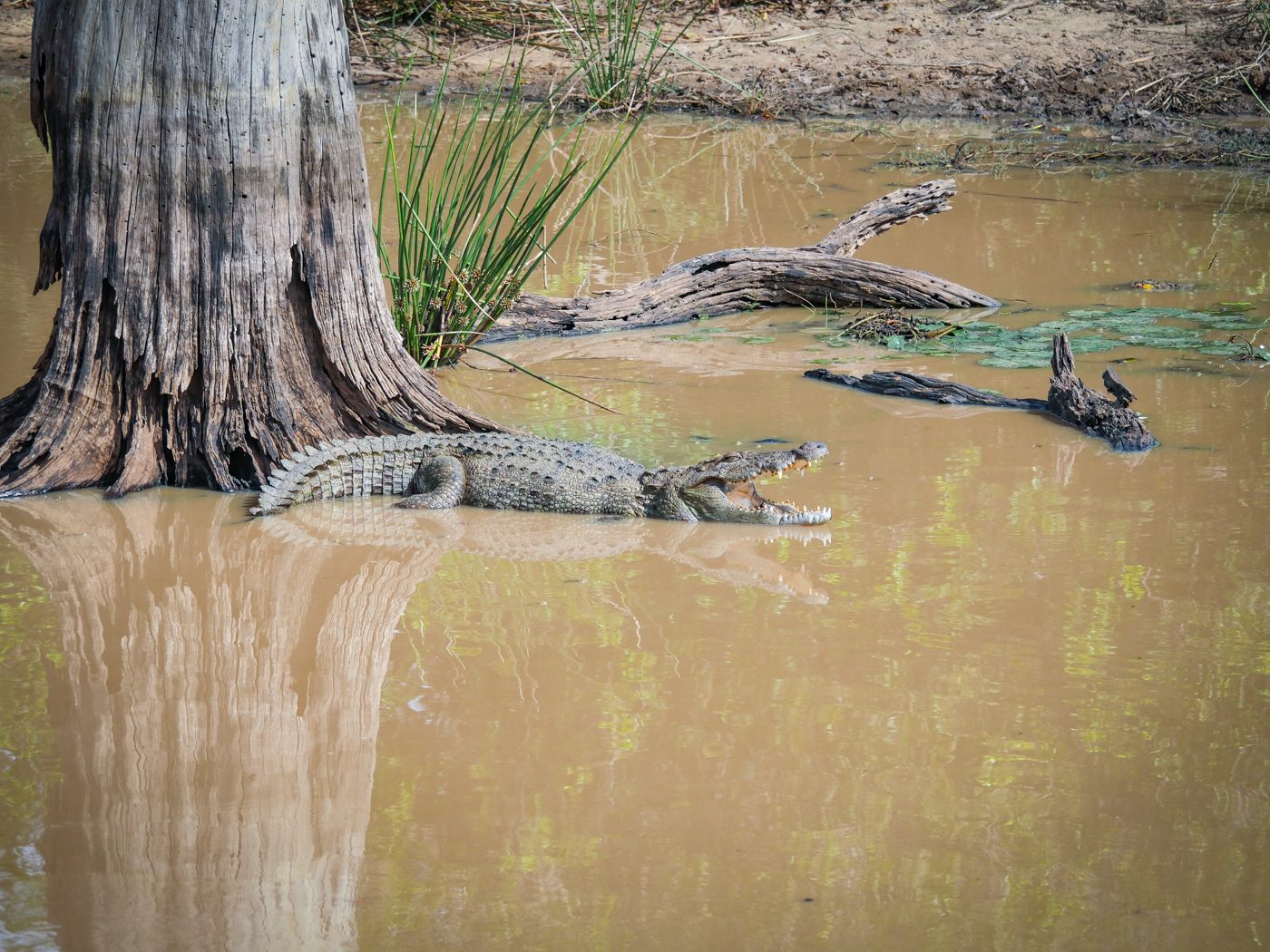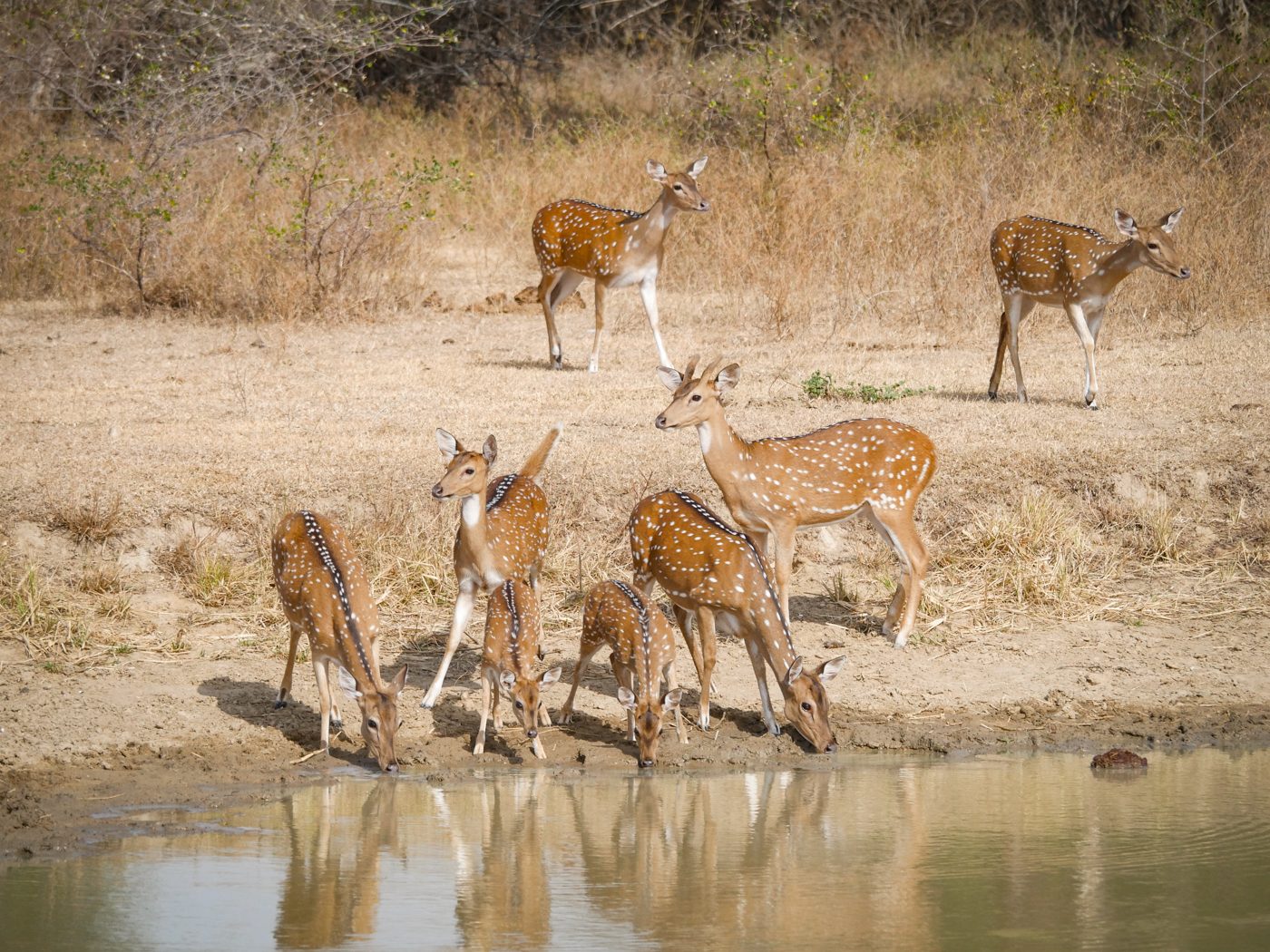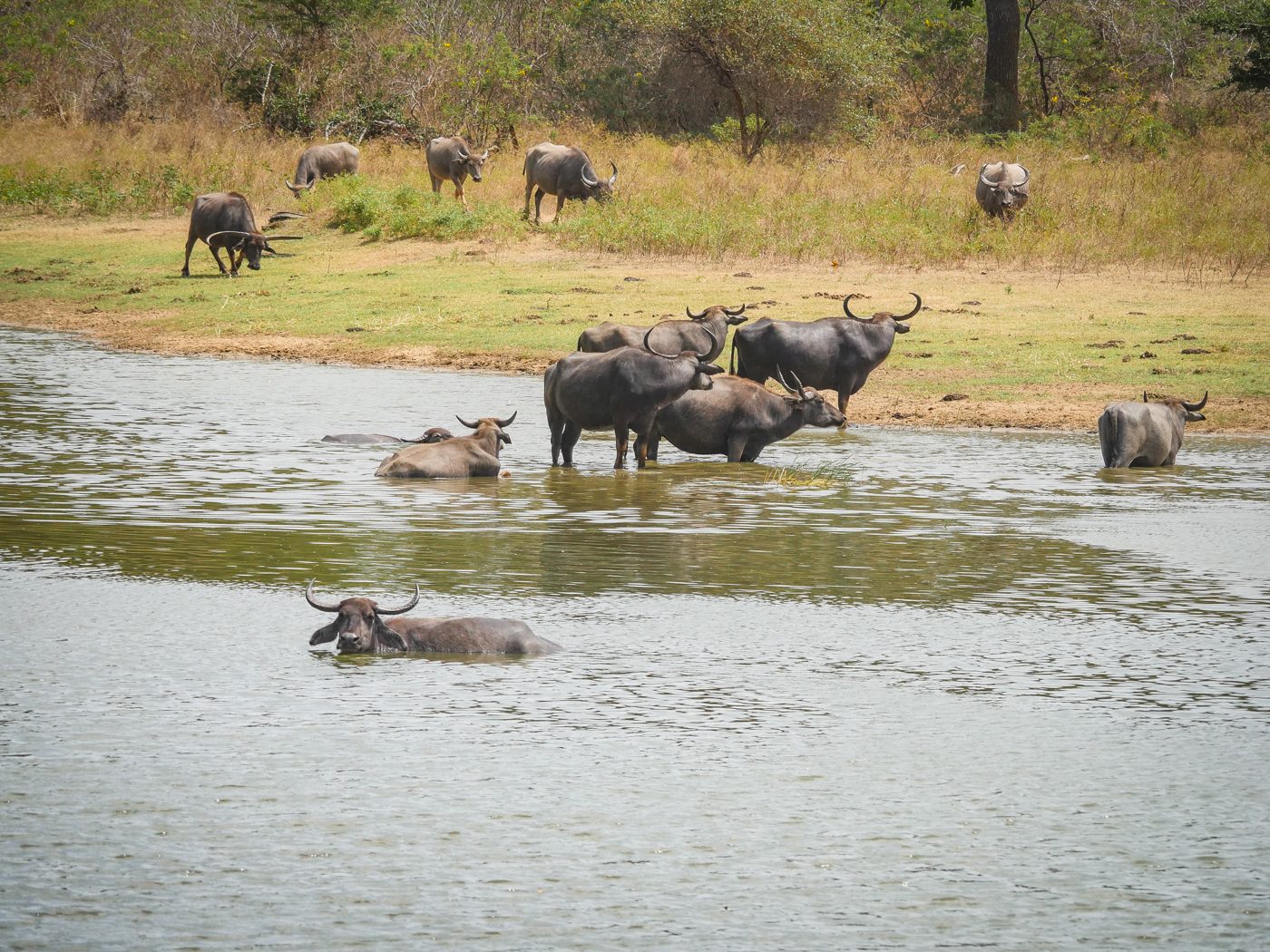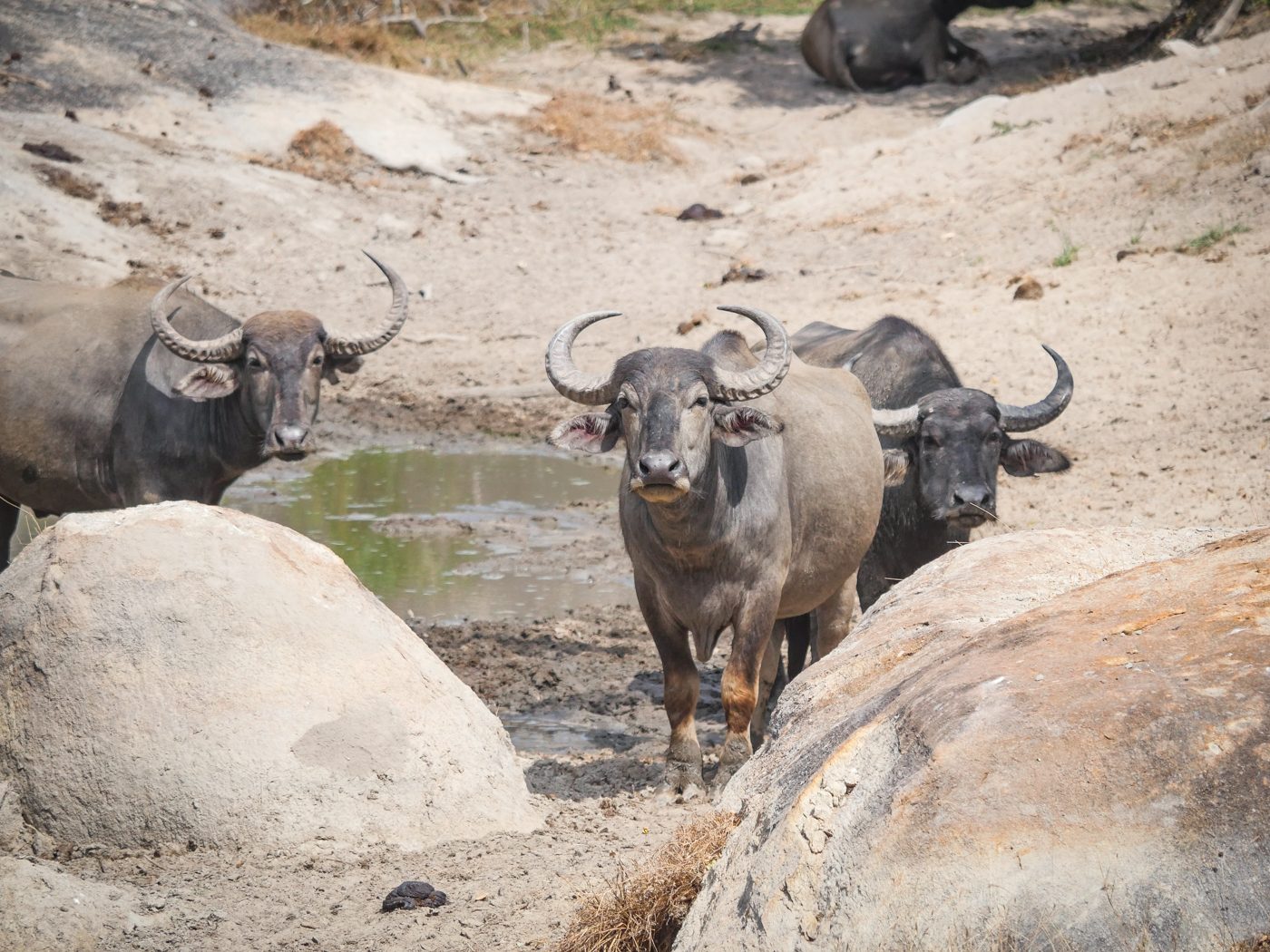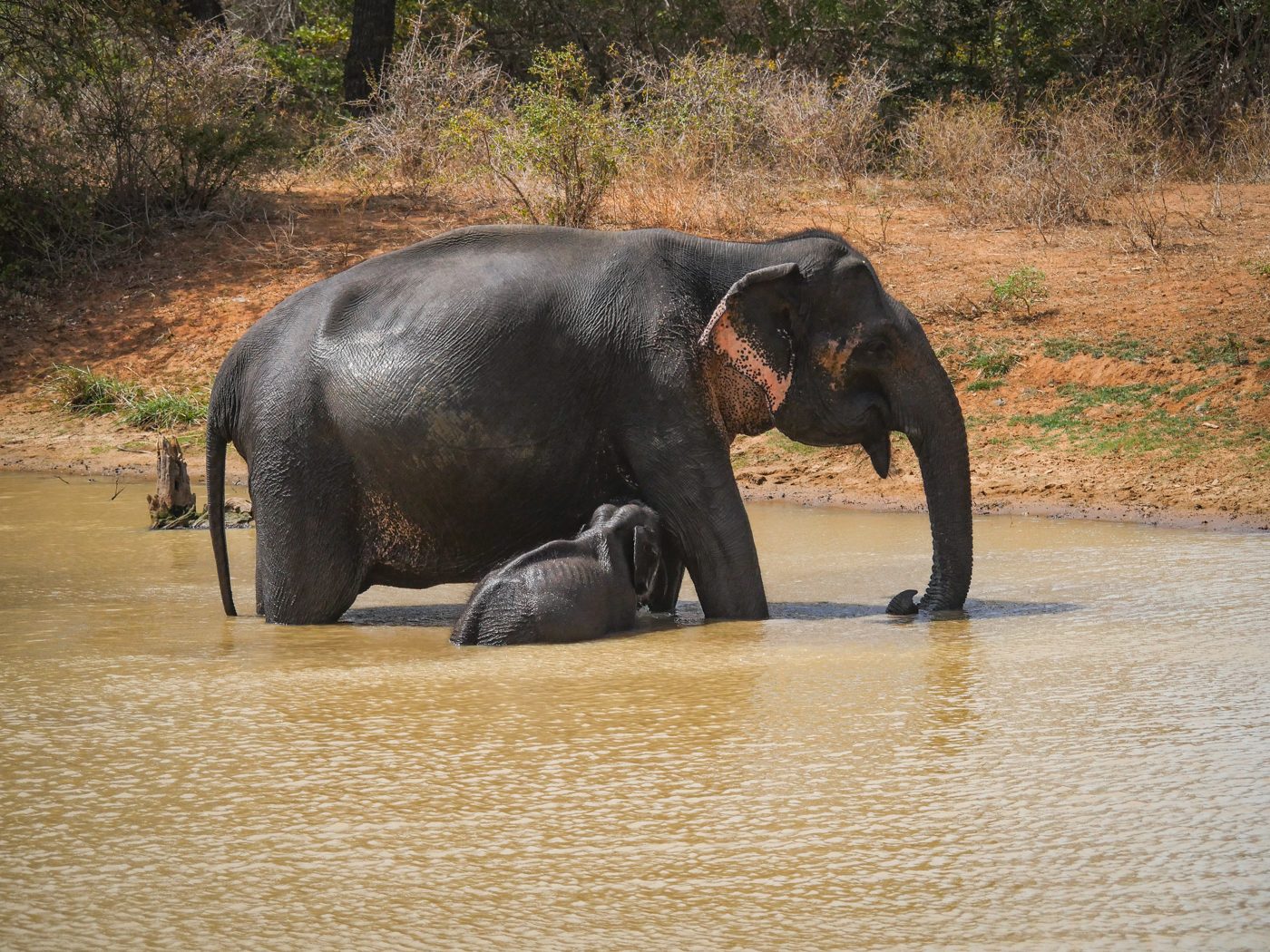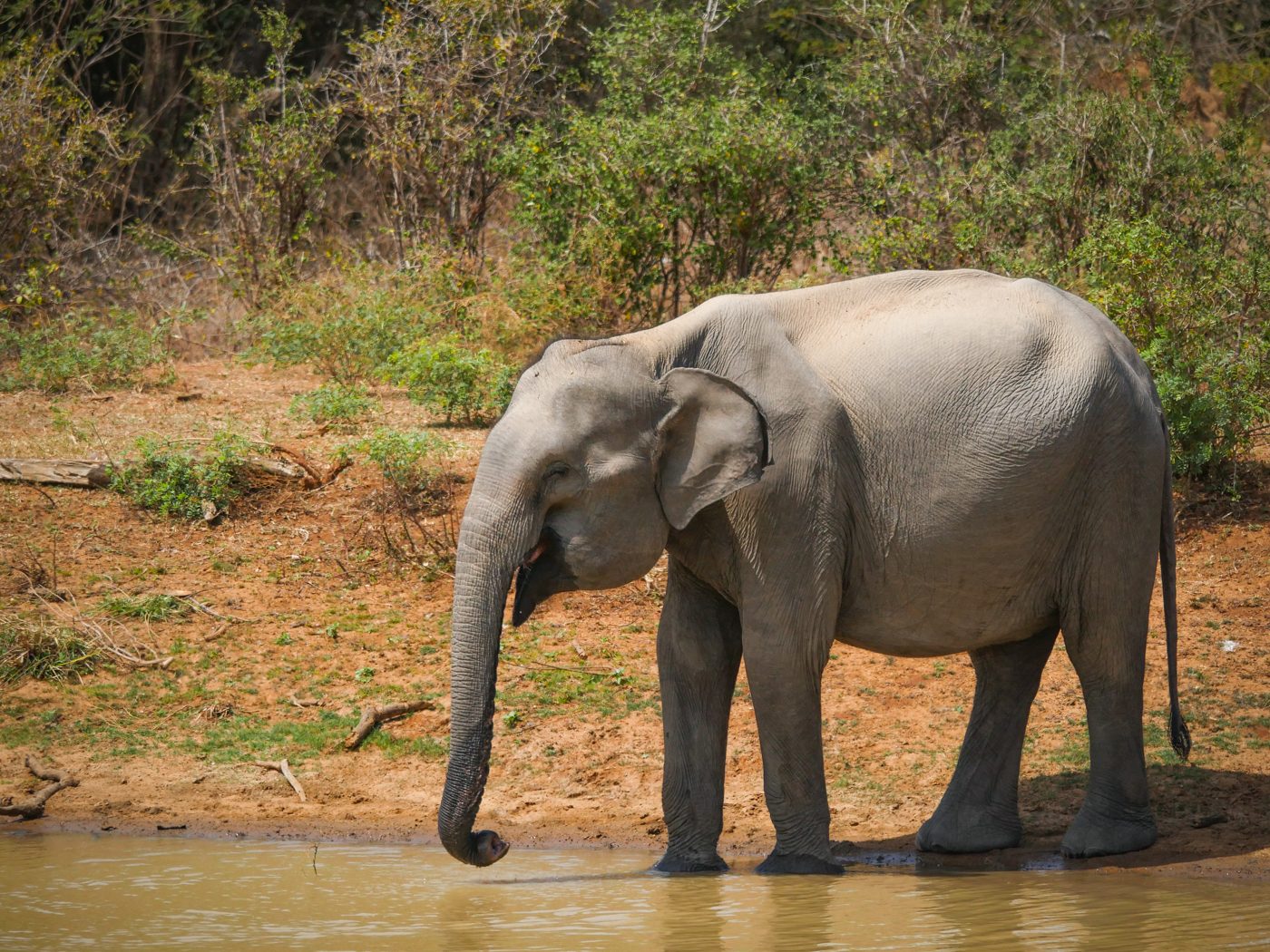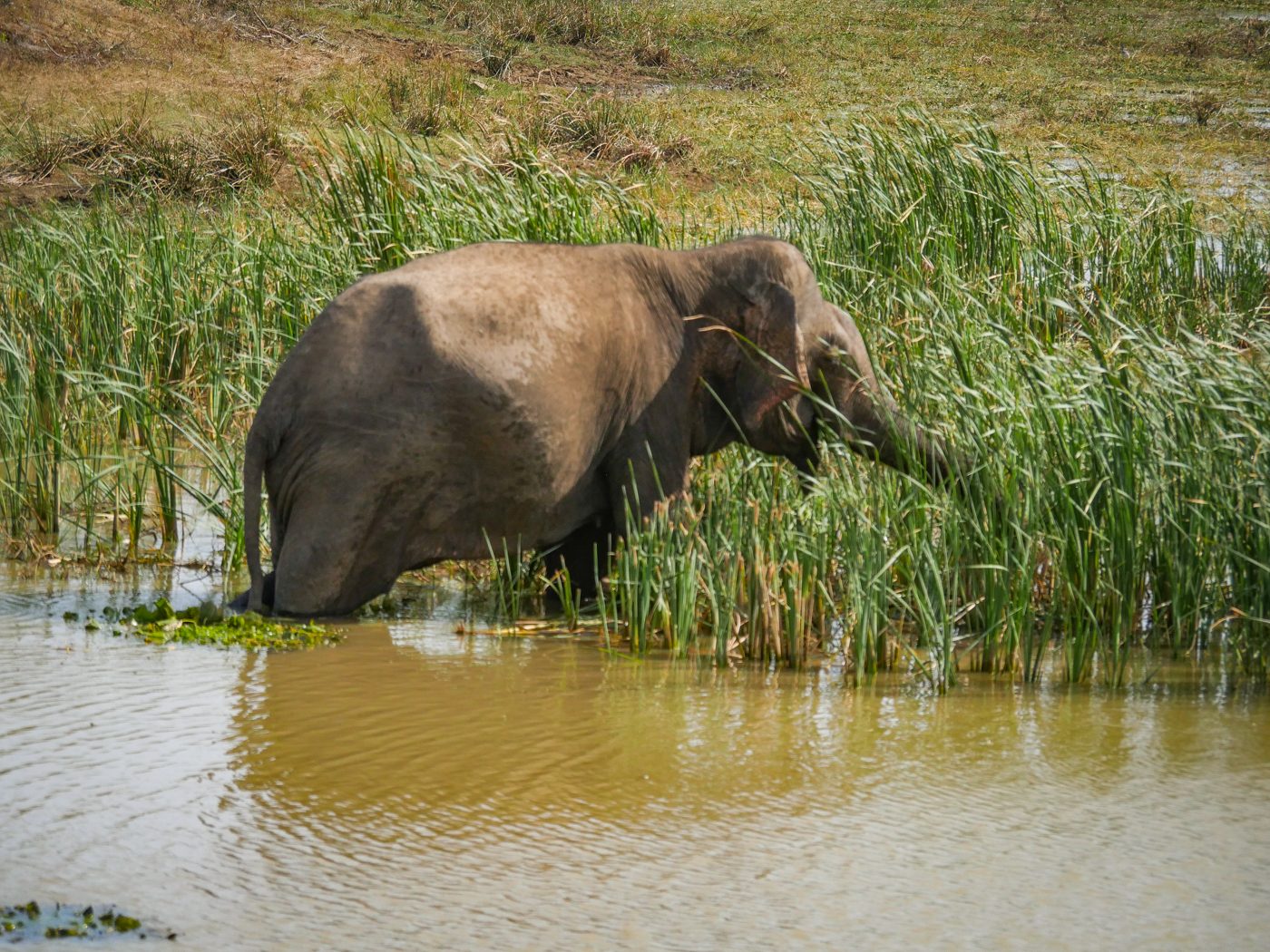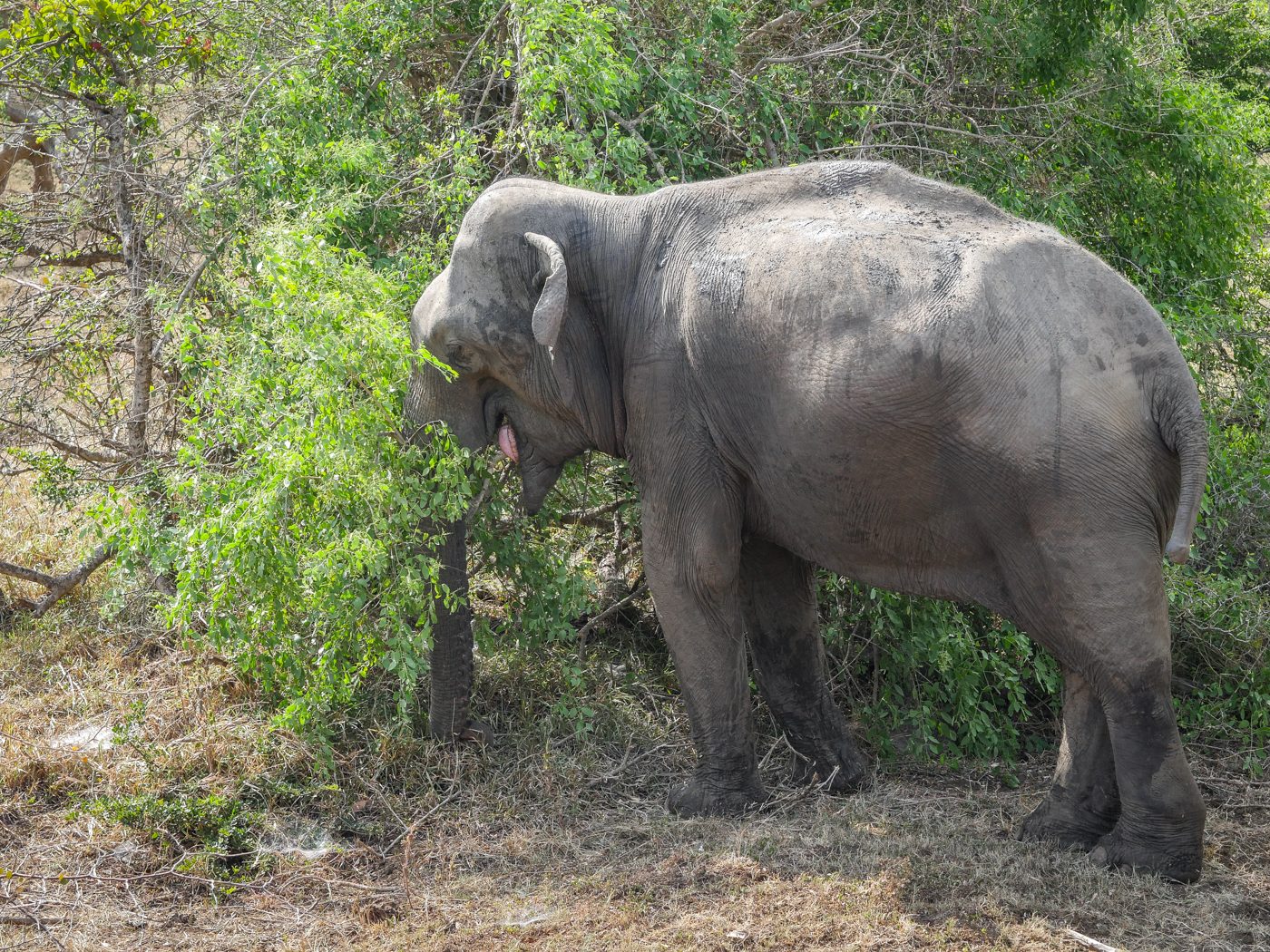…
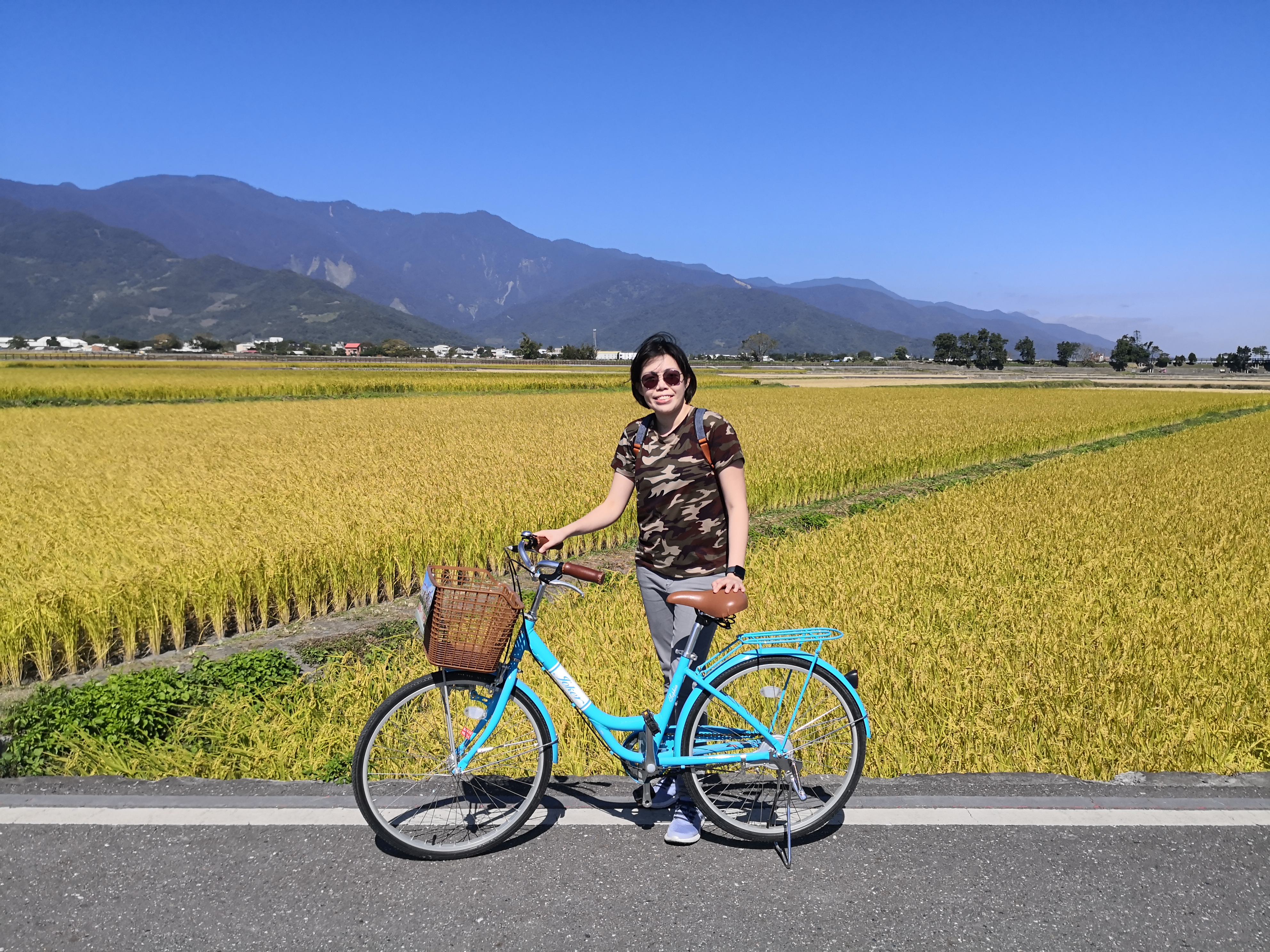

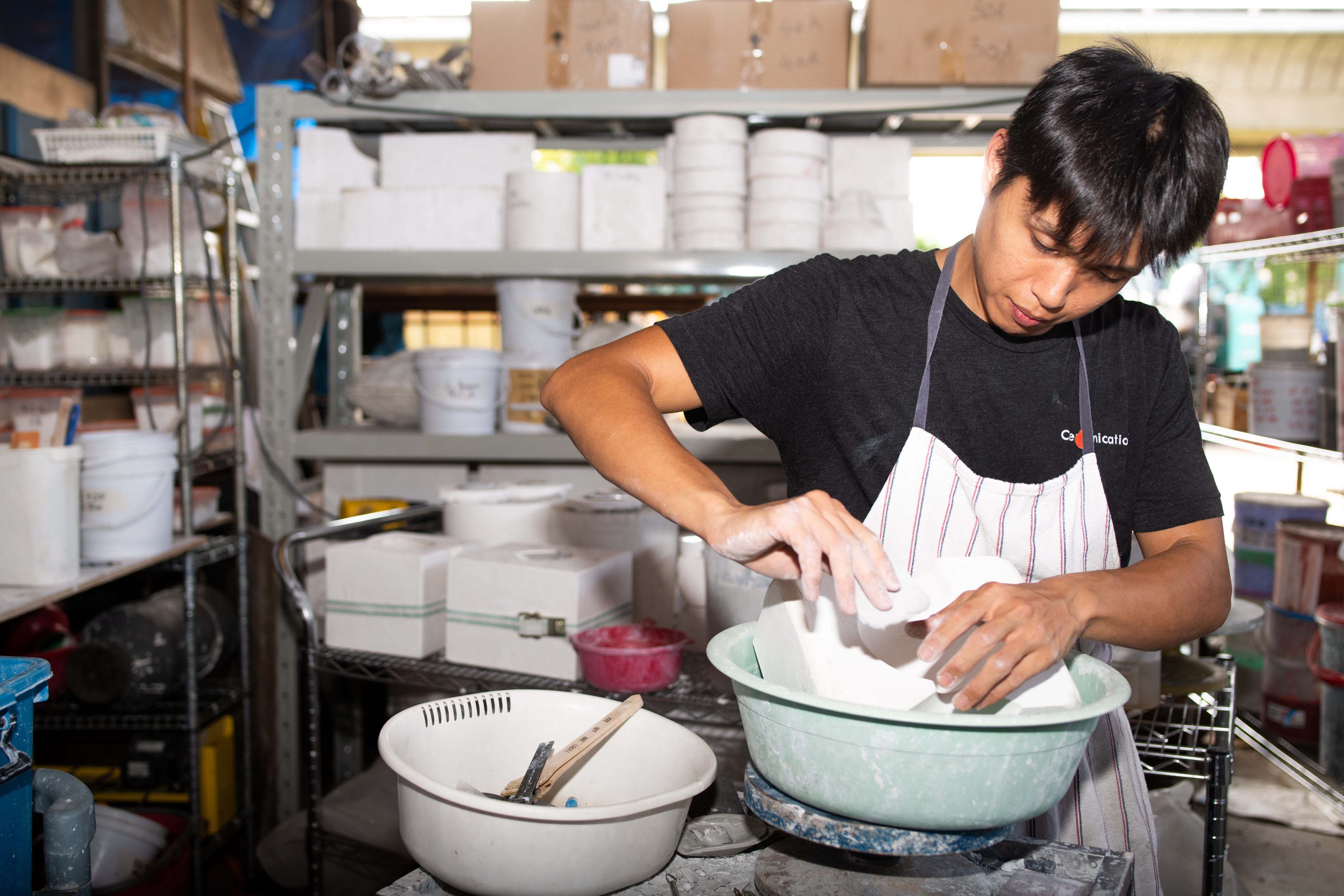
I am text block. Click edit button to change this text. Lorem ipsum dolor sit amet, consectetur adipiscing elit. Ut elit tellus, luctus nec ullamcorper mattis, pulvinar dapibus leo.

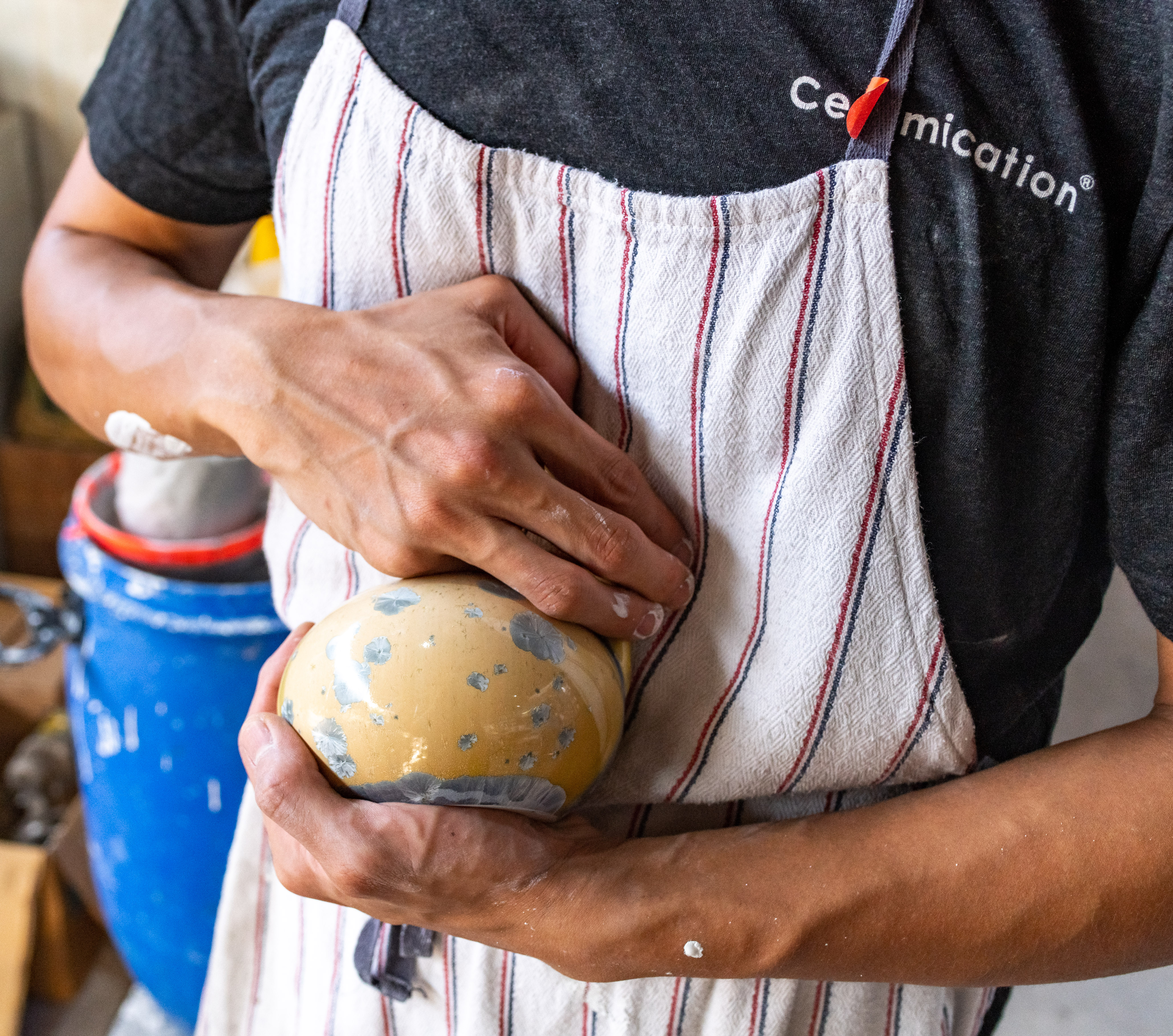
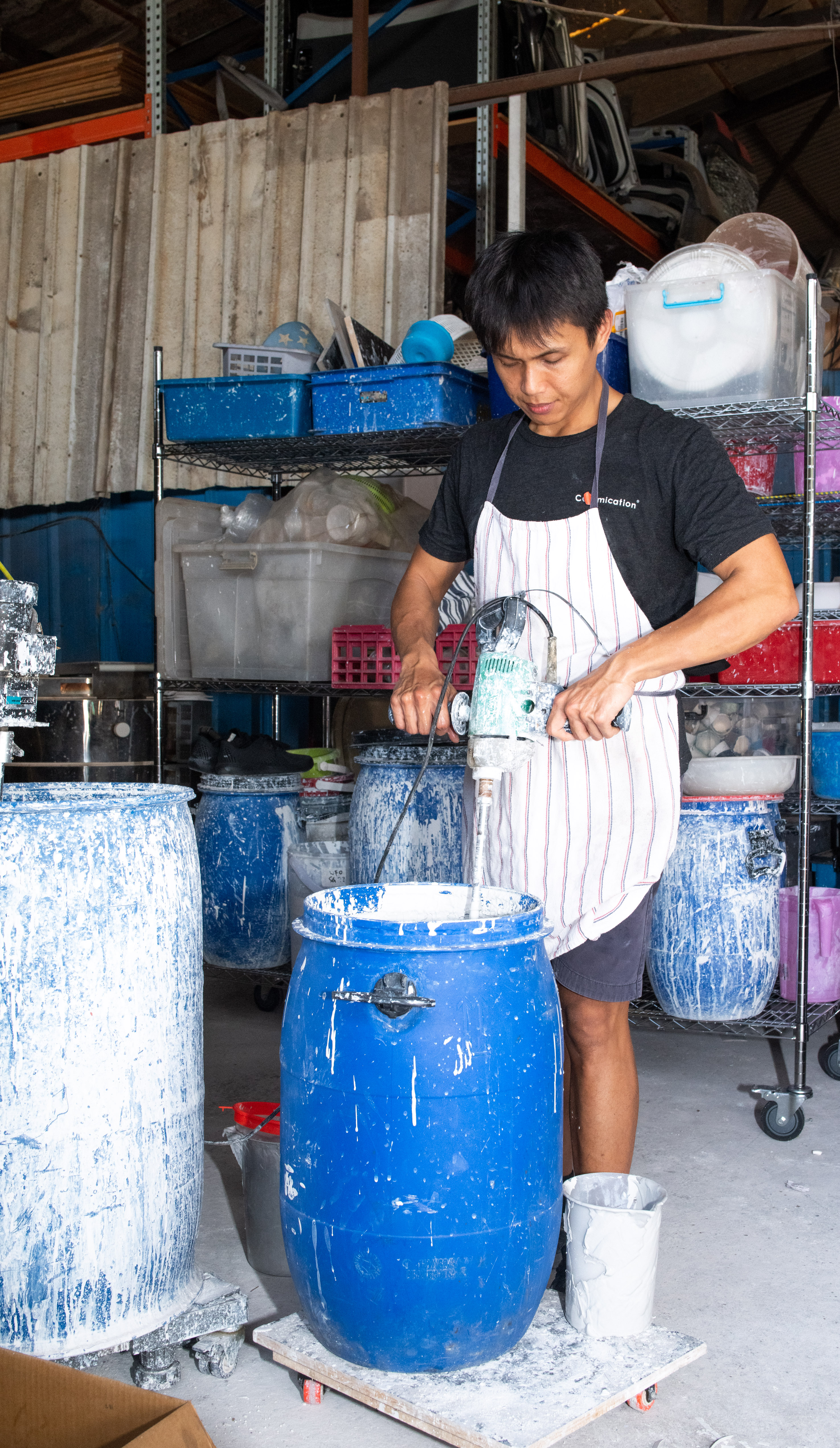
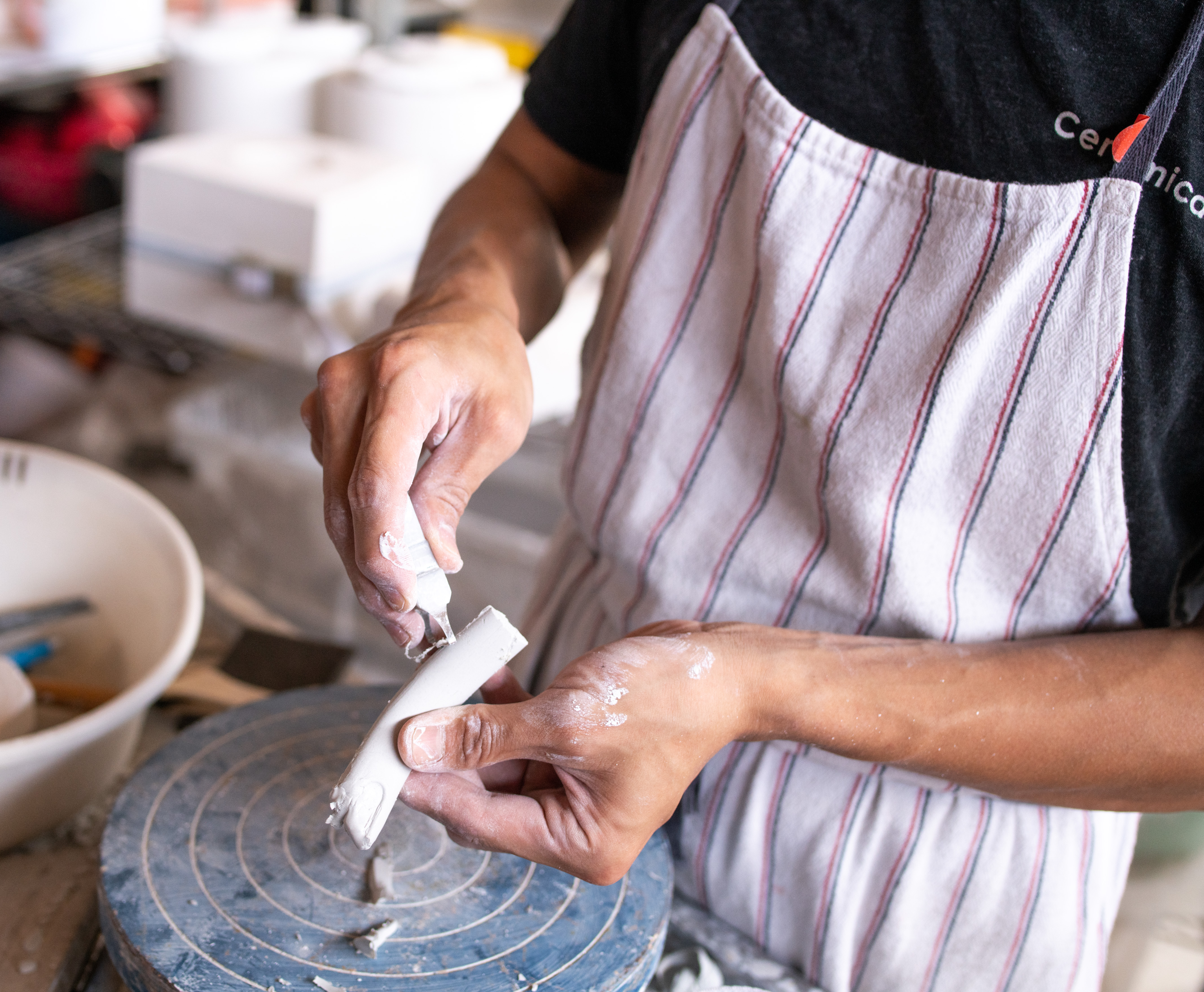
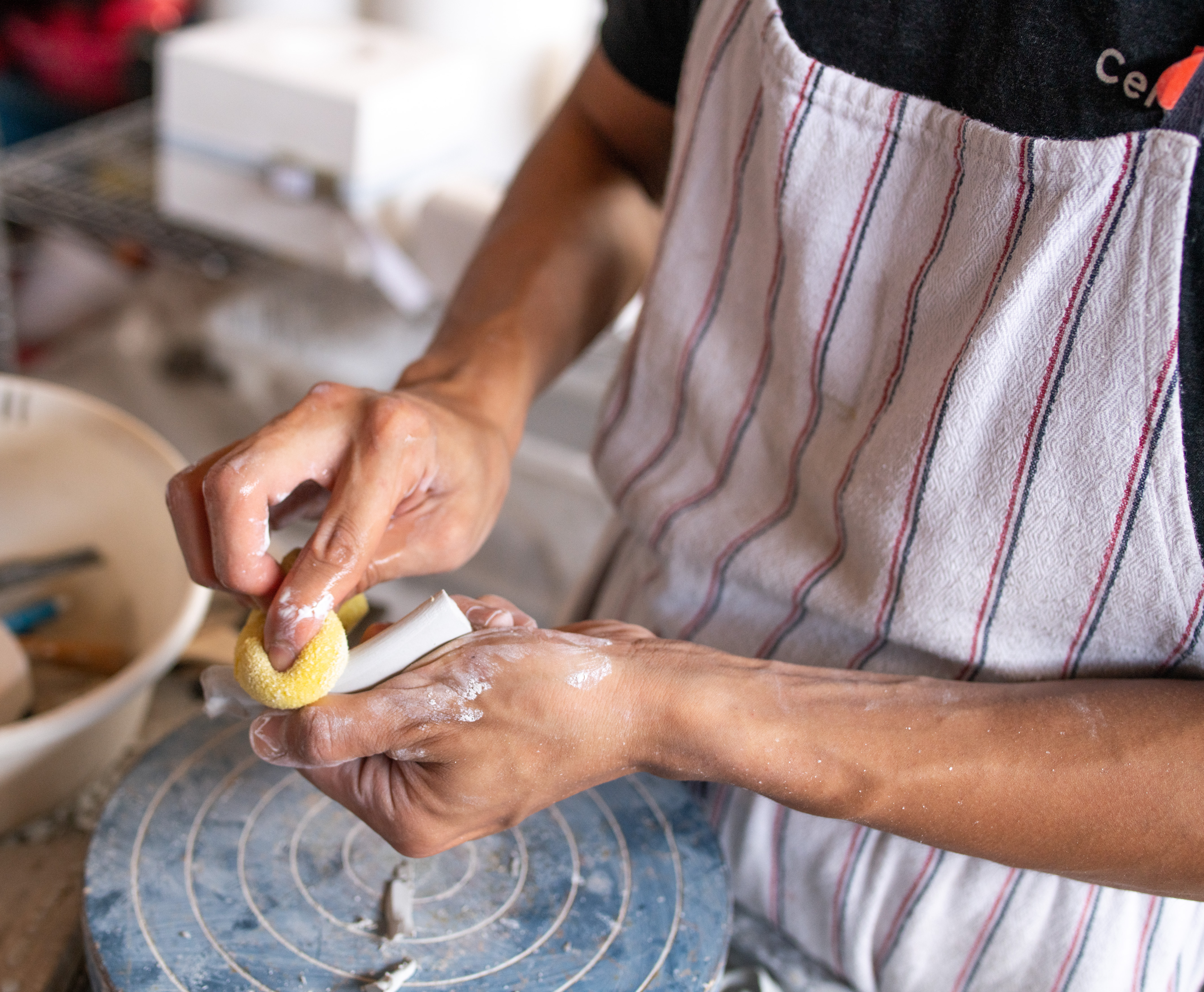
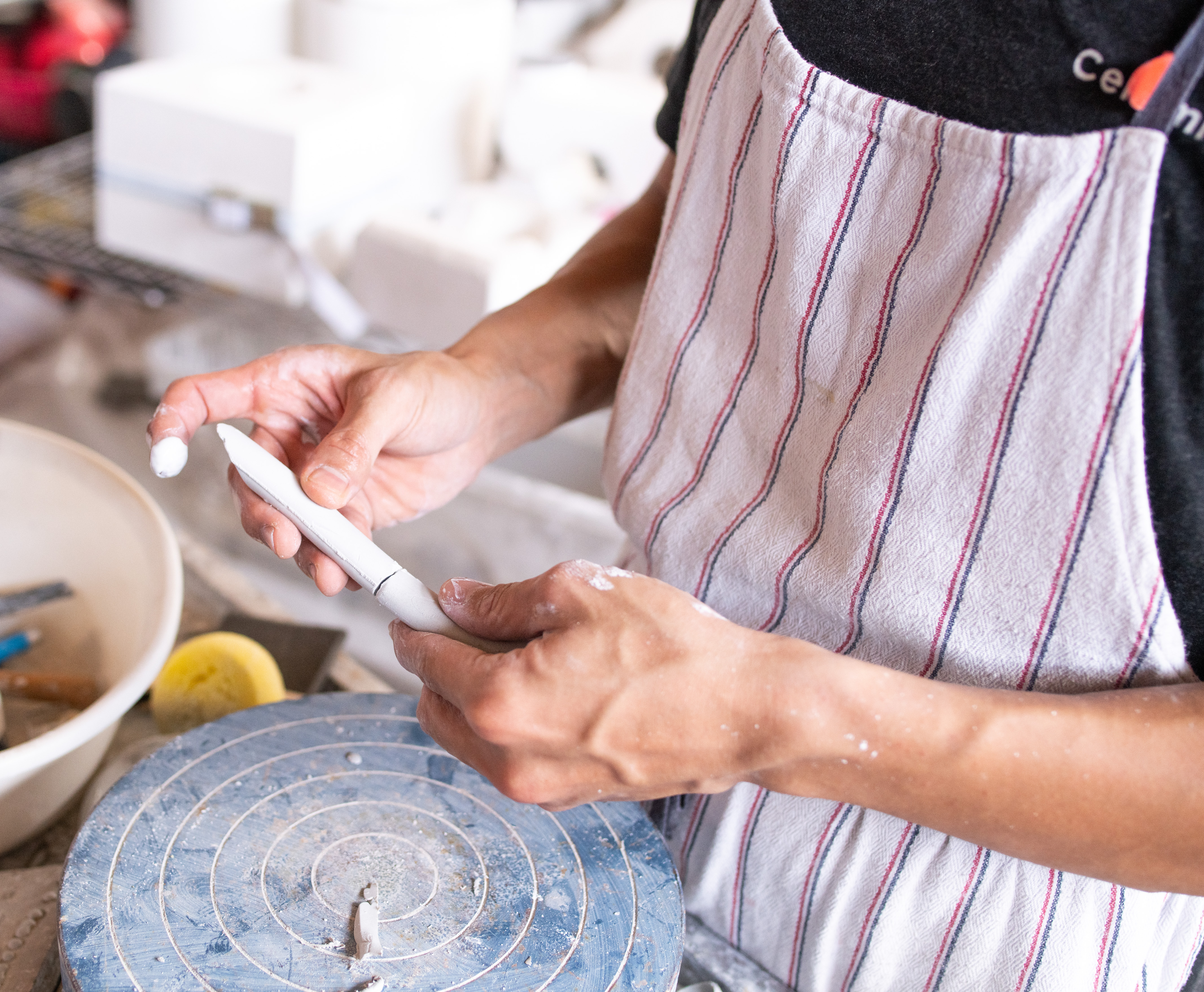

All the signs pointed to it. The lumps in her breasts, first detected circa end of 2019, which Wenjing thought could be removed with a minor surgical procedure. The doctor’s steely gaze as he raised his preliminary concerns during the first biopsy. The grimness in his voice, inflected with hesitancy, as he asked that she head down to his clinic — a negative pathology report would not have warranted an in-person consultation.
Wenjing’s heart raced as she awaited the doctor to withdraw his gaze from the report file. ‘Unfortunately, it is stage-two cancer,’ said the doctor finally, breaking the news to a woman in her thirties whose vision of a life did not include medical appointments and pumping chemotherapy drugs into her body. Tears swiftly bedewed Wenjing’s cheeks. She could feel the whoosh of air as the nurse rushed to her side, resting her gentle hands on her shoulder. A torrent of encouraging words poured out of the stranger’s mouth.
‘It’s okay,’ Wenjing replied with an effort. ‘I’m not upset. I’m actually tearing because I’m in pain,’ she quipped. The multiple incisions on her breasts from the second biopsy conducted just hours prior to this appointment were still raw and bruising.
It was only after she had written to her boss to inform him of her diagnosis later that evening that she grasped the gravity of the news. This time, there was a flood of tears. ‘True to form as a workaholic, my boss was the first person I informed about my diagnosis. Back when I was an auditor, I used to oversee projects on my own. I thought I had better let him know, so he could do the necessary team reshuffling.’
The next person — and the hardest one to break the news to — she told was her mother. ‘She knew I had the doctor’s appointment. I tried to broach the topic as casually as I could, but she could already tell from my swollen eyes that something was wrong.’ Wenjing’s mother herself is a breast cancer survivor. The history of breast cancer runs deep in Wenjing’s family and can be traced also to her aunt and grandmother.
As advised by the befriender assigned to her by the Breast Cancer Foundation, Wenjing took the next step of consulting with doctors. Just deciding on the doctors and the hospital where she would get treatments alone was overwhelming. And when she met with the doctors, she was inundated with a welter of differing medical opinions. At the same time, she did a lot of self-reading and research, but the huge volume of information only made her nervous about the road ahead. Very suddenly also, she was confronted with the need to consider impossible choices. Should the multiple tumours in each quadrant not shrink after the chemotherapies, she would have to undergo a mastectomy. And following the surgery, would she want to get breast reconstruction?
An auditor likes immaculate documentations, getting her questions answered and balancing numbers to a nicety. Now Wenjing’s world was thrown out of kilter, with her eventual decisions leading not to definitive outcomes, but an entanglement of only probabilities: the chemotherapy might work, she might need surgery, the cancer might recur five, ten years down the road. Her future for now seemed dim.
After much back-and-forth, Wenjing eventually went with the third doctor she consulted. Intravenous chemotherapy would form the first part of her treatment. Her first cycle spanned three weeks, starting with a prescription of four drugs: taxol, caboplatin, herceptin and perjata. Each bag of drug would take up to ninety minutes to infuse. Before a new bag is administered, she would have to get a saline flush. ‘Each round of infusion was a full-day affair. I would start in the morning, and by evening, I was the only patient left in the room.’
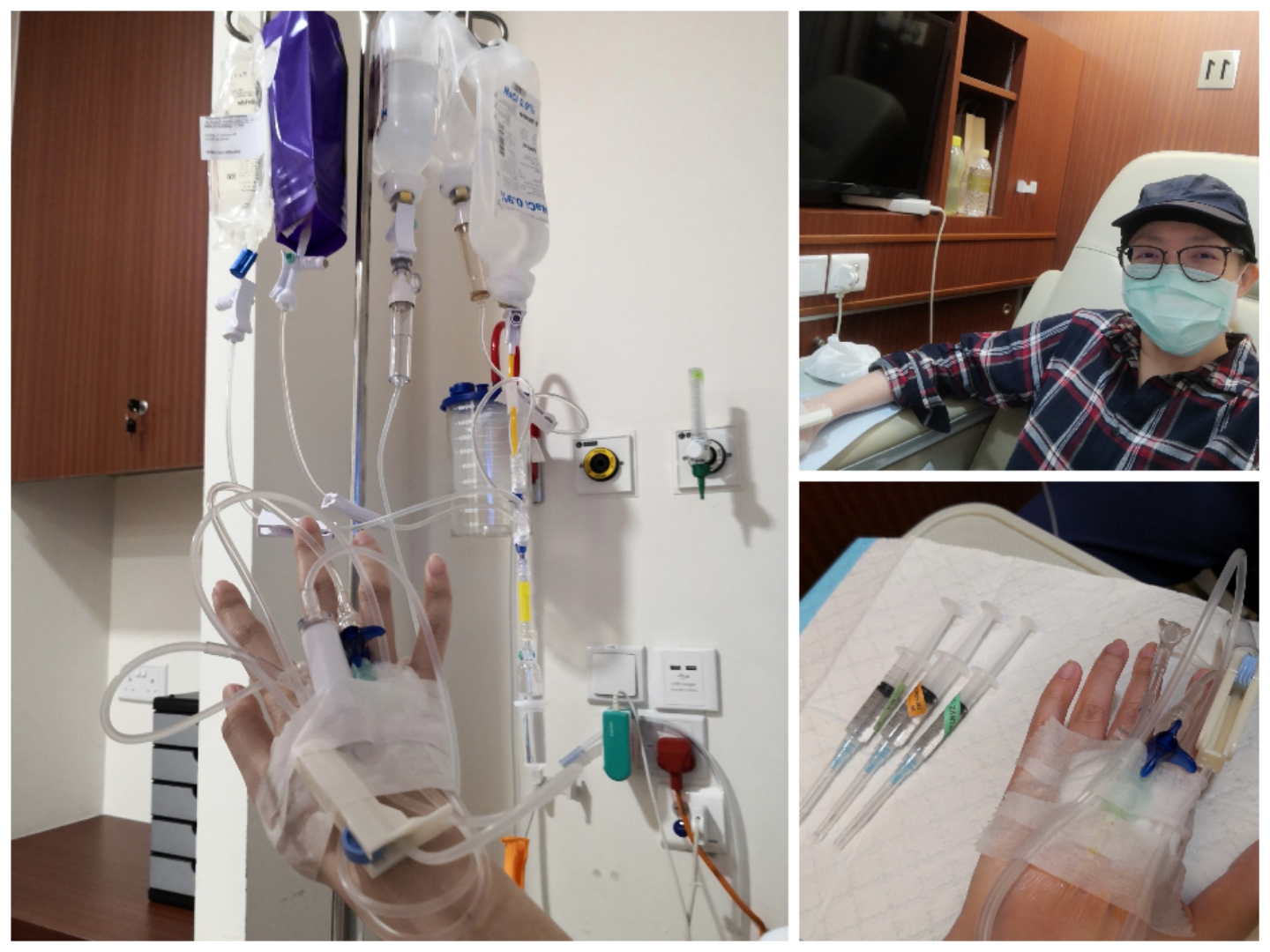
What was supposed to save her life quickly blighted her well-being. By her second chemotherapy session, she experienced severe diarrhoea and as a result became severely dehydrated. ‘From an outpatient treatment I was carted away to be admitted.’ Her persistent diarrhoea would ease around the weekends, but by the following Monday it was time to start another round of chemotherapy. The side effects did not get better for a long time. ‘I always had acne-prone skin throughout my adulthood, but once I started chemotherapy, my acne flare-ups were so severe my cheeks were reddened. There was the expected hair loss as well — what I did not expect was that my eyebrows and eyelids would fall out. From head to toe, everything just went haywire.’ The steroids meant to alleviate nausea and vomiting also threw her body into destruction mode.
Support came in the form of her new clique of breast cancer survivors. ‘I asked many questions, such as “am I allowed to consume Milo while undergoing chemotherapy?”’. These ‘frivolous’ questions, as Wenjing deems them, stemmed from a sense of overwhelming uncertainty. ‘The ladies were very forthcoming with their own experiences. Some suggested drinking coconut juice and barley, but those aggravated my gastric pain. Everyone’s body is different, so there isn’t a one-size-fits-all solution.’
Bankruptcy, Divorce and Loss of His Son: How Jimmy Ong Restarted His Life after Hitting Rock Bottom

Warning: This story features graphic photos of body parts being pierced.
A devotee lies prostrate on the ground, his modesty protected only by a red sarong. A man smears his back with a white substance, and gives it a few good slaps. He pinches and pulls the skin tautly; another man then pricks it with a hook, and with the same swiftness and alacrity of poking needle through fabric. Elsewhere, another devotee stands upright, a look of pain sweeping his face as he subjects himself to the mortification of his flesh. He inhales labouredly as yet another skewer is sunk deep into his skin. A grimace forms; the contortion of his face hints onlookers of the excruciating pain he feels. His eyes glint with quiet intensity as he darts a skyward glance, seemingly seeking the alms of strength from Lord Murugan.
There once were three evil brothers; giants, Asuras they were. The eldest Śūrapadmā, Simhamukhāsura with a thousand heads and two thousand hands, and Tārakāsura, who had an elephant head. Having performed penance, Śūrapadmā and his brothers received an invincible boon from Lord Shiva. But tempted by greed and desiring power, they began wreaking havoc, enslaving humans and oppressing Devas and driving them out of heaven, for the boon bestowed protection, and no hurt except for the power of Lord Shiva could befall and maim them. The three brothers soon reigned over heaven, hell and earth.
Facing an endless and losing battle, the tortured Devas came before Lord Shiva in complete surrender, and prayed for a heroic leader whose skills would surpass the evil Asuras. Answering their prayers, Lord Shiva opened his third eye, sending six divine sparks of fire that were deposited in the Saravana Poigai by Agni, the God of Fire. The sparks of fire eventually transformed into six babies, and were raised by six celestial nymphs: Dula, Nitatni, Abhrayanti, Varshayanti, Meghayanti and Chipunika.
Then, one day, Lord Shiva and Goddess Parvathi Devi came to the river, and the latter embraced her children, turning them into one, and in so doing birthed the incarnation of Lord Shiva as his second son: the six-faced Murugan with twelve hands. And when Murugan entered adolescence, he was tasked with the subjugation of Śūrapadmā and his brothers.
So Murugan marched with his army to Tiruchendur, and demanded the release of the Devas. The brothers refused, and a terrible war broke out. Because Murugan was weaponed with Vel, a divine spear gifted to him by his mother, the very embodiment of her power, he was formidable in war. Tārakāsura had created an illusionary mountain where he trapped many Gods. Murugan hurled his Vel and tore the mountain asunder, and then slayed him. Through the thousand heads of Simhamukhāsura he drove his Vel, and smote him.
On the sixth day of war when all his comrades had fallen, Śūrapadmā transmuted himself and took the form of a mango tree. Undeceived, Murugan hurled his Vel into the tree, and spilt it. One remnant became a peacock, and the other a rooster. Victorious, Murugan took the peacock as his vahana, or vehicle, and the rooster became an emblem on his flag.
A portmanteau of the name of the month “Thai” and the name of a star “pusam”, Thaipusam is a day dedicated to Lord Murugan, specifically the occasion where Goddess Parvathi gifted him the Vel. This is a pageantry of flower garlands, strikingly colourful sarongs exalting ornate deity pendants and deafening, ground-shaking music. But belying this majestic grandeur is solemnity: devotees seek repentance on this day. Because Lord Murugan is a dispenser of favours, those who have made vows to Him must prove their gratitude by performing the Kavadi Attam, or Burden Dance. Before a devotee can attempt the Kavadi Attam, both his mind and body must be pure. Prior to Thaipusam, he must adhere to a vegetarian diet and observe celibacy for forty-eight hours.














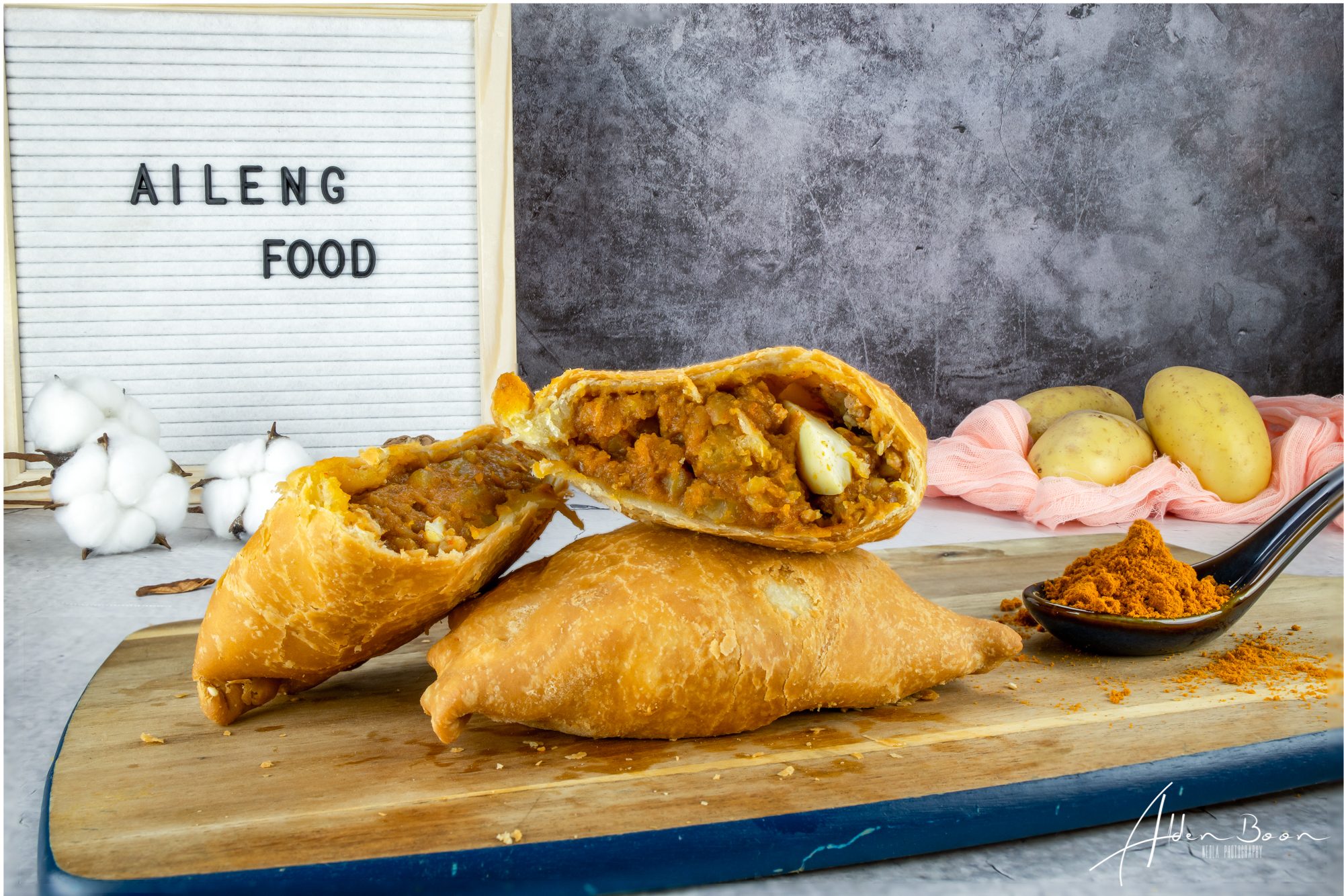
Size matters, especially when it comes to food. When I first laid eyes on Aileng Food’s Jumbo Curry Puffs, my jaws dropped. It made me question, for the first time in my life, if I had what it takes to polish off a curry puff on my own.
Of course, size is just one part of the food equation. Flavour is just as important. In this aspect, the Jumbo Curry Puff did not disappoint. A snow of flaky crust littered the charcuterie board when I broke the puff into half (carefully I swept them off the board … and on to a new plate for enjoyment [the flakes are the best and I make no apology for my lack of etiquette]). When tackling a curry puff, I always go straight for the jugular: the edges — here, they were gratifyingly crunchy. Insulated within the skin were chunks of potato, an egg and bite-size chicken, all packing a wonderful spicy punch.
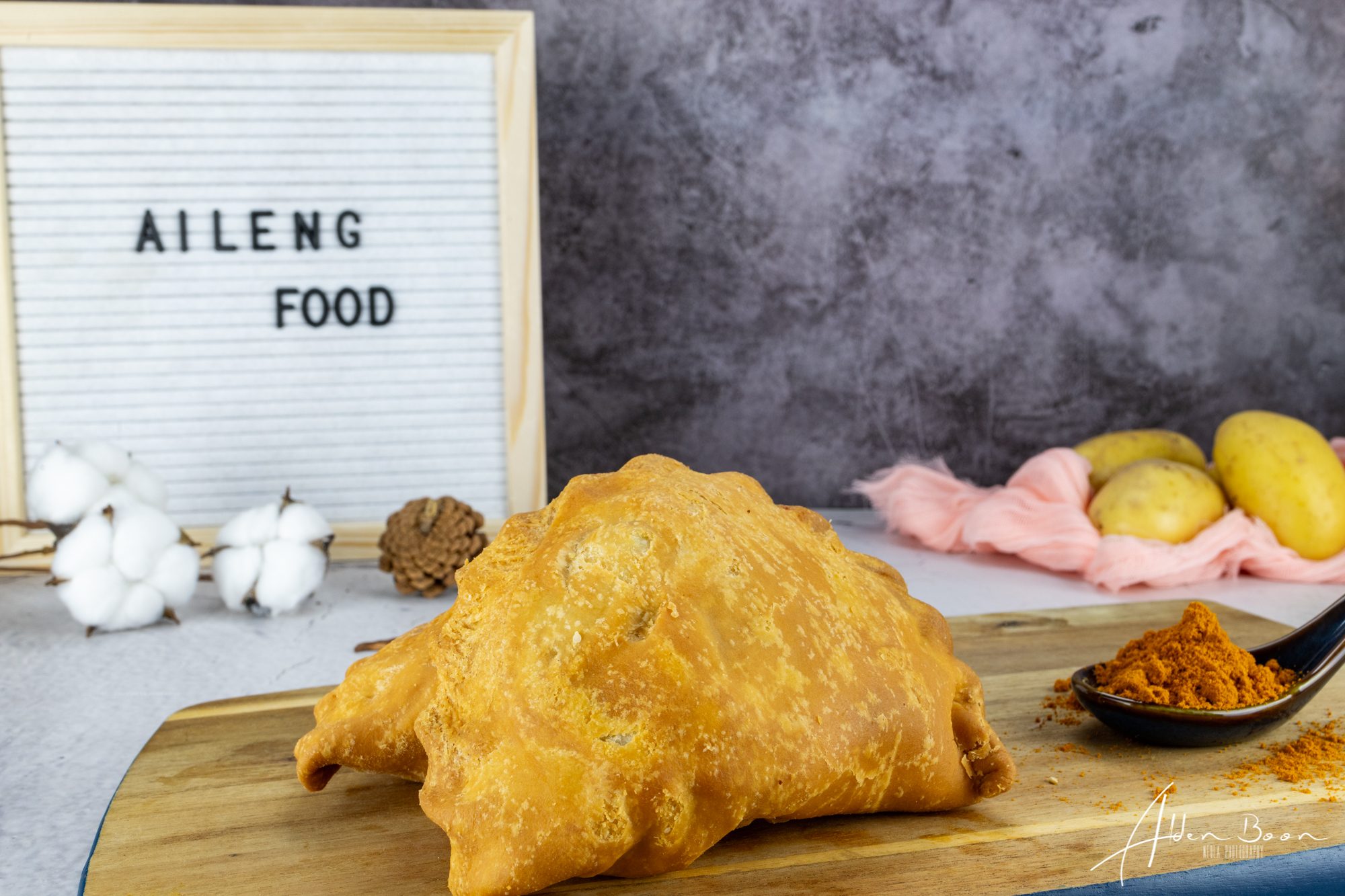
Other than curry puffs, Aileng Food also offers other deep-fried goodies such as spring roll and samosa. When I took the sesame balls out of the box, my mother was hit by a bout of nostalgia, and began reminiscing about how the pastry was my grandma and grandpa’s all-time favourite. I also learnt that my mother used to make these balls with grandma. Anyway, in imperfect shapes Aileng Food’s sesame balls came: one was more oblong than round, and rather deflated; another had the same shape and pliability of a bean bag chair. I took a pause, and wondered if they would look photogenic on camera. And then another thought flitted into my mind: We should celebrate imperfections too.
Deformity aside, they were good, the perfect golden skin studded with fragrant sesame seeds. “Less sweet than grandma’s,” according to my mother (which in her book is always preferred); “bring some for aunty; she would love it,” she urged. My only wish was for the filling-skin ratio to favour the filling.
Three times I have ordered from Aileng Food now, and each time the offerings arrived fresh off the deep fryer, piping hot yet not cloyingly unctuous. When we conjure up images of curry puffs being delivered to our doorstep, the name “Old Chang Kee” comes to mind. But I think Aileng Food is a serious contender, its offerings surpassing the latter’s.
nedla does not receive any compensation for its food profiles; all visits made are incognito, all meals paid for by the author.
Aileng Food offers delivery within the Woodlands area. Check out its foodpanda page.




A pot housing off-white puddings — silky and wobbly like soya beancurd — was laid on the induction cooker. Slowly, the heat transmuted the solid blocks, the culmination of simmering chicken bones for over eight hours, into a molten state. The soup came to a roiling boil, and my young, bespectacled waiter emptied a medley of ingredients into the pot. He gave the pot of choppy soup a few swirls, skimmed the scum, then scooped up a portion of the gorgeous soup and presented it to me in an ochoko. I downed the creamy soup as if it were a shot, and I felt bliss, like the connoisseur who had just found the wine befitting his palate.
Forty-five minutes into my meal enjoyment at 6:15pm, a female customer ambled into the restaurant, and was asked if she had a reservation. She did not, and had to wait for a table — and so began the queue for the dinner service. I was a little surprised, because all about me were empty tables! But such is the popularity of Tsukada Nojo, iconic for its golden Jidori chicken soup — if you wish to dine here during peak hours, you will need a reservation. Jidori chicken, if you believe the marketing hype, is the poultry’s equivalent of Kobe beef.
Yet Jidori chicken is not a breed like Kurobuta, says Dennis Mao, Founder of Mao Foods, responsible for coining and trademarking the moniker. “Jidori chicken” roughly translates to “from the ground” in Japanese; basically it is free-range chicken. Freshness is a salient benefit that Mao Foods offers its business partners. Employees clean the chickens by hand, store them in large vats of ice water (a key step to keeping each chicken’s water-retention level low at two per cent), and then deliver the meats to their clients within a day of slaughter.
And what comes of slow-cooking organic, fresh chicken for eight hours? Flavour. Palate-enveloping, mind-blowing and soul-touching flavour. Diners have to observe a ninety-minute time limit when dining at Tsukada Nojo, and because for a good part of my dinner I was preoccupied with photographing the food, it became a hurried endeavour to finish my meal. I blew on my bowl profusely, lest I got chased out before I could empty the pot of its liquid content. When the soup had boiled for quite some time, there formed this gelatinous layer, bubbling, sticky, clinging to my lips. Heavenly.
And drain the pot I did.
So good the soup was that it robbed the solids of their limelight. At S$25, the Bijin Nabe comprised tori tsukune (chicken meatballs), red radish, baby sweet potato leaves, baby corn, enoki mushroom, deep-fried tofu, sunflower sprout, lettuce, skewered prawns, yellow zucchini, black fungus and complimentary noodles. A modest spread, which probably would not be filling, but by the end of the meal you would probably be bloated from chugging the soup — I definitely was.




nedla does not receive any compensation for its food profiles; all visits made are incognito.
Tsukada Nojo
Plaza Singapura
Address: #03-81, Plaza Singapura, 68 Orchard Road, 238839
Daily: 11:30 – 15:00
Daily: 17:00 – 22:00
Westgate
Address: #03-04, Westgate, 3 Gateway Drive, 608532
Daily 10:00 – 22:00
Liang Court
Address: #B1-03, 177 River Valley Road, 179030
Daily 11:30 to 15:30
Daily 17:00 to 22:00
Chinatown Point
Address: #02-37, Chinatown Point, 133 New Bridge Road, 059413
Daily: 11:30 – 15:00
Daily: 17:00 – 22:00
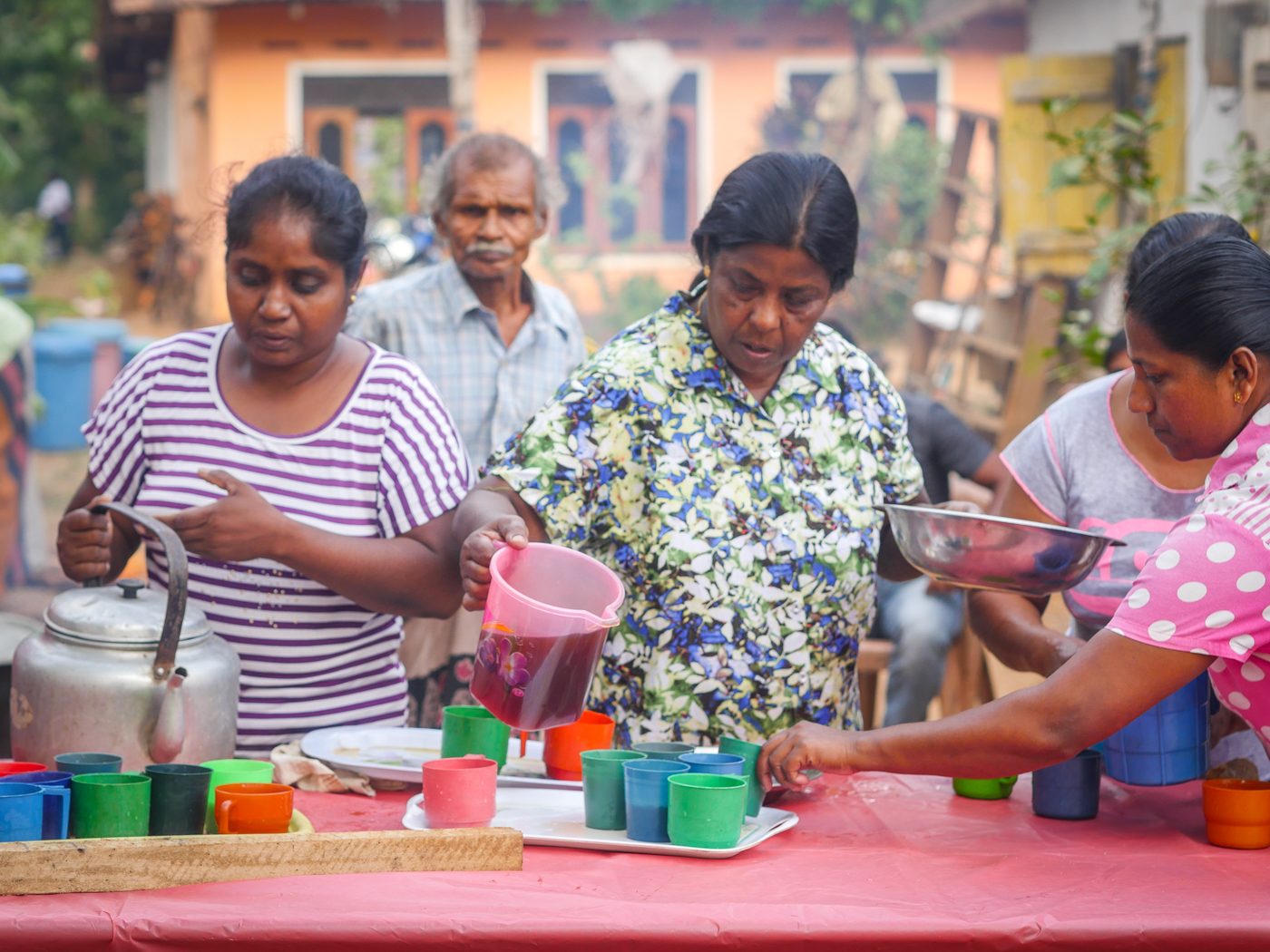
A young boy stood by the road, brandishing and waving a flag, beckoning us to pull up to the driveway. “They’re giving away free food and water,” explained Dulshan my tour guide. “What’s the catch?” were the first instinctive words that escaped from my mouth, this city boy’s cynicism manifesting. “No catch at all,” replied Dulshan, who then unbuckled his seat belt, disembarked his vehicle and very quickly disappeared from view. Apparently, Sri Lankans, no matter their statuses, practise dansel, the act of giving, during celebratory occasions or on days when the full moon is out. Entire stretches of road would be dotted with families doling out food and beverages.
Dulshan returned with a huge kanda leaf that sprawled his forearm and palm, on which there were hunks of cassava or manioc, a type of tapioca; and onions stir-fried with spices. At another pit stop, women were busy pouring belimal tea from kettles into colourful cups carefully arrayed. A young chap in a grey shirt emblazoned with a batman motif was tasked with serving the drinks to guests. The invigorating floral drink is said to have medicinal properties. At this stop, I was also handed jaggery, a cube of sweetener made from the treacle of the kithul tree.
“You have to thank them for the treats,” nudged Dulshan after I was done with my photography. See, the locals practise dansel in hopes of receiving good karma. I felt consternation wash over me, a sole foreigner in a sea of locals, yet thanks to this show of hospitality I was a part of a Sri Lankan family. I waited for the matronly lady who smiled at me earlier to lock gaze with me, but she was busy with refilling the cups. “Stūtiyi,” Sinhala for “thanks”, I hollered when she finally looked up at me. She reciprocated with yet another smile, and I felt warmth in my heart.
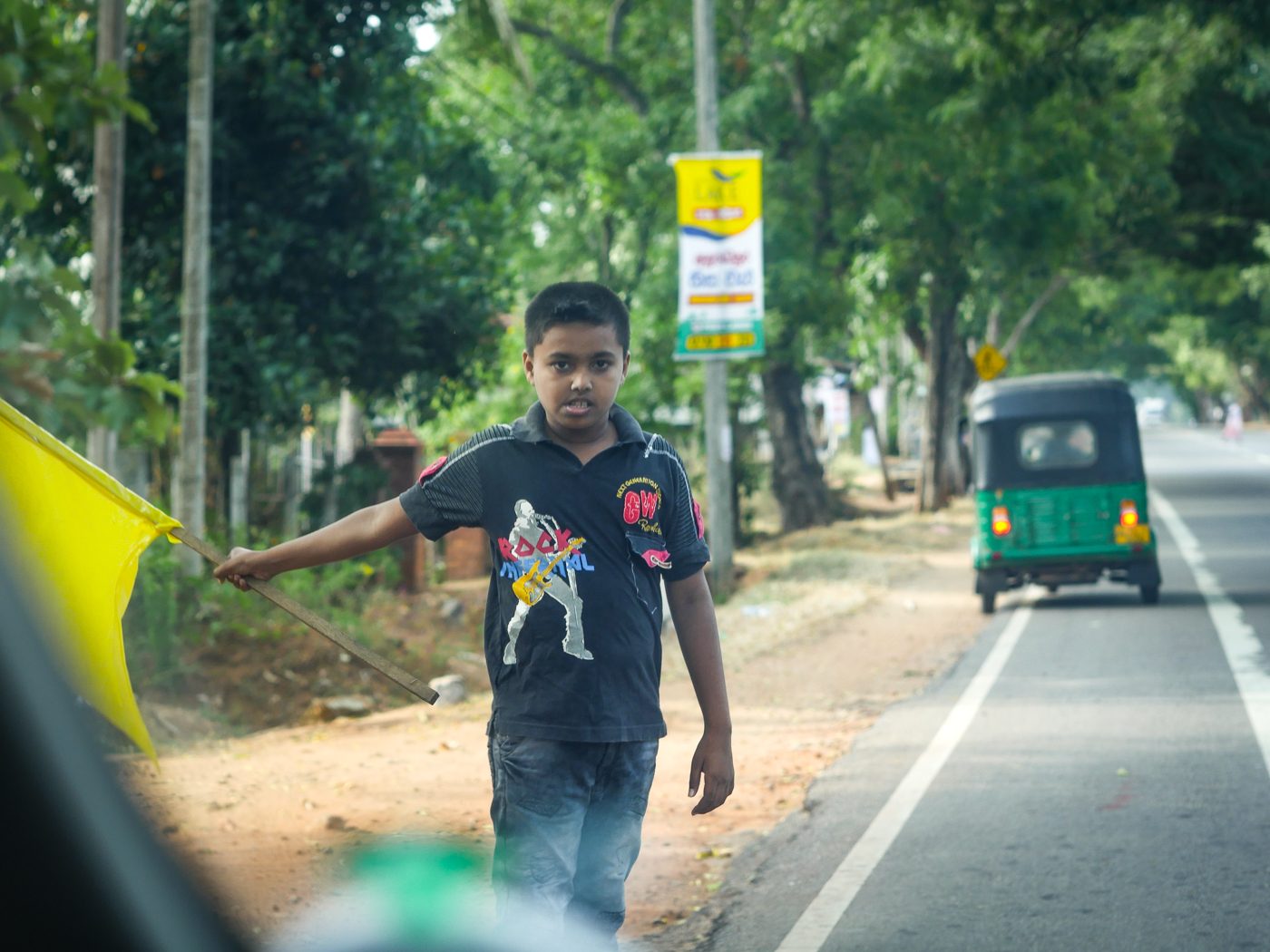
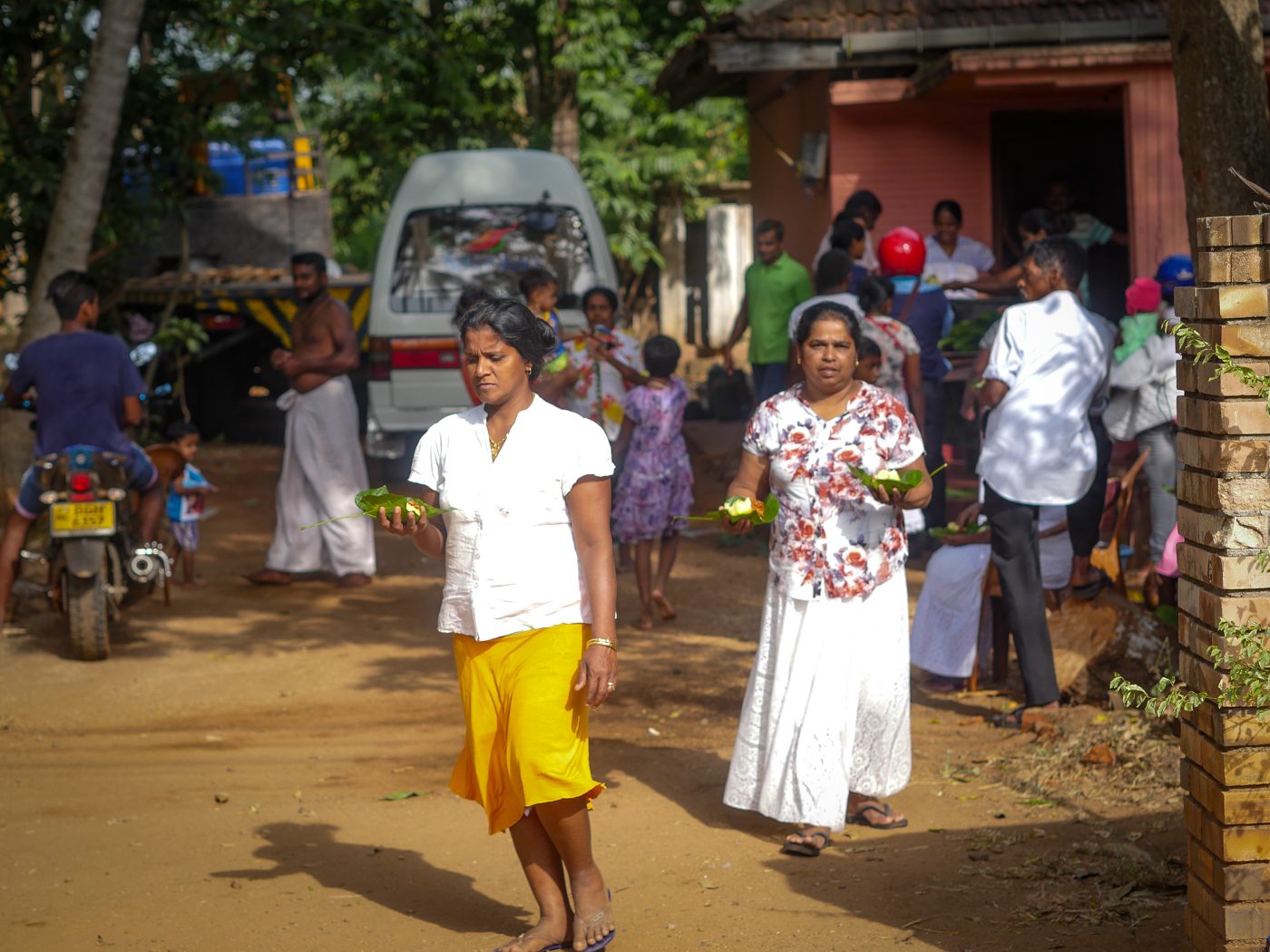
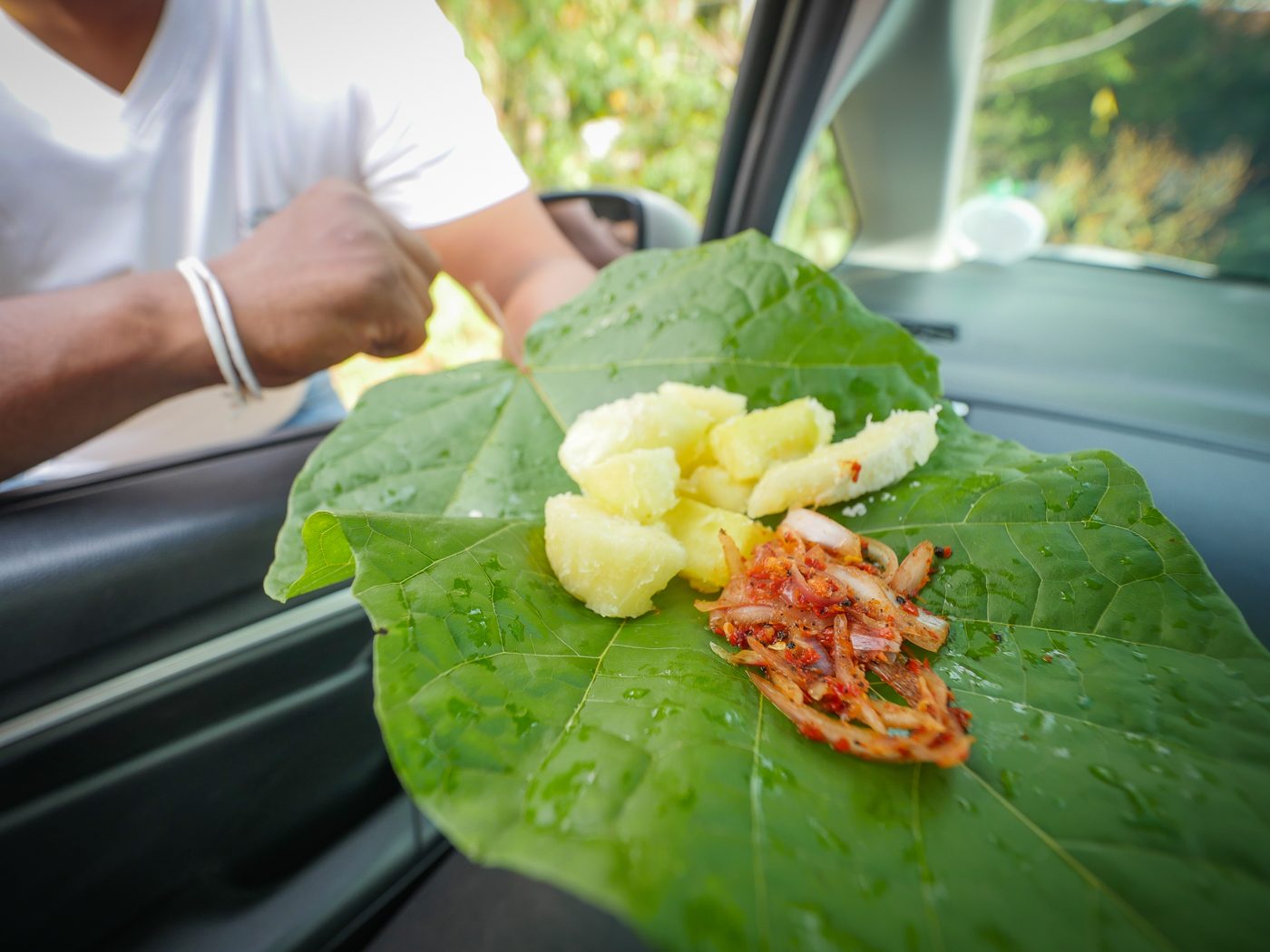
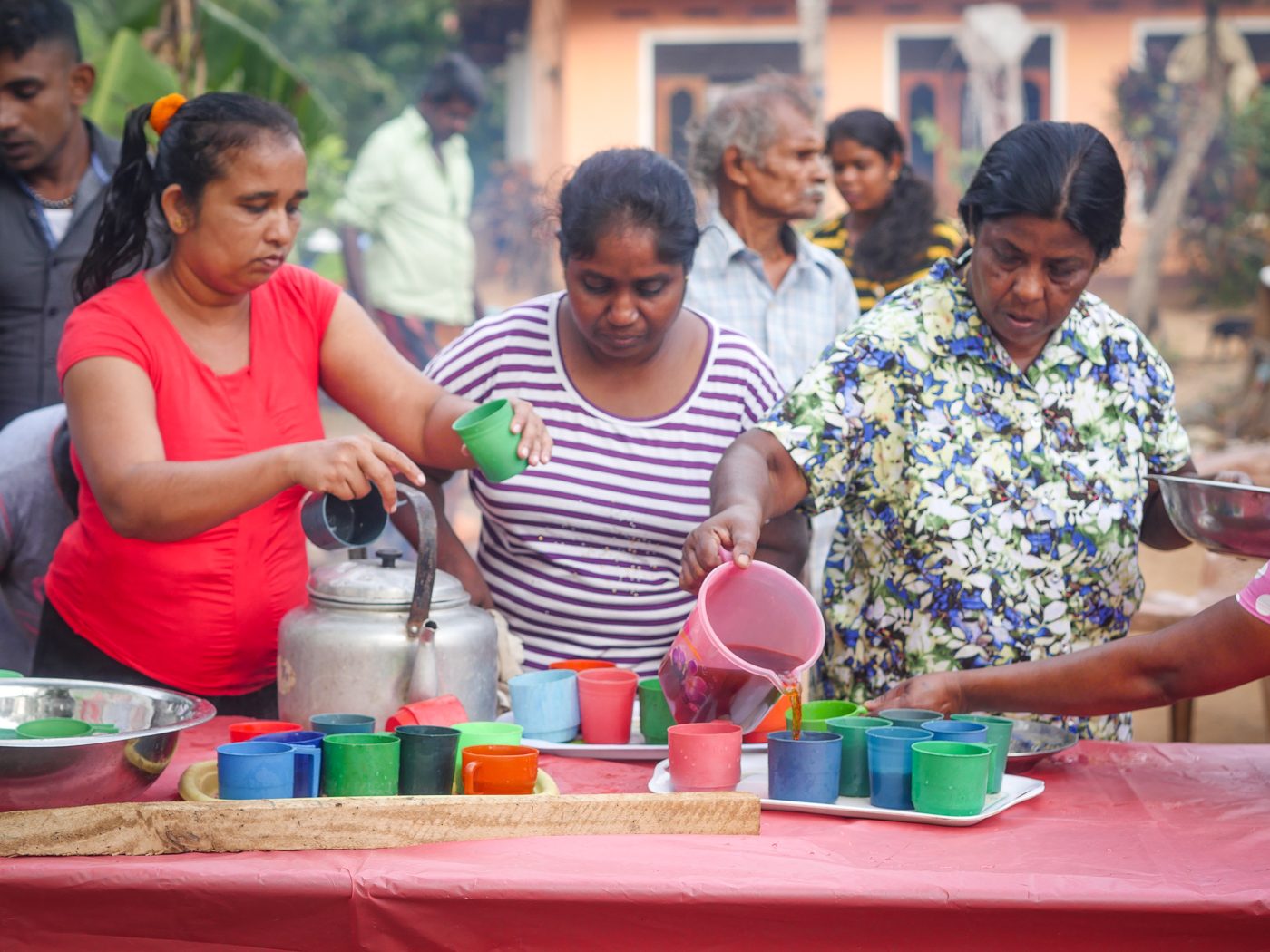
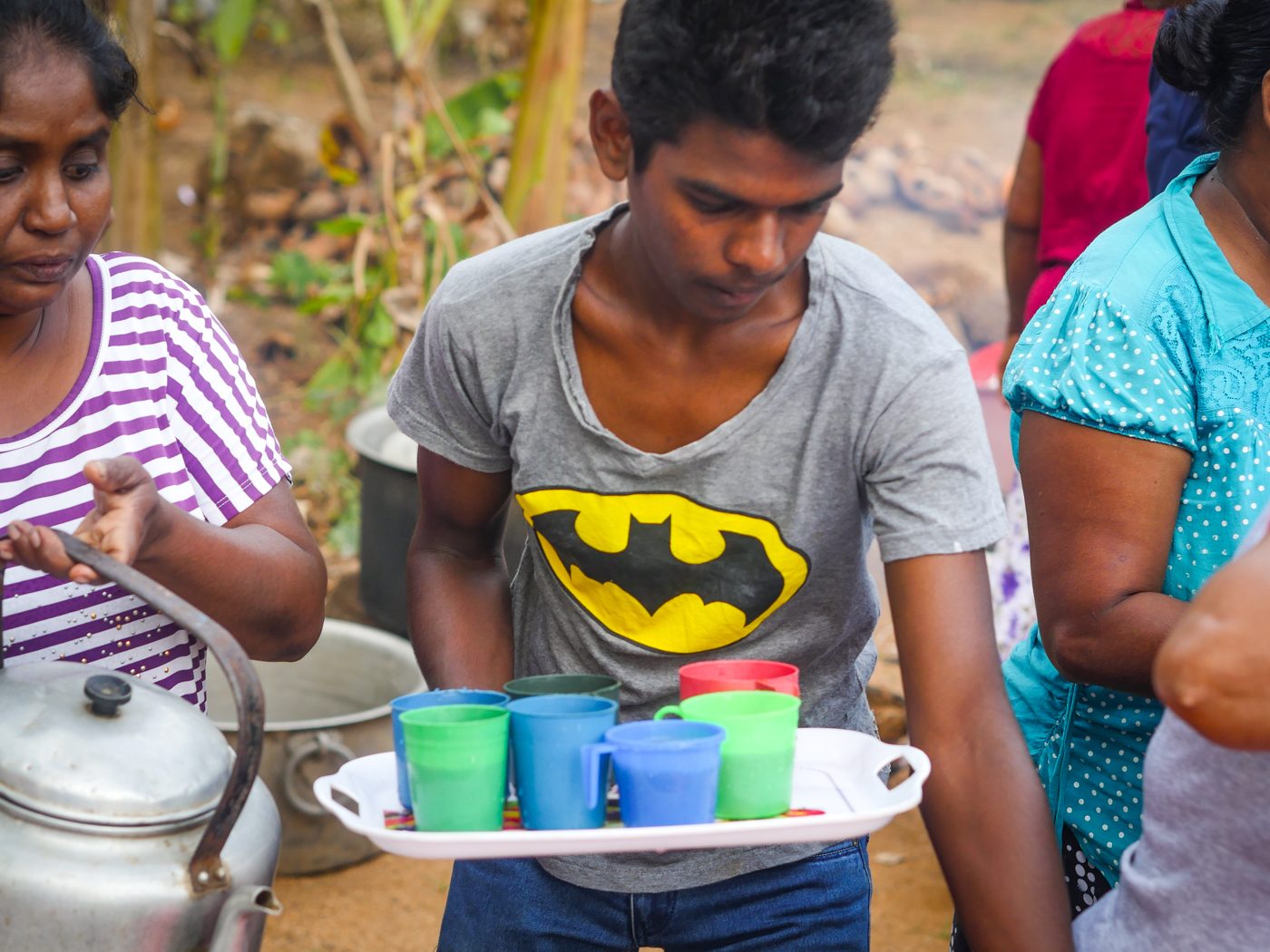
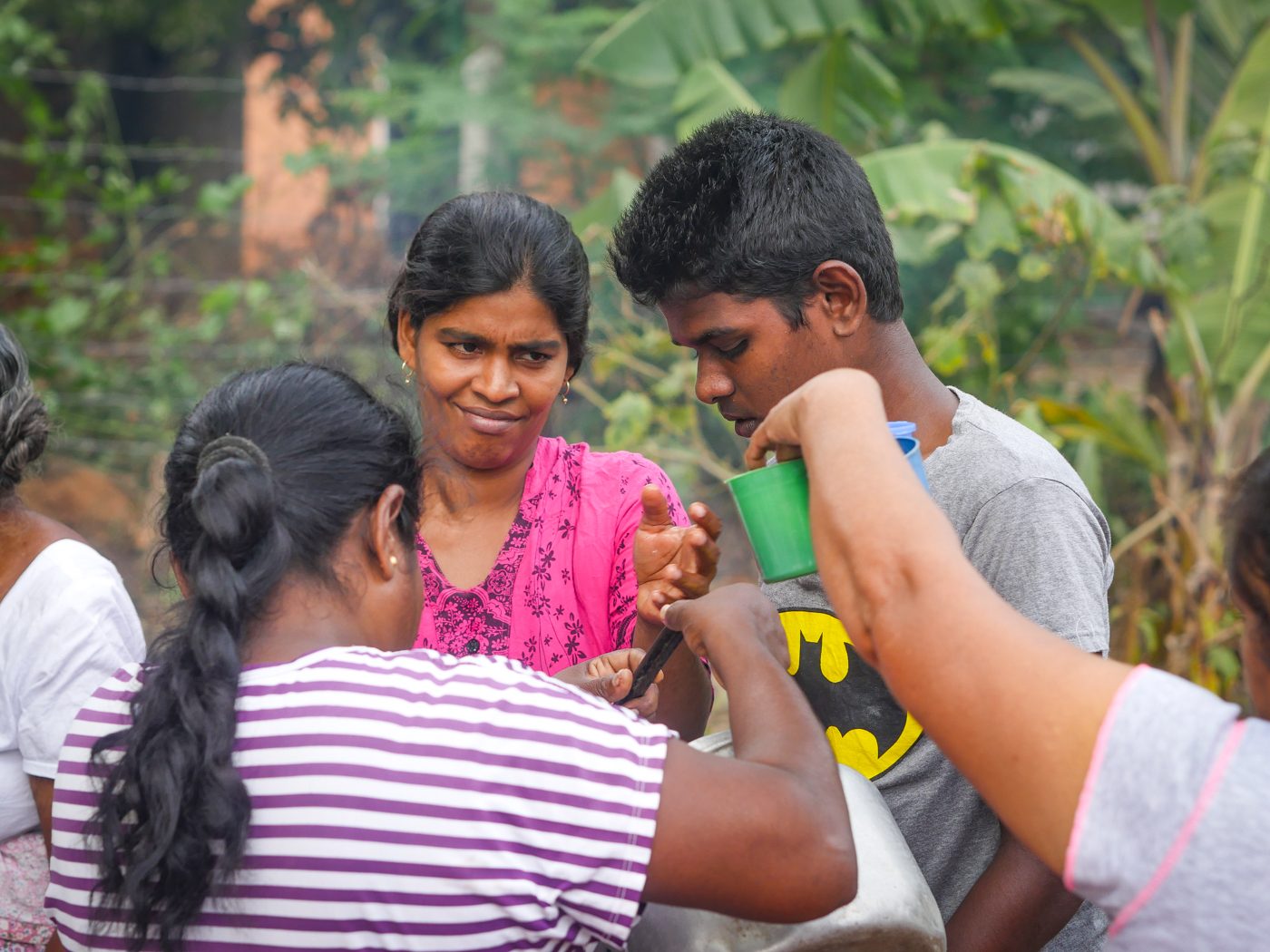
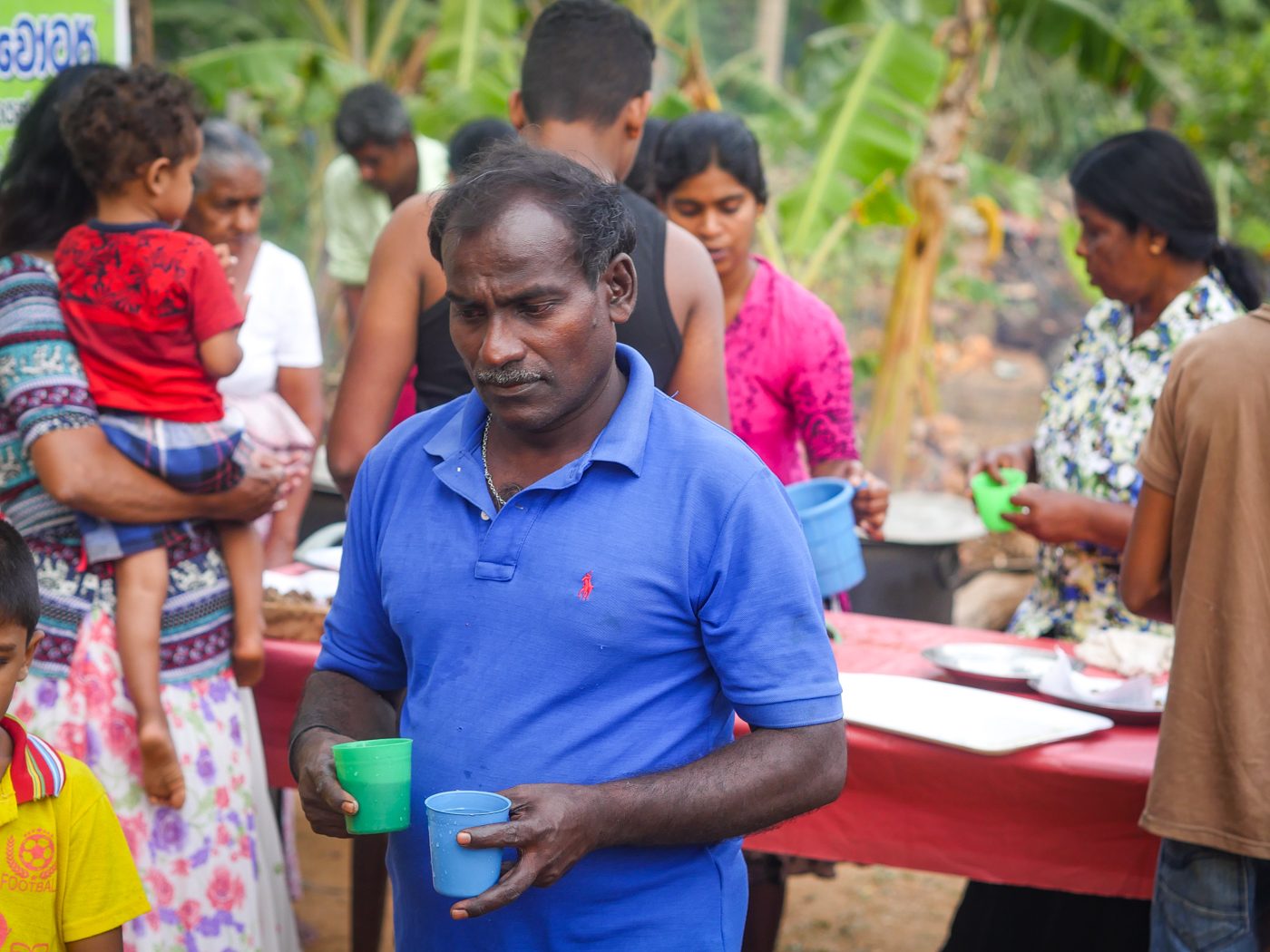
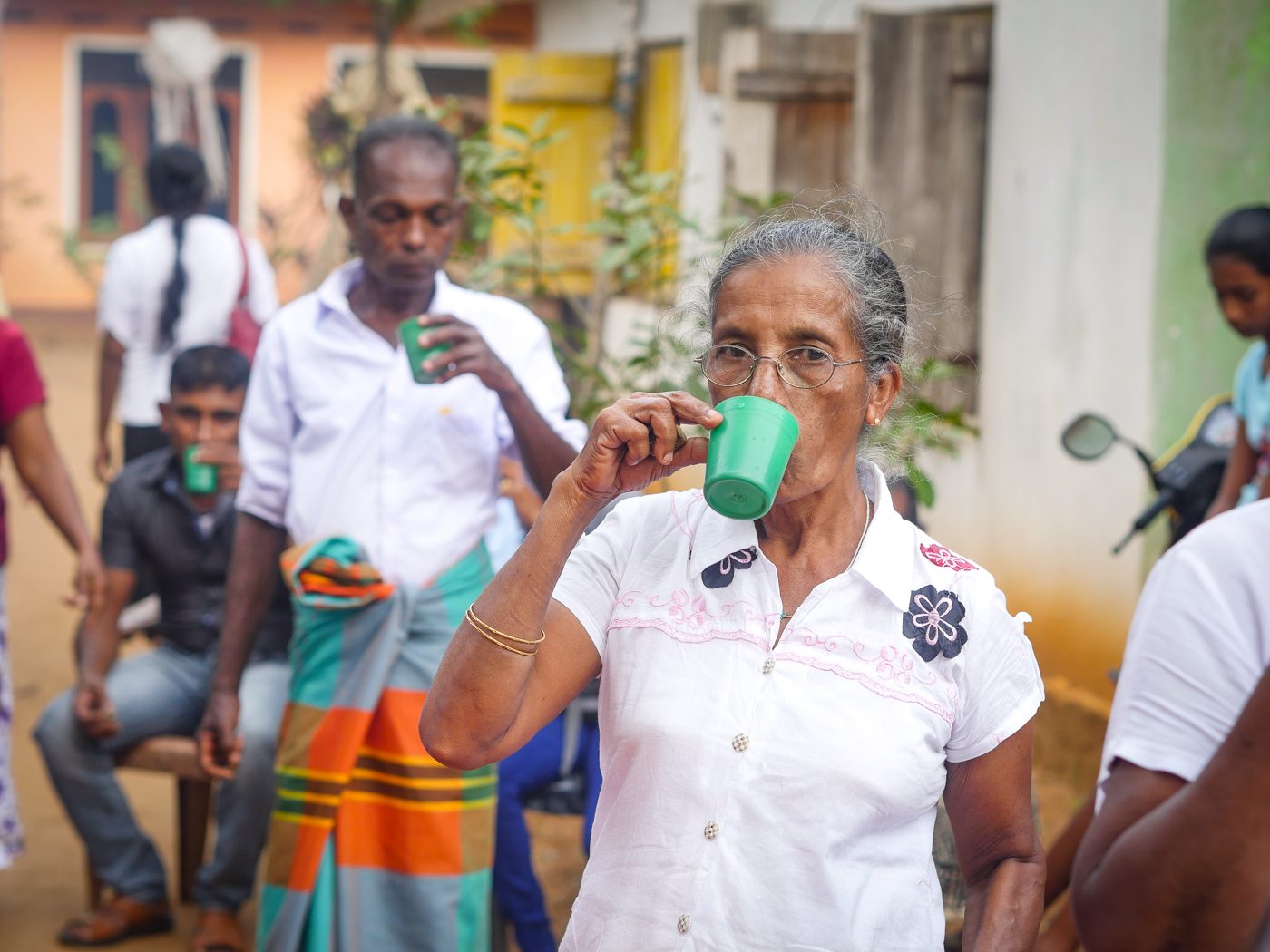
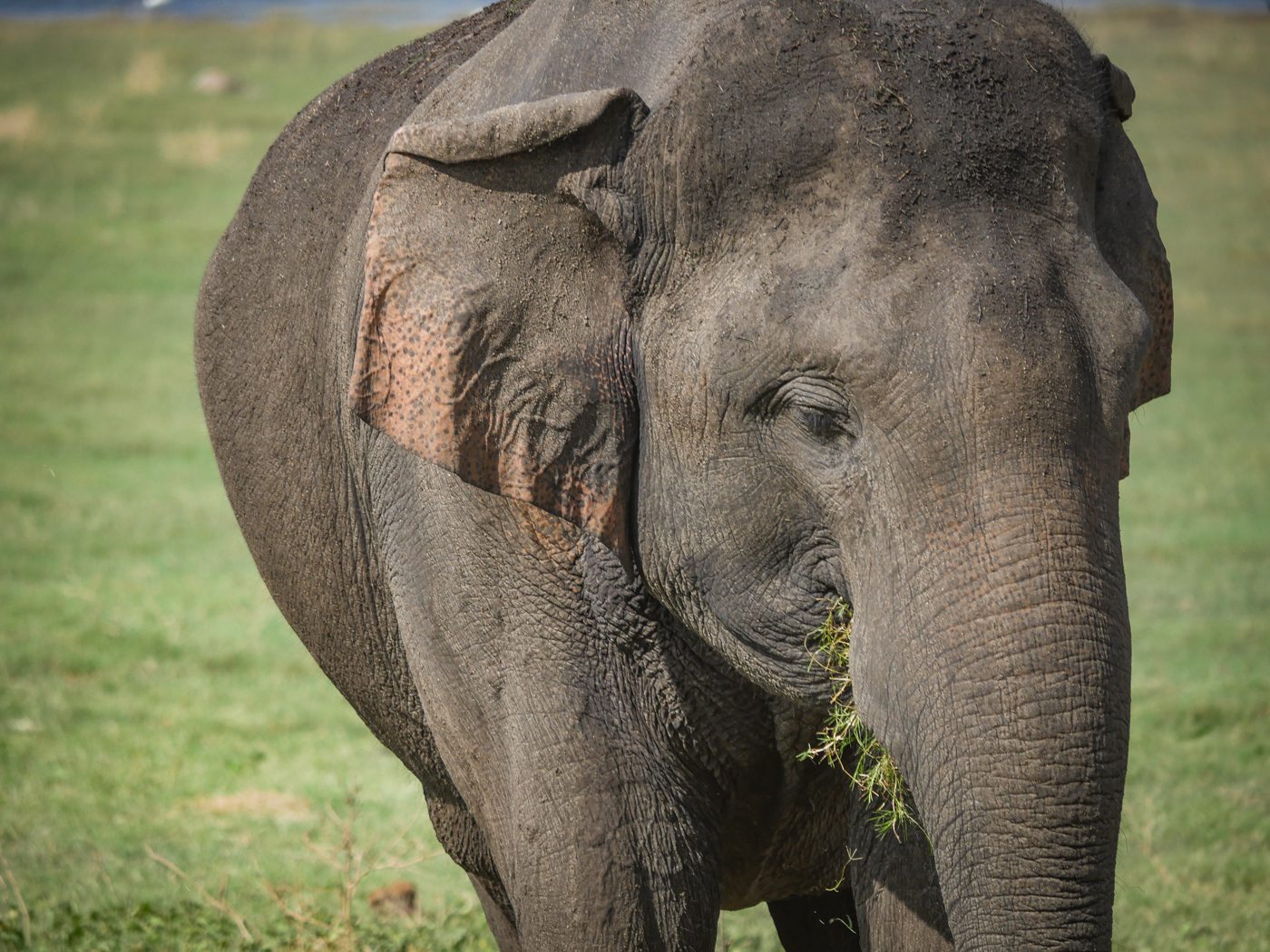
“We’re not heading to Minneriya National Park anymore,” said Dulshan my tour guide. “The elephants have migrated to Kaudulla National Park.” This was a fact that astounded me: that elephants, being the gargantuan creatures that they are, could make such a journey across the city of Habarana, unhindered.
I stood up in the open-roof jeep, my hands clenching the support as the very bumpy ride threw me off balance numerous times. Wind in hair, sun on skin, sand in eye, it was a liberating feeling. Unlike the hours-long game drive at Yala National Park, it took no longer than ten minutes before we sighted our first wildlife: Herds of elephant, big and small, scattered across vast expanses of grassland that receded into the horizon. While this was not my first game drive, it was the first where I had the opportunity to get really up close with the wildlife (I could see the wrinkle lines that ran across their entire bodies and their sparse, fine hair), and hence felt the tremendous peril that I was in. I was not being paranoid.
Just as I was relishing the serenity, there came a loud trumpeting cry that stunned my very ears. A male elephant came charging towards the jeep at the forefront. At that, all the jeeps retreated, and went hither and thither like a disturbed colony of ants. Kanehila, whom the locals nicknamed after the hole that he bears in the ear, had his gaze fixed on one jeep. A passenger on that jeep tried to stay his charge by beating at him with a branch, but it was like bringing a knife to a gun fight. Kanehila pursued it, pushing the entire fleet of jeeps to retreat beyond an invisible boundary line that he dictated. Such fear he inspired, knowing very well he could outmatch the might of even a dozen of jeeps fully gathered.
When he was satisfied that we the humans were no longer encroaching on his territory, Kanehila strayed from the path and proceeded to graze in peace.
The remainder of the game drive was, perhaps unfortunately, without incident. The other elephants seemed to not mind the invasion of privacy, their mind intent on ingesting a tenth of their weight of vegetation. There were of course a few interesting sightings. A small pack of elephants traversed the plains to meet its companions on the other side, the adults forming a security perimeter around their baby. It baffled me as to why they saw the need to do that, for no equals they had except for men with deadly rifles. Survival instincts, Dulshan opined. Skywards, there was an eagle, circling high above the lake, its menacing talons outstretched, often swooping close to the water surface to catch its fish.
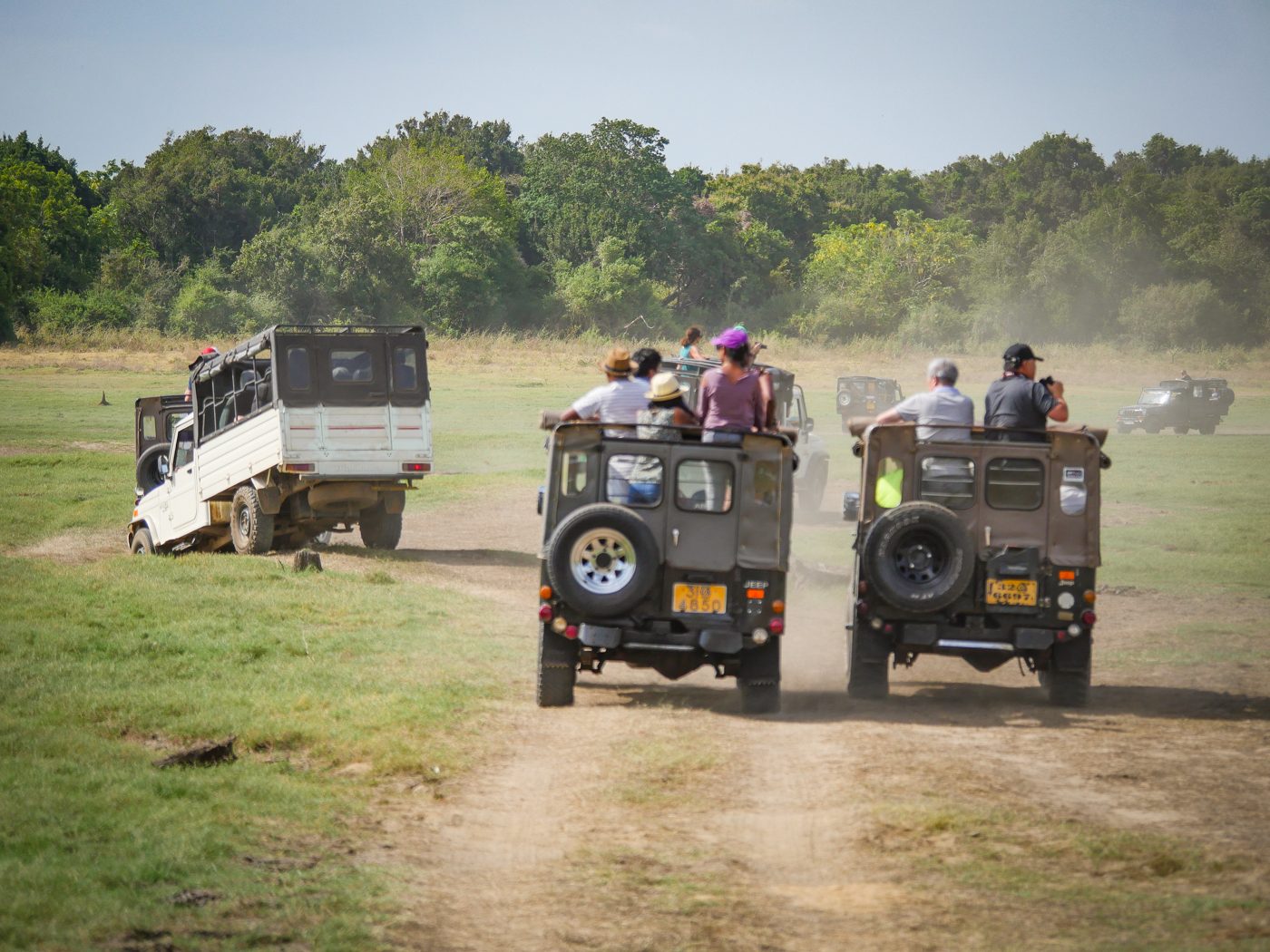
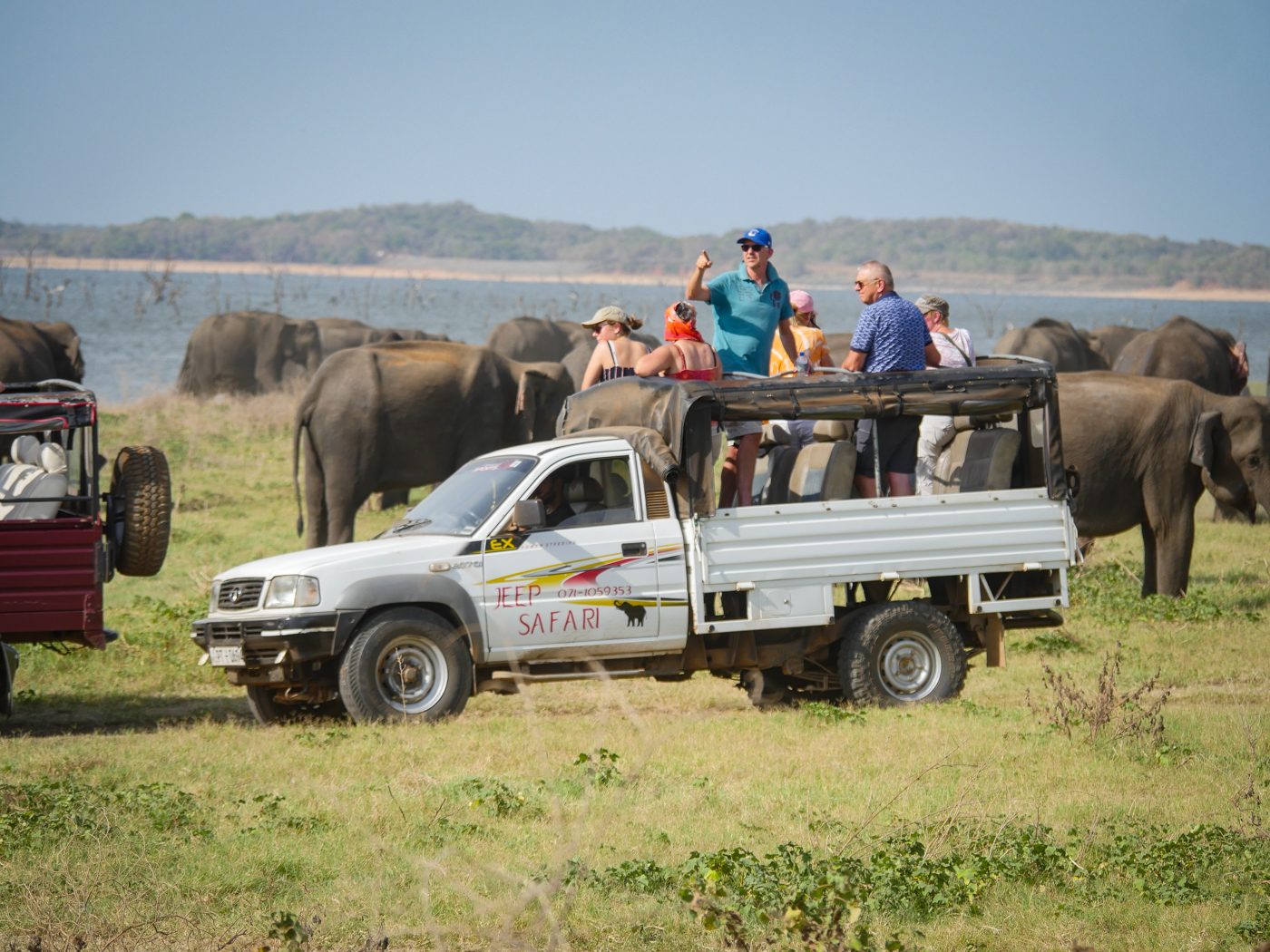
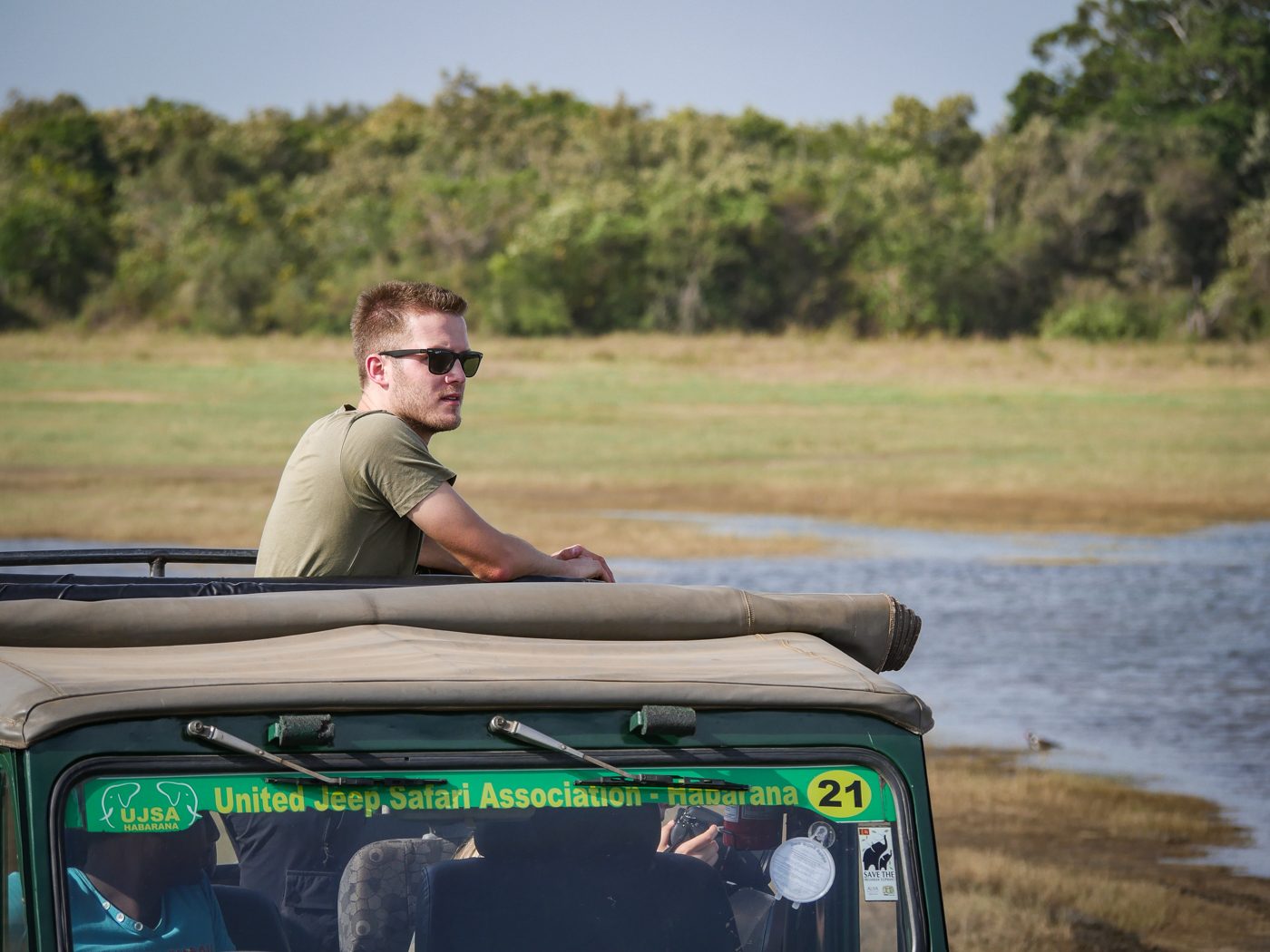
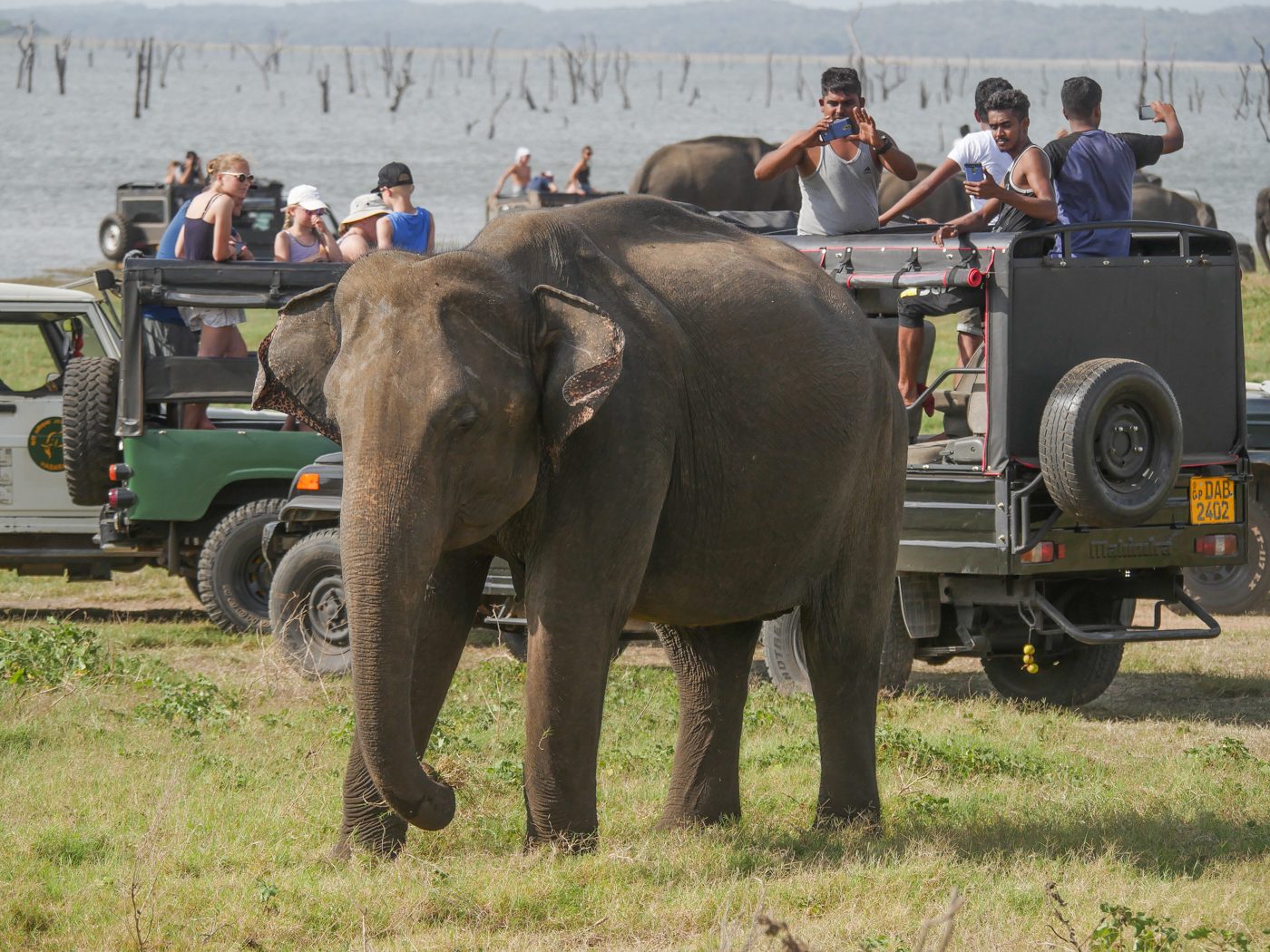
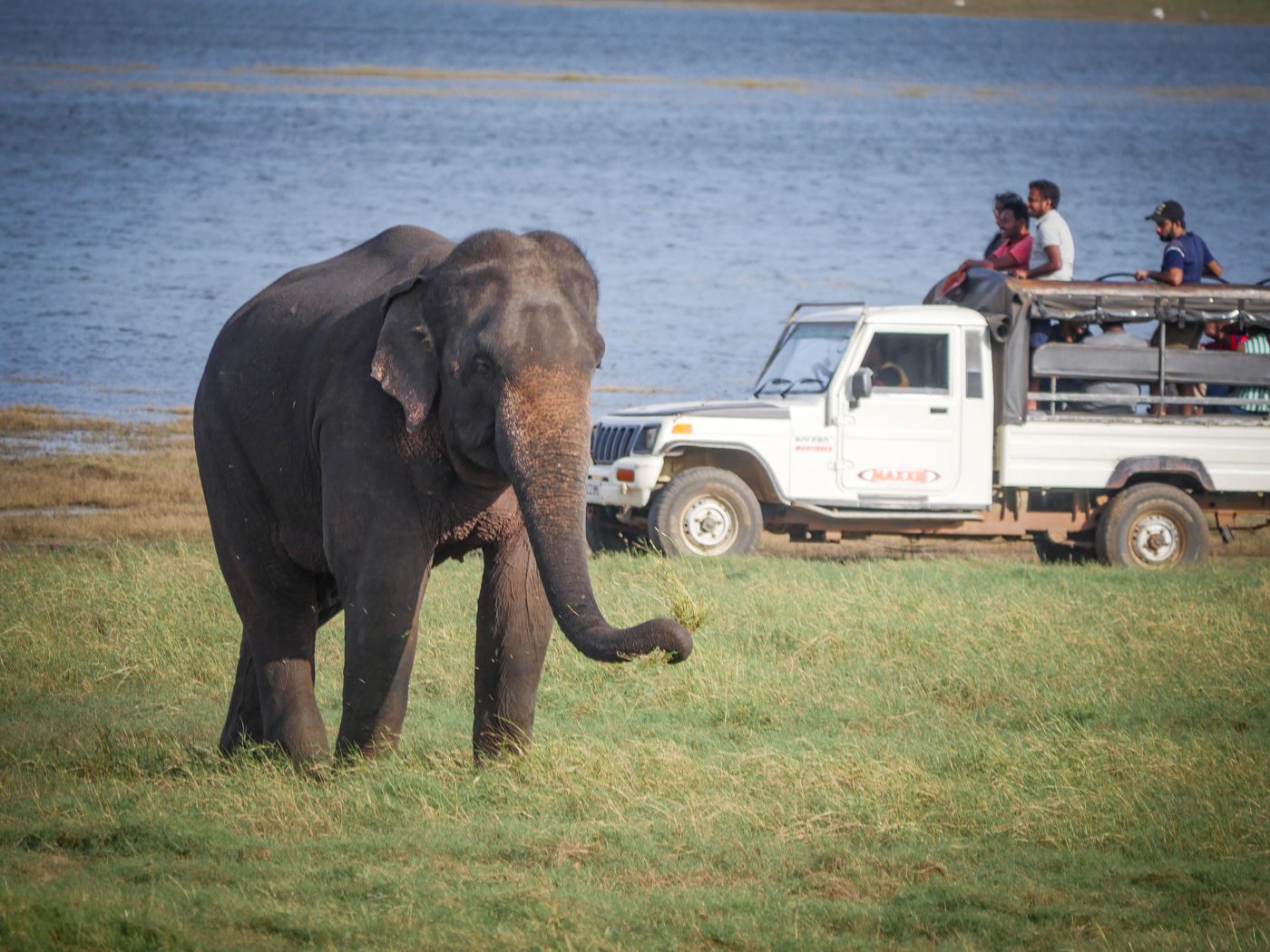
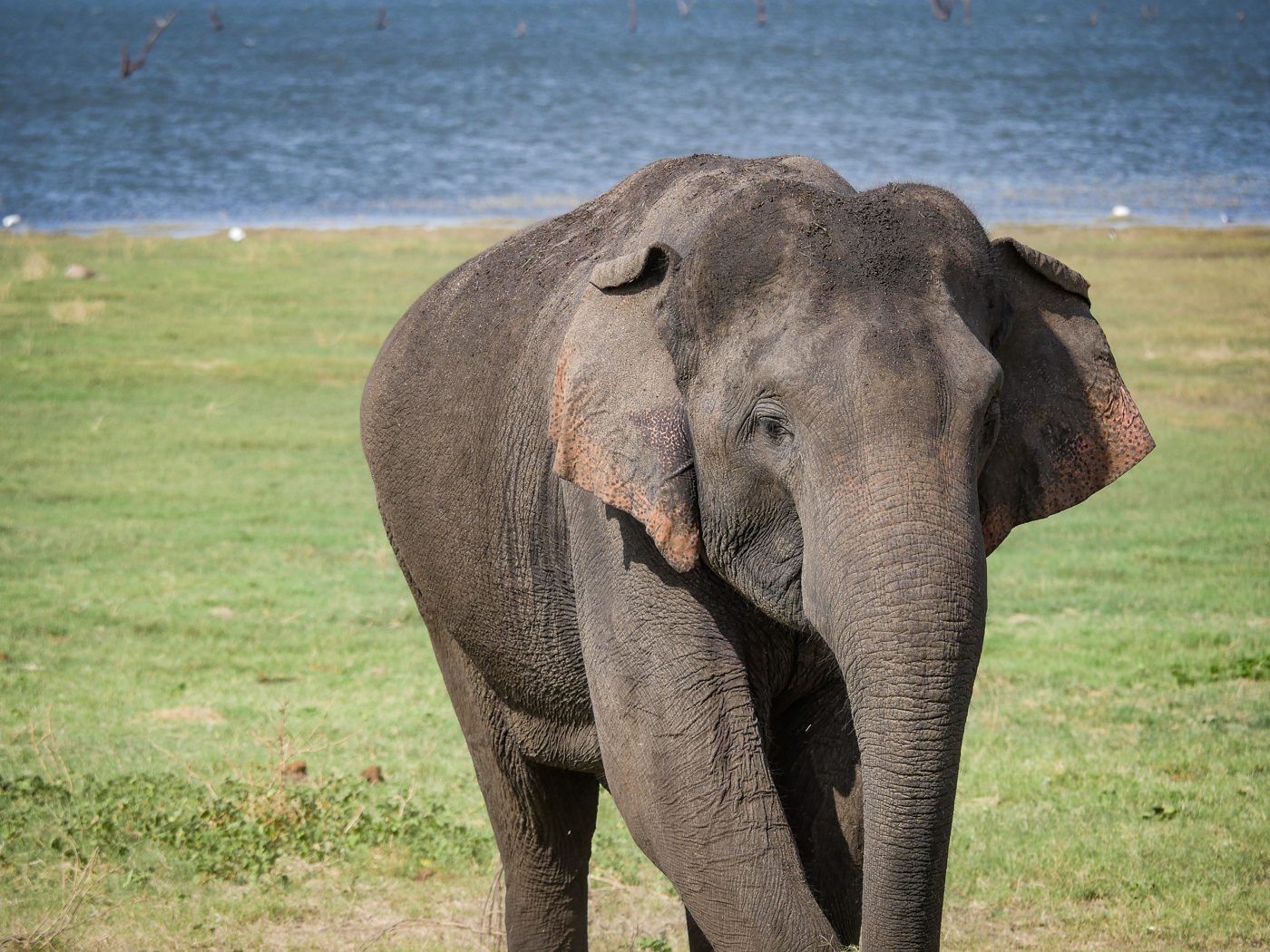
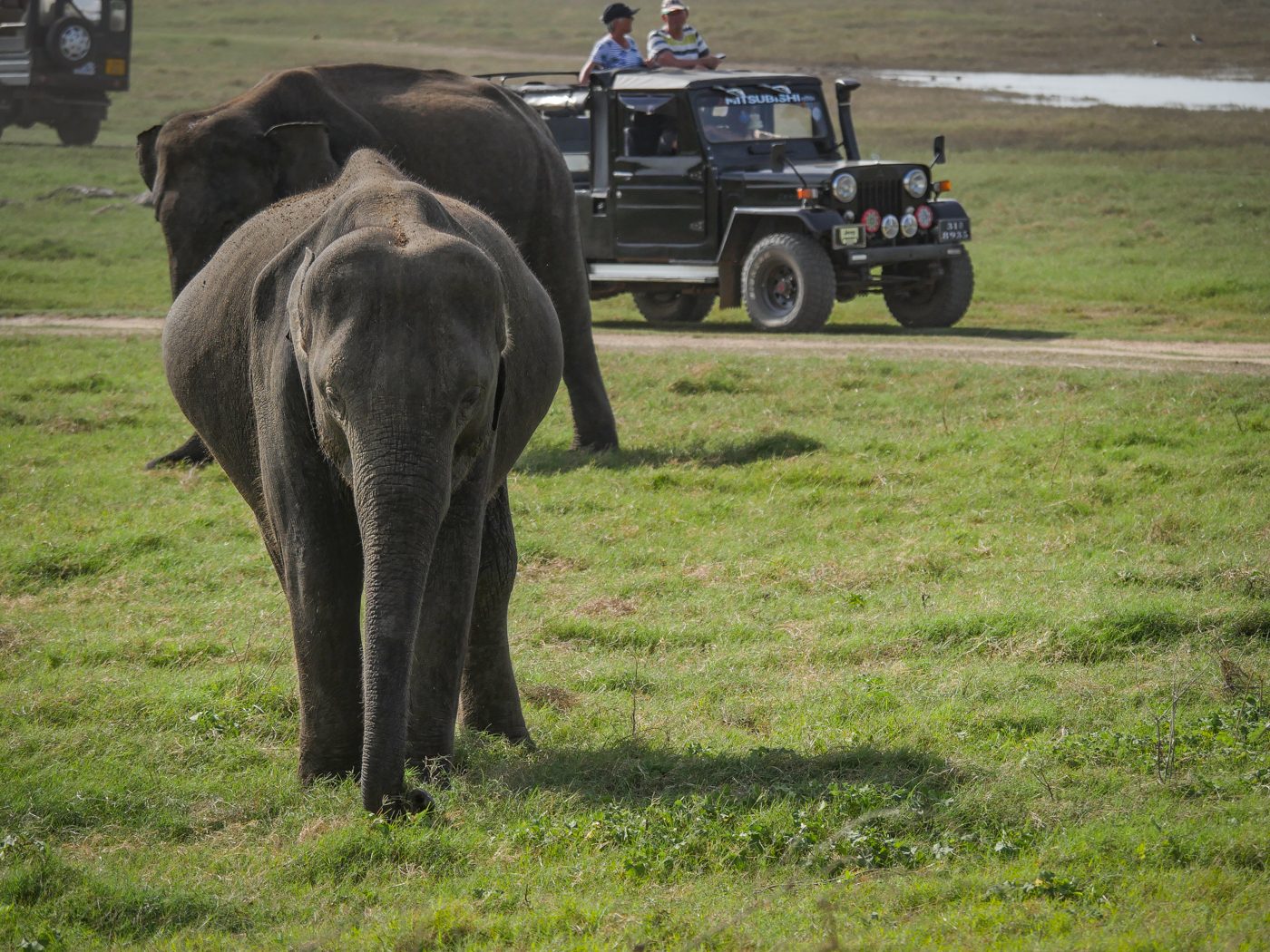
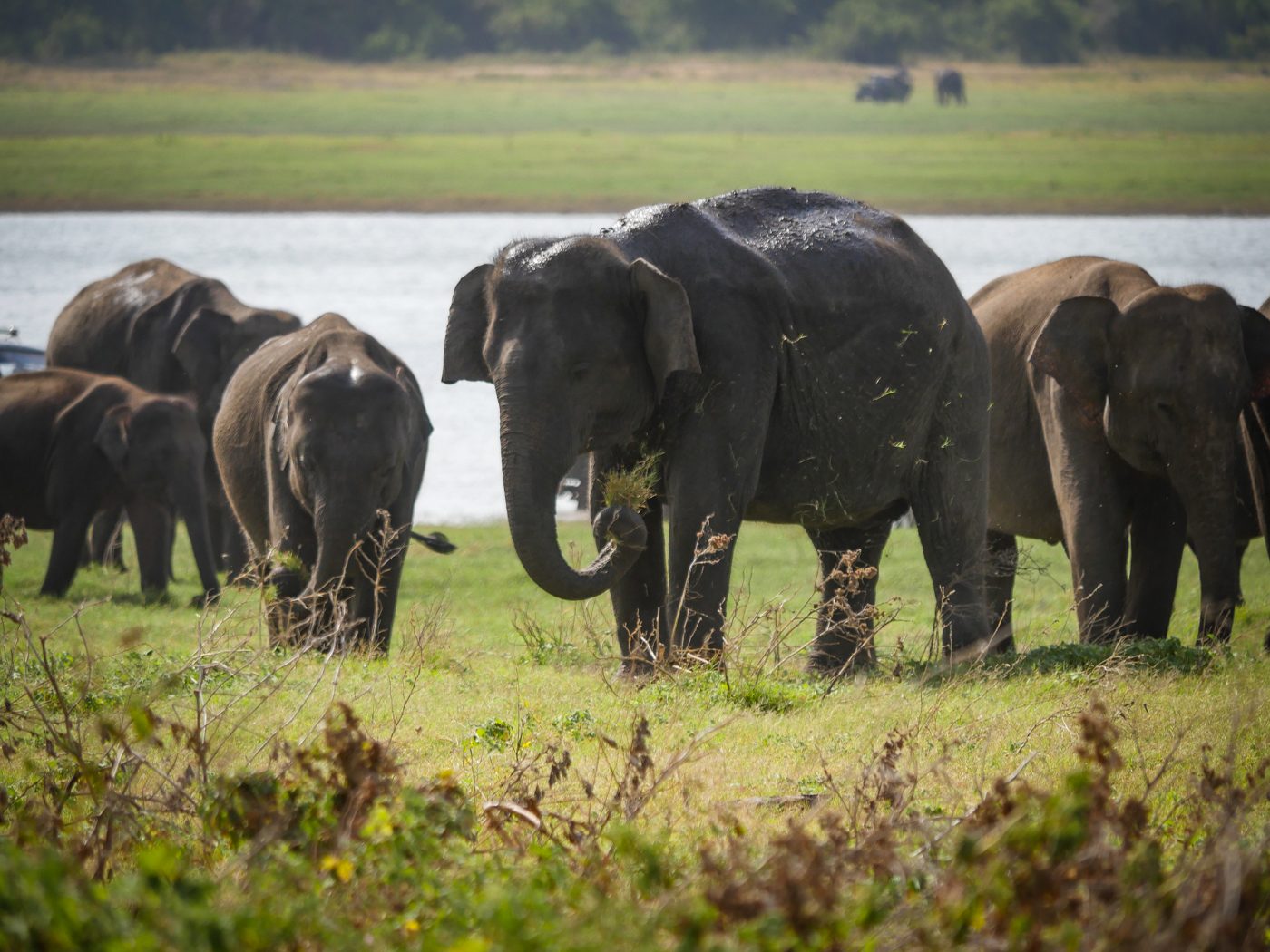
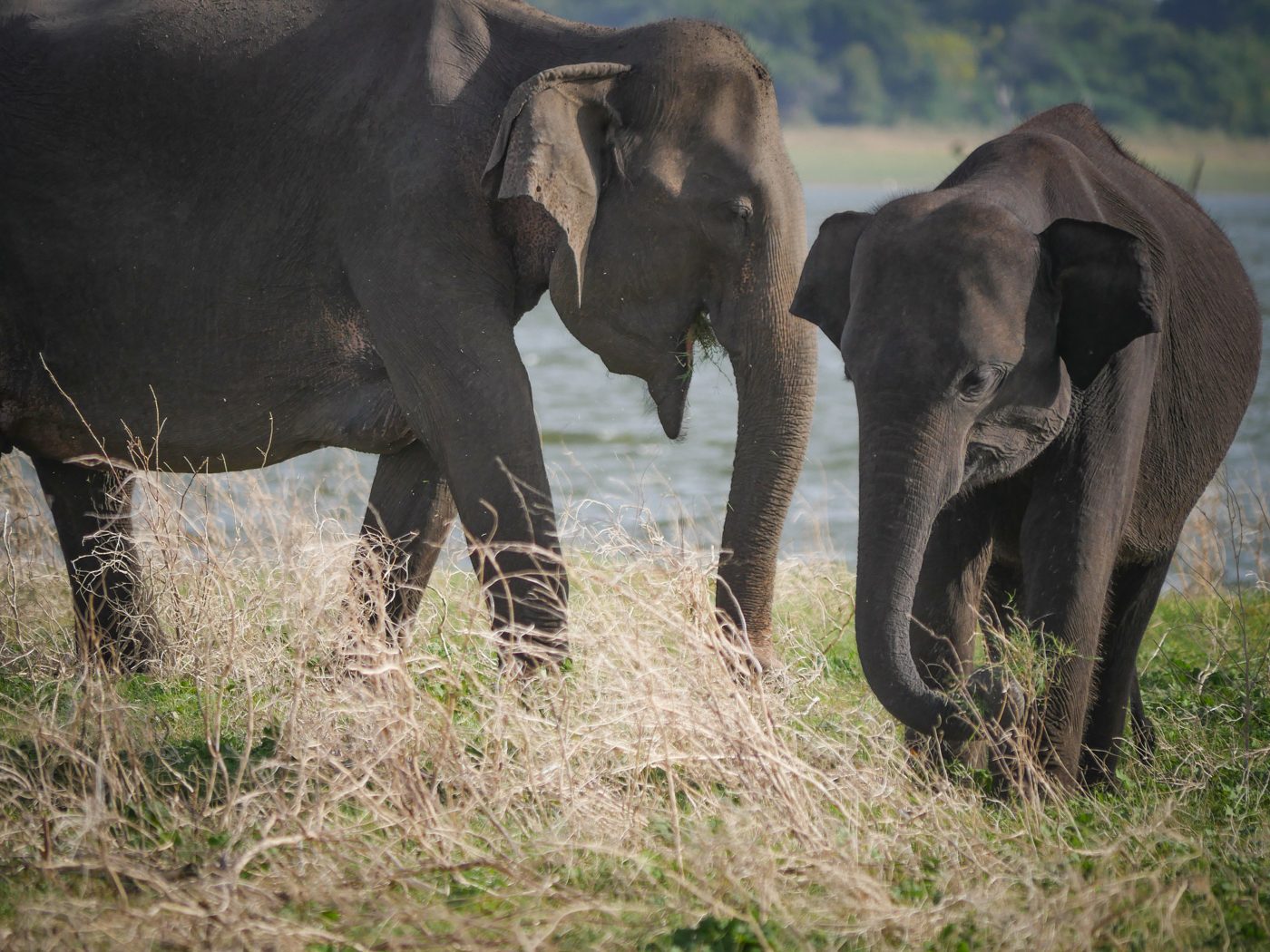
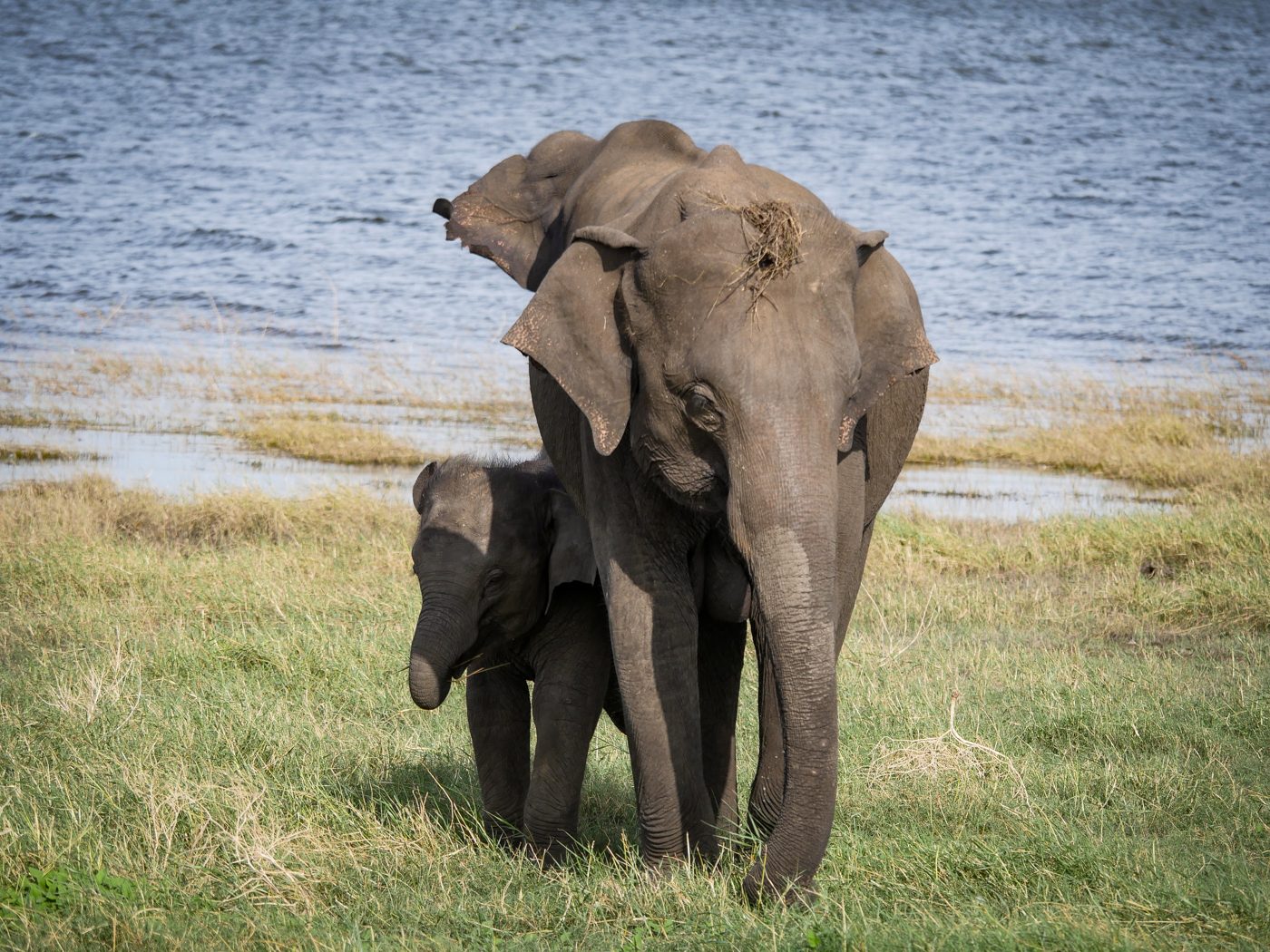
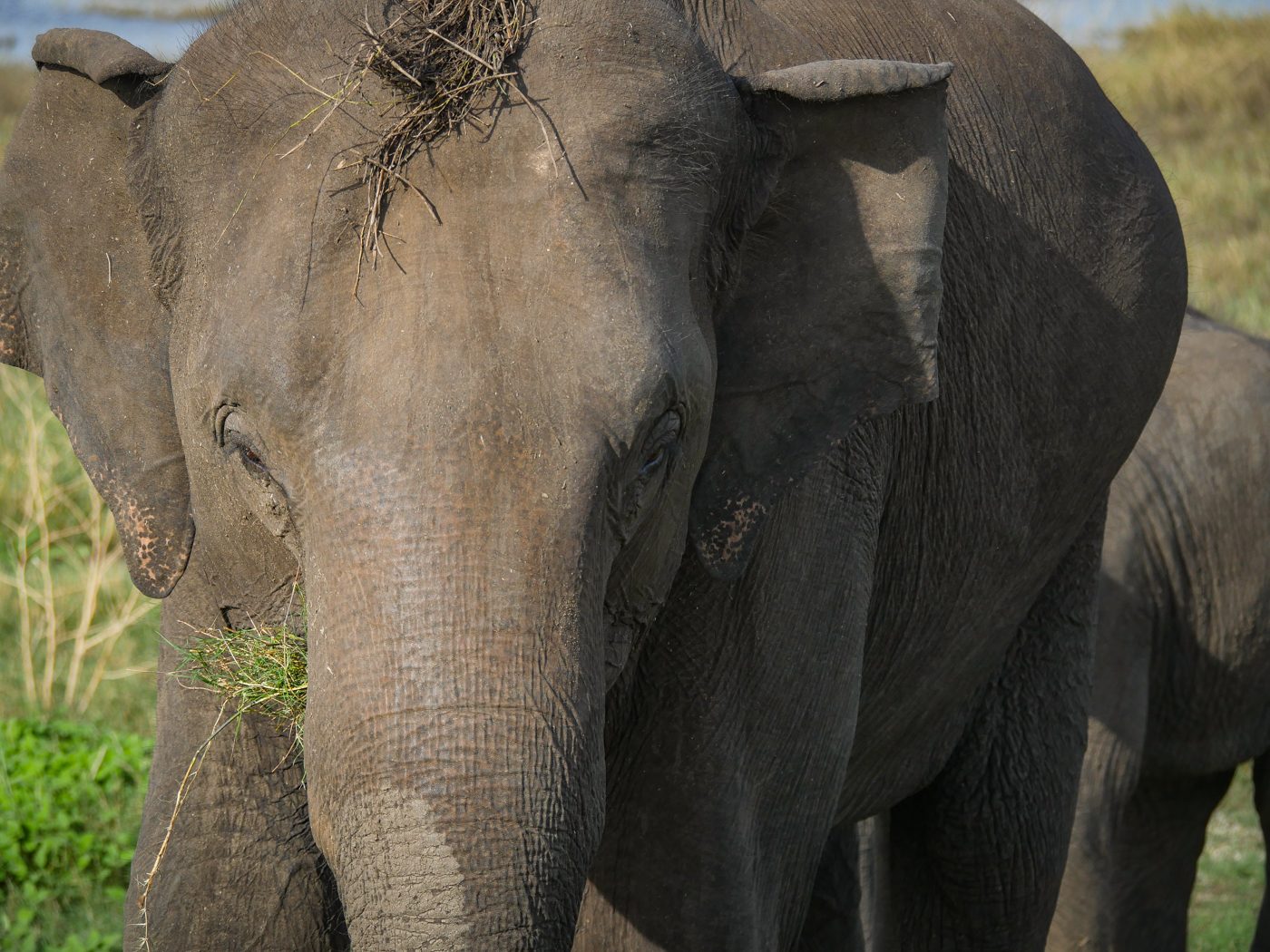
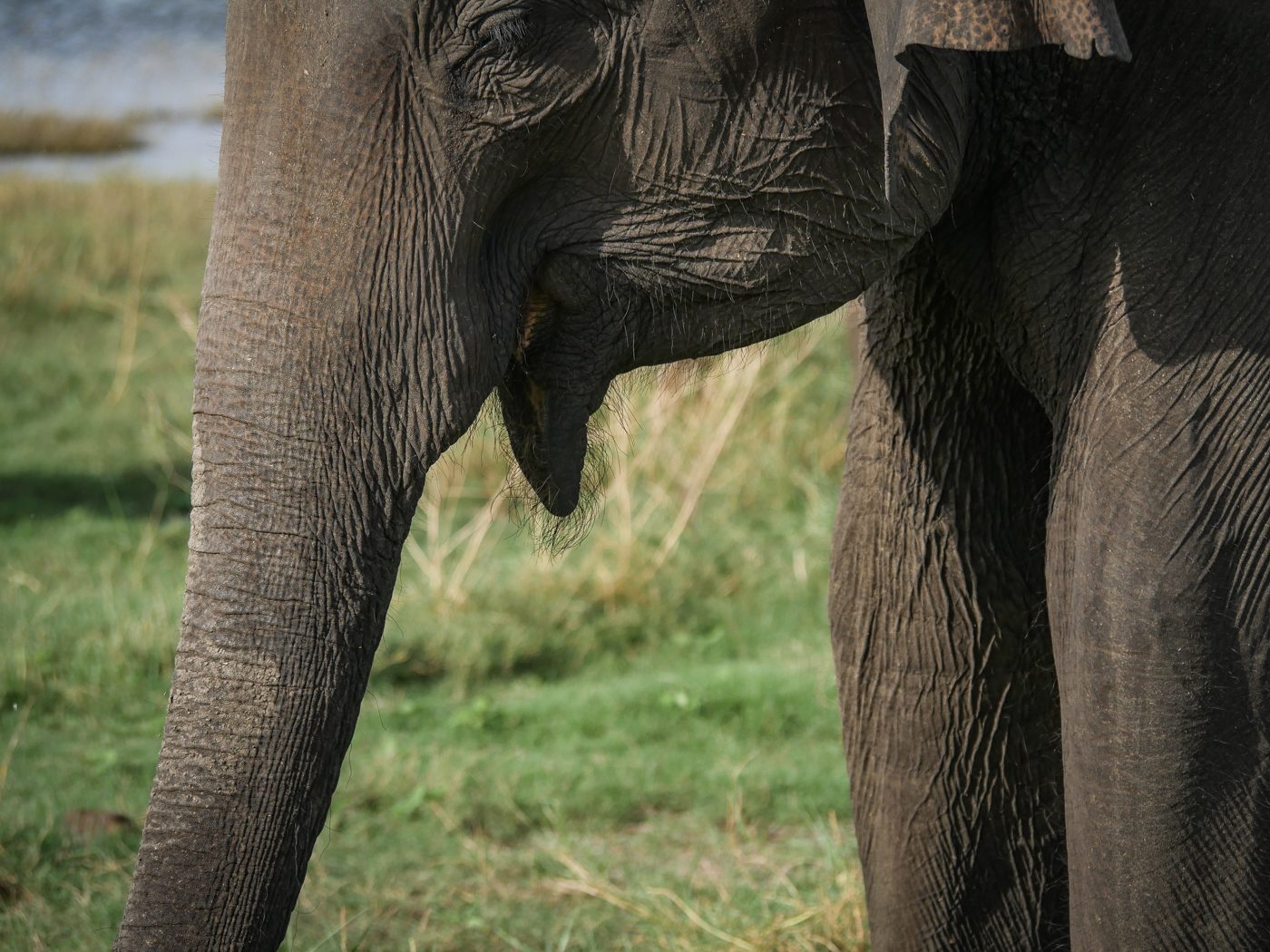
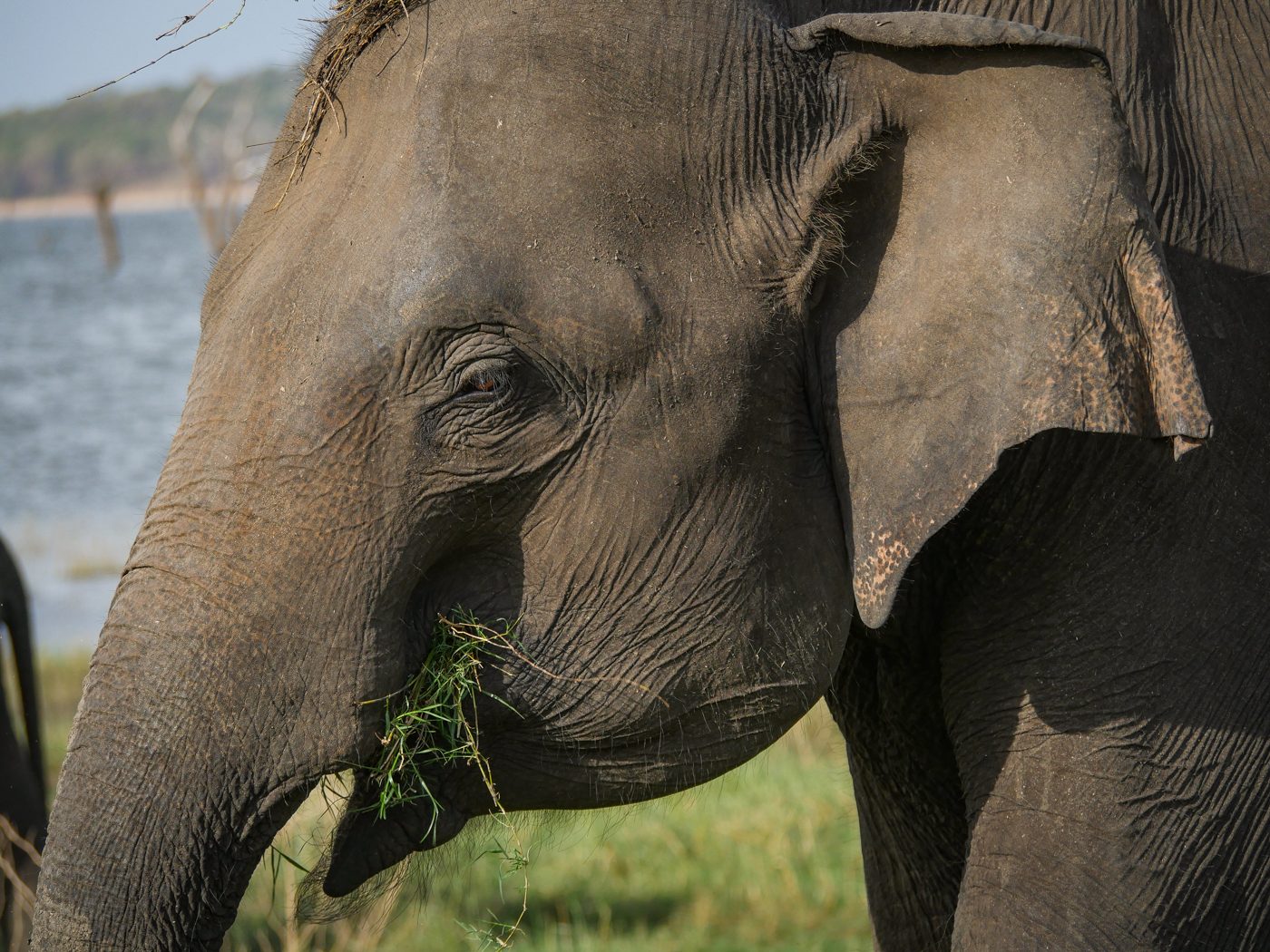

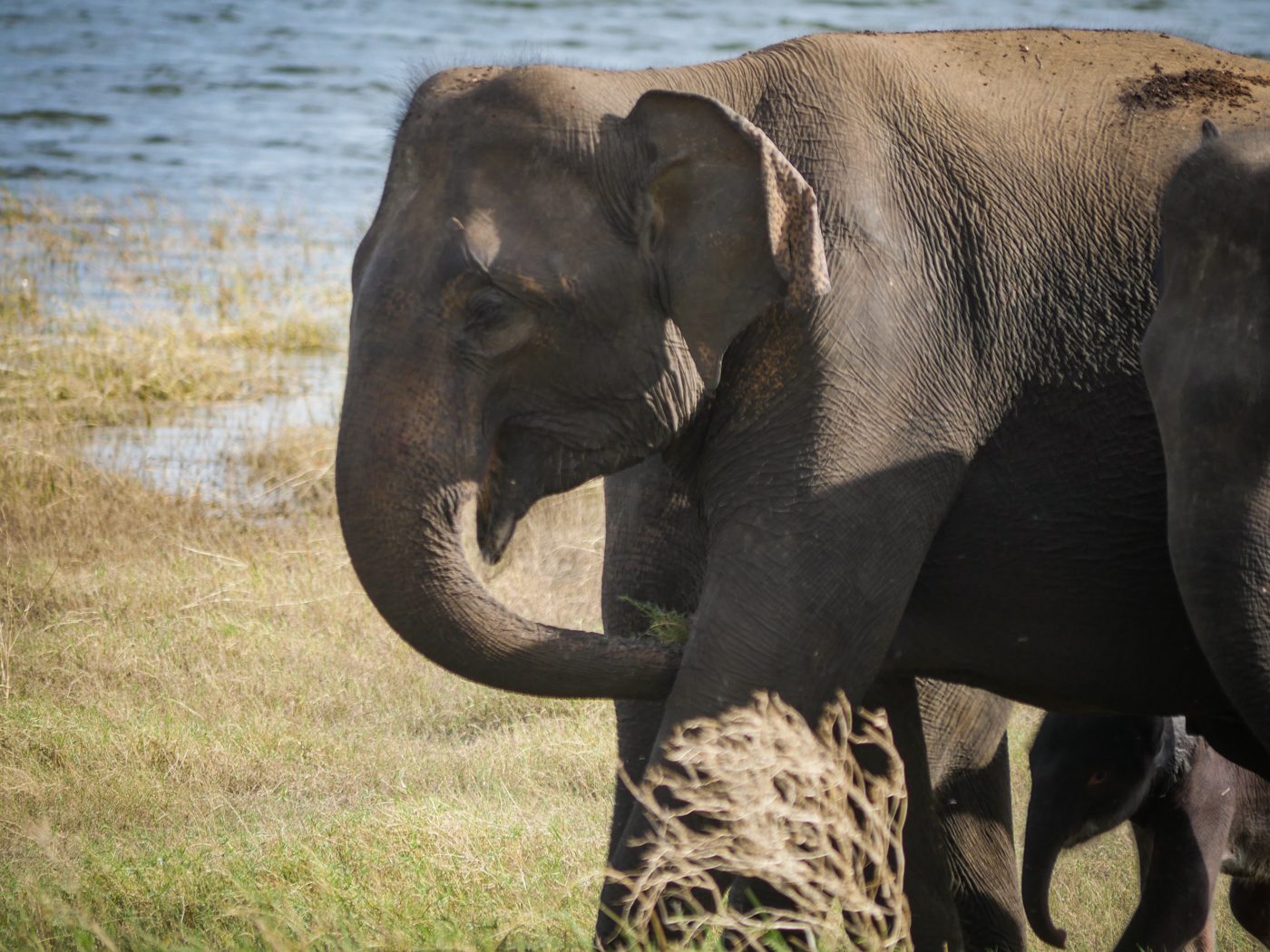
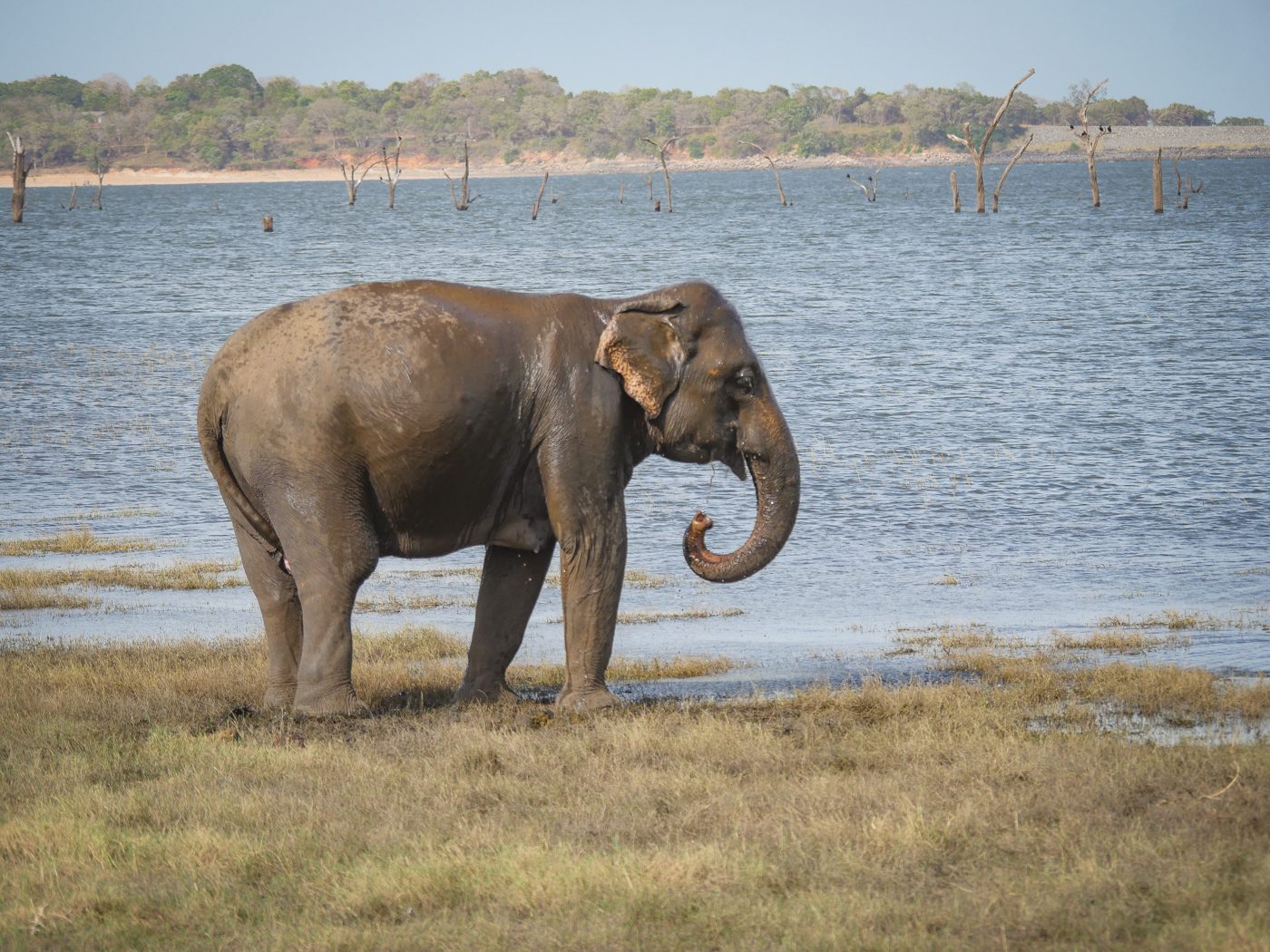

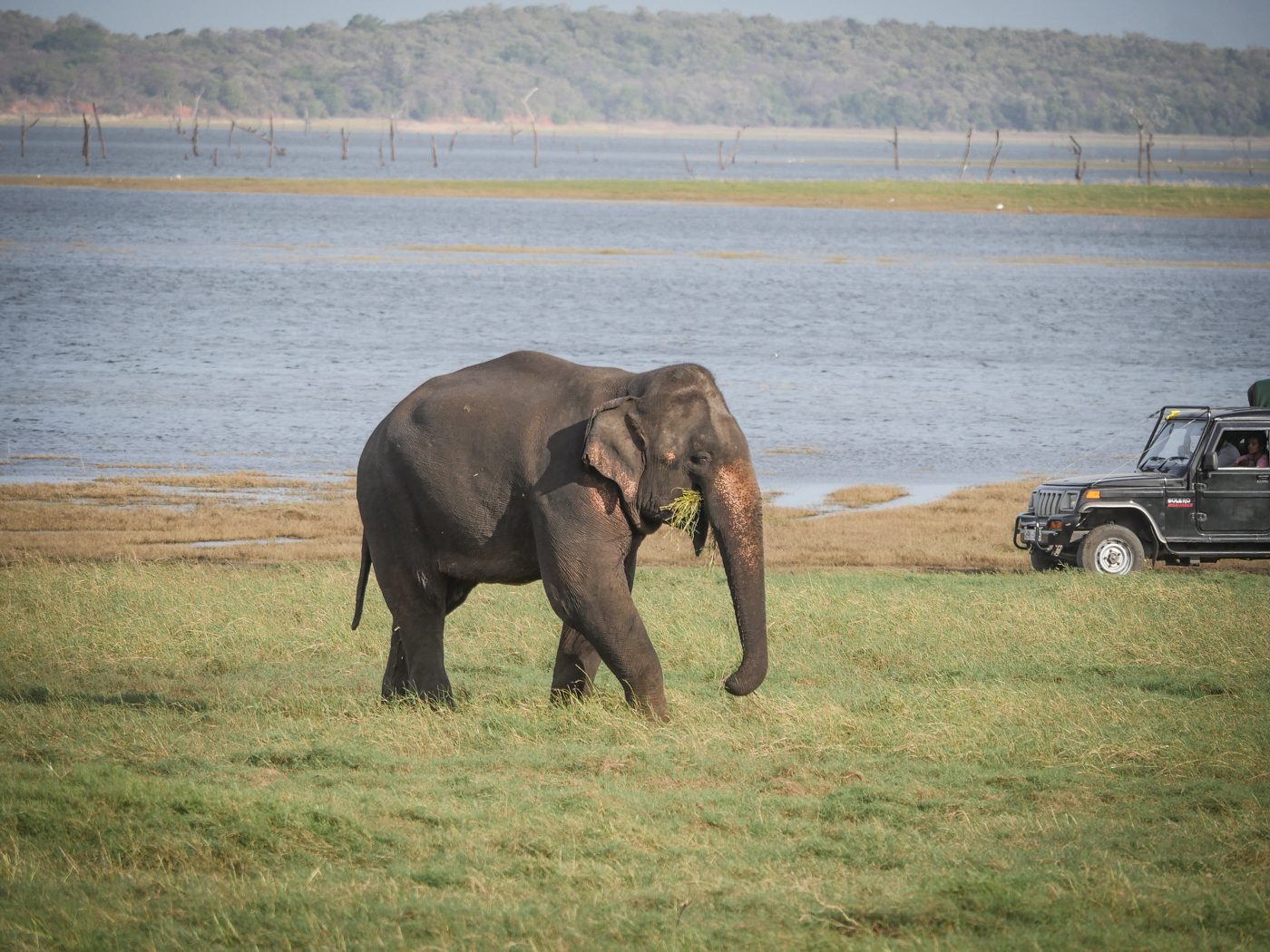
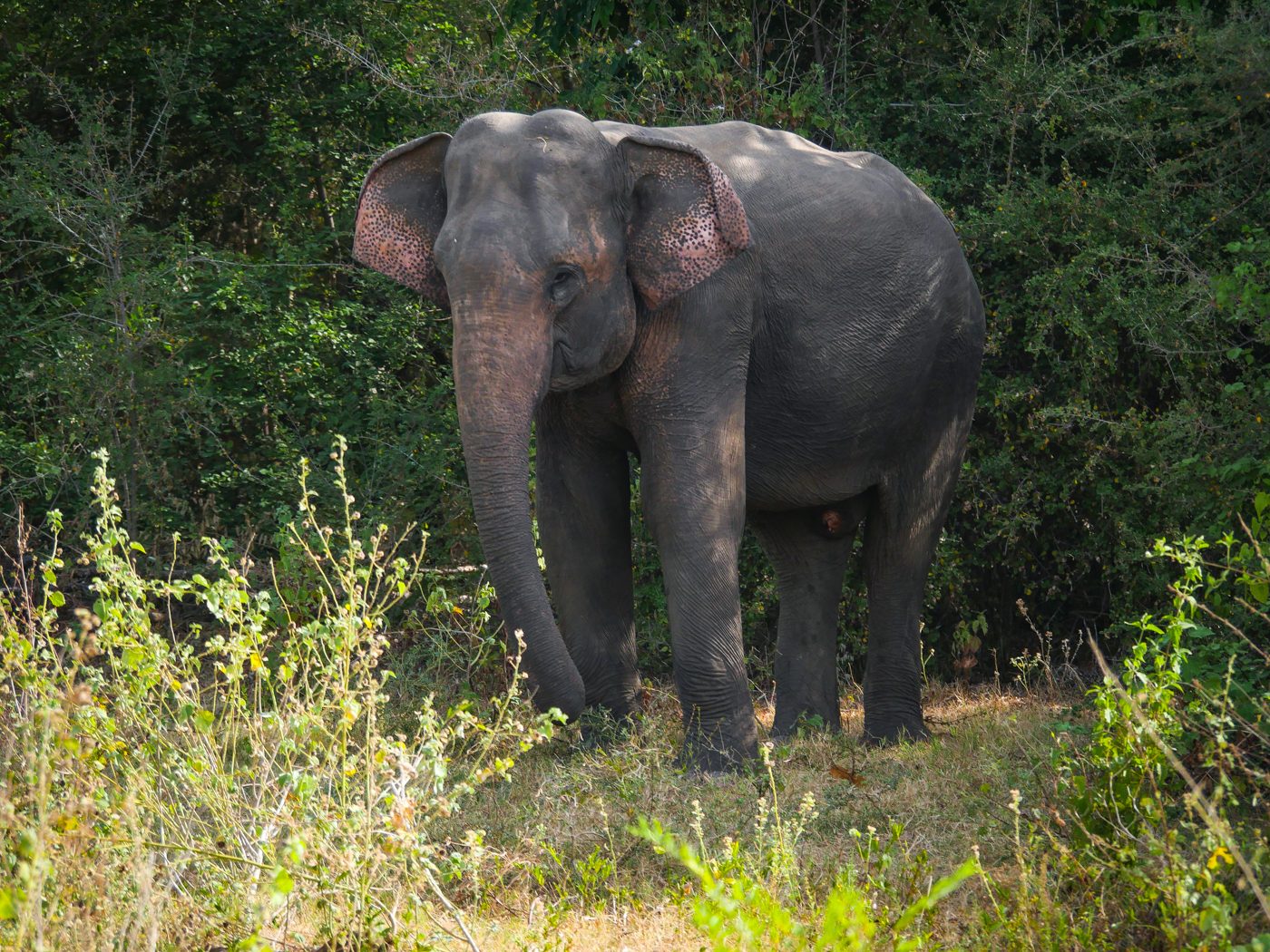
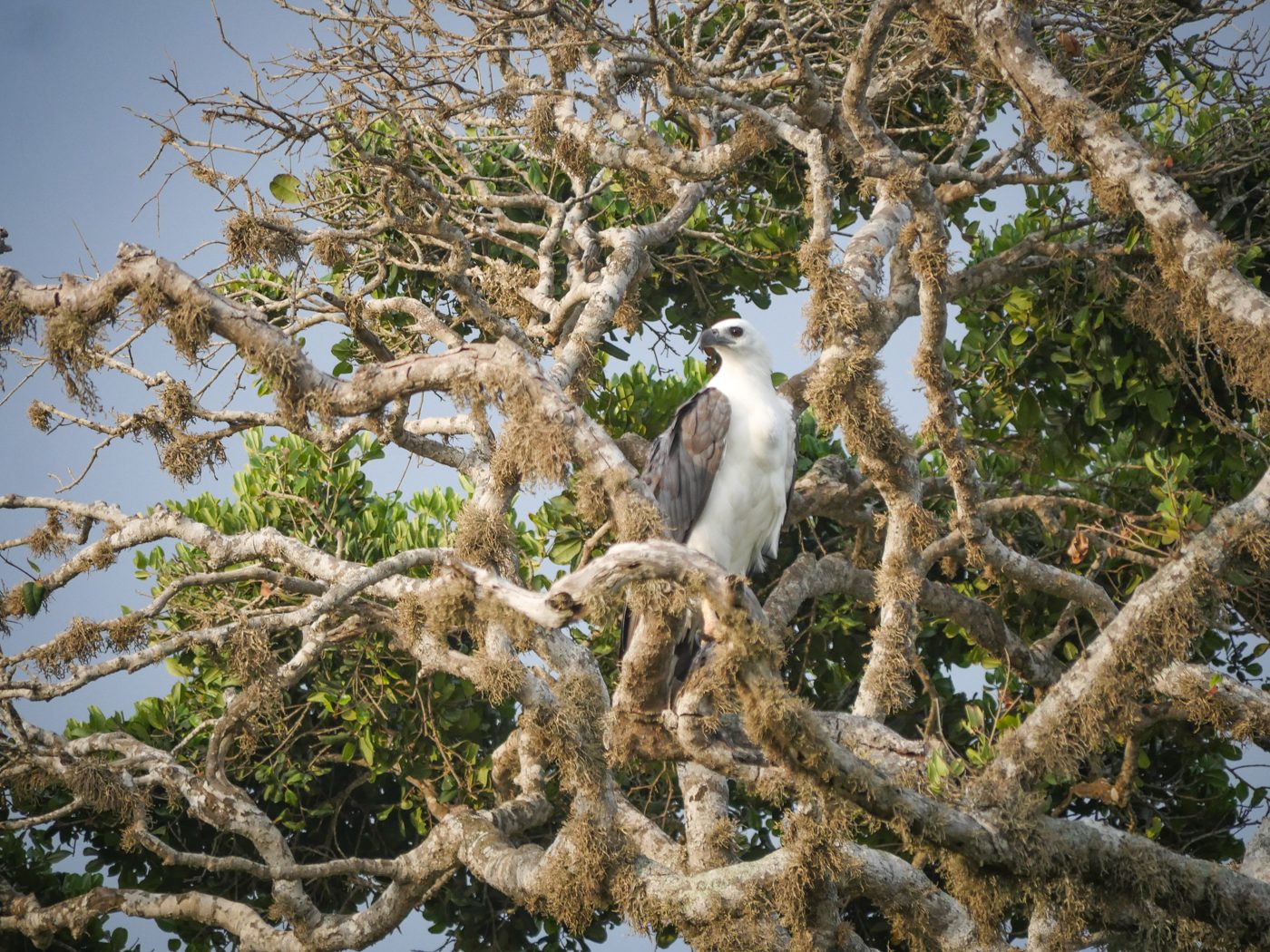
After winding stretches of road flanked by bushes, shrubs and trees on both sides, the path bent eastwards and opened to a vast clearing. Even before the driver made a complete turn, an elephant lumbered towards us, its elongated tusks aimed sharply at us. The waterhole was his, and trumpeting he let us know it. The driver immediately killed the engine. Seeing this gesture as a white flag, the elephant stayed his advance, though he was ever on guard, gaze fixed on us, ready to charge should we decide to trespass any further. We would be foolish to. Size advantage the behemoth had. Speed belied that sheer size too: If he gained momentum he would certainly outpace us, us mere humans in our undoing hubris would panic and make fatal errors. The jeep’s windscreen would have little protective effect against his tusks coveted and long hunted for.
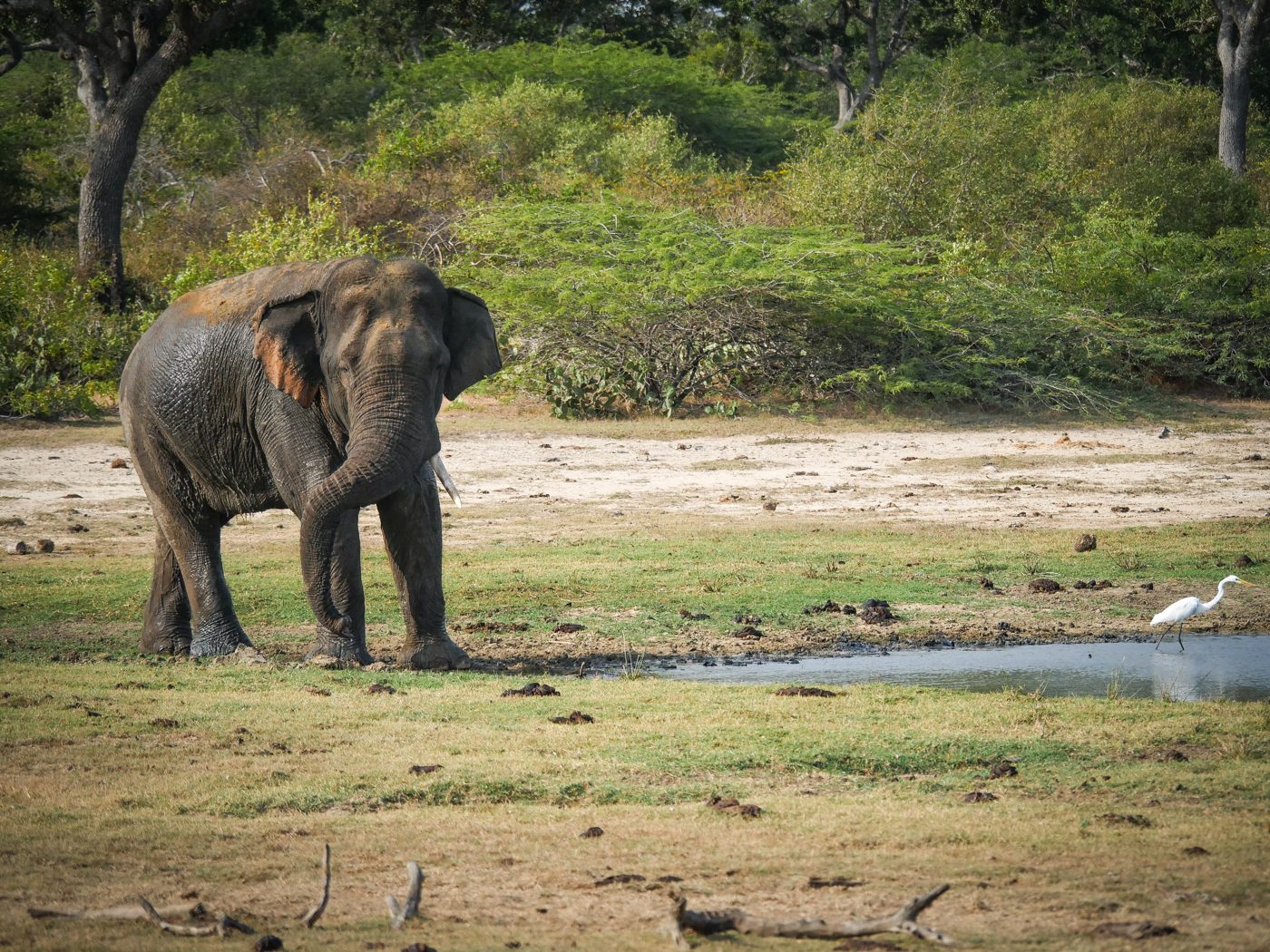
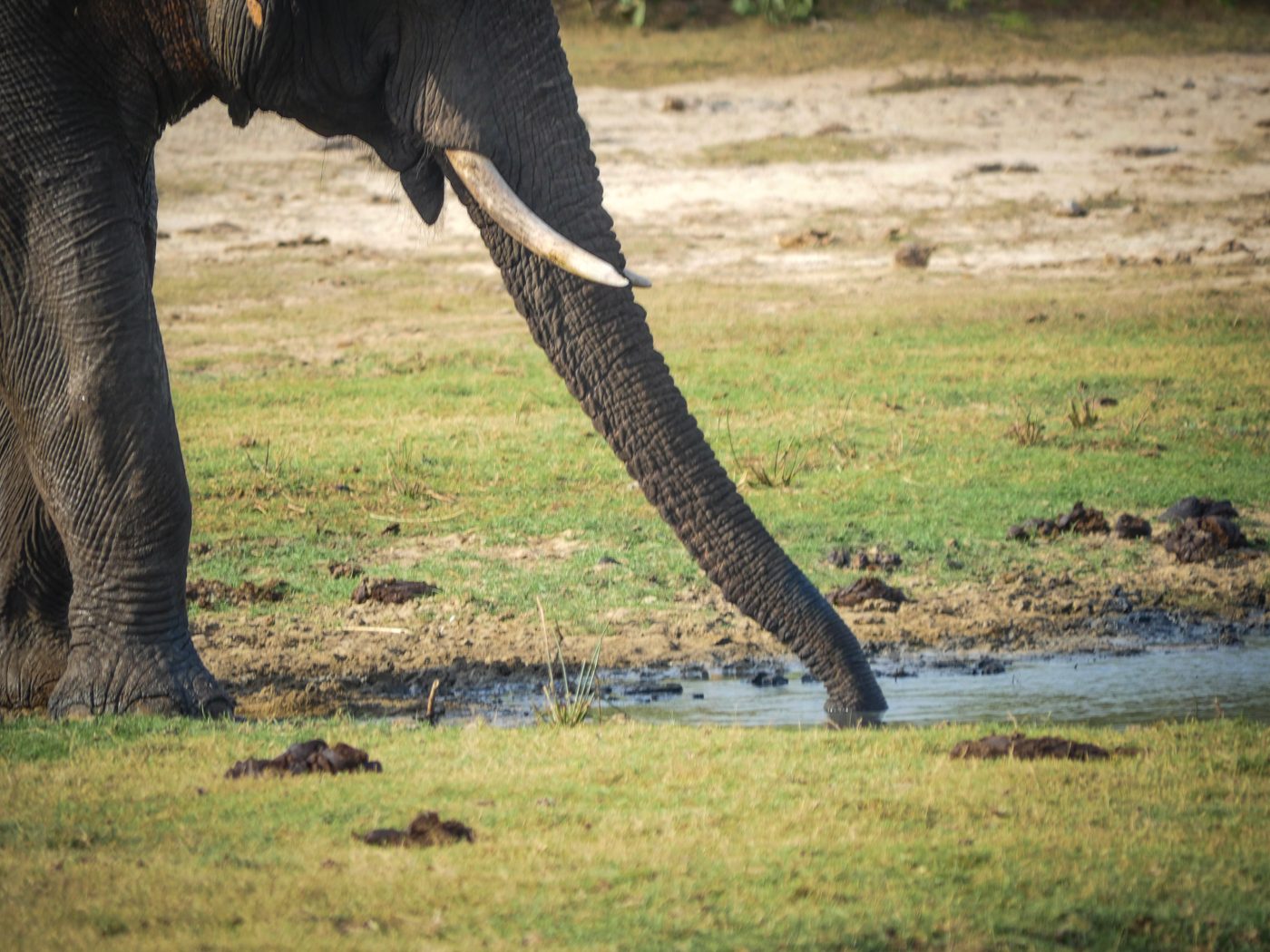
Perhaps realising that we were no more than a fly he could effortlessly swat, the guardian relented his vigilance, now perambulating along the perimeter of its prized waterhole. “There is a white blotch on his neck,” said the wildlife ranger, as the elephant turned his back towards us. Whether it was remains left by the elephant’s winged counterparts, or that of blood from a gunshot wound he could only venture a guess. It seemed that our territorial friend had a penchant for exploration. Often he would leave the safety of the park to forage for food, playing now the part of persona non grata, pillaging nearby farms for rice, plants and fruits.
Now the elephant was enjoying his spoils, stopping to throw sand – his form of sunscreen – over his massive back. When he finally had his fill of water, he ambled along before dwindling into the shroud of green, giving us leave to enter his realm. As my journey continued, the sights vacillated between the bizarre and heart-warming.
A crocodile, lying in plain sight and just a few paces from a small herd of water buffaloes. “Do the water buffaloes know their peril?” I thought. It seemed to me that in this moment alone, they were just existing harmoniously. The water buffalo nearest to the crocodile approached it, and using its hoof playfully nudged it. At that, the crocodile started and recoiled, then quickly crawled back to the safety of the water, and receded.
A troop of tufted grey langurs, standing in single file formation like field soldiers. They, like the elephant, were on guard for incoming threats. And then, later again, poised on a branch, a young monkey embracing its parent.
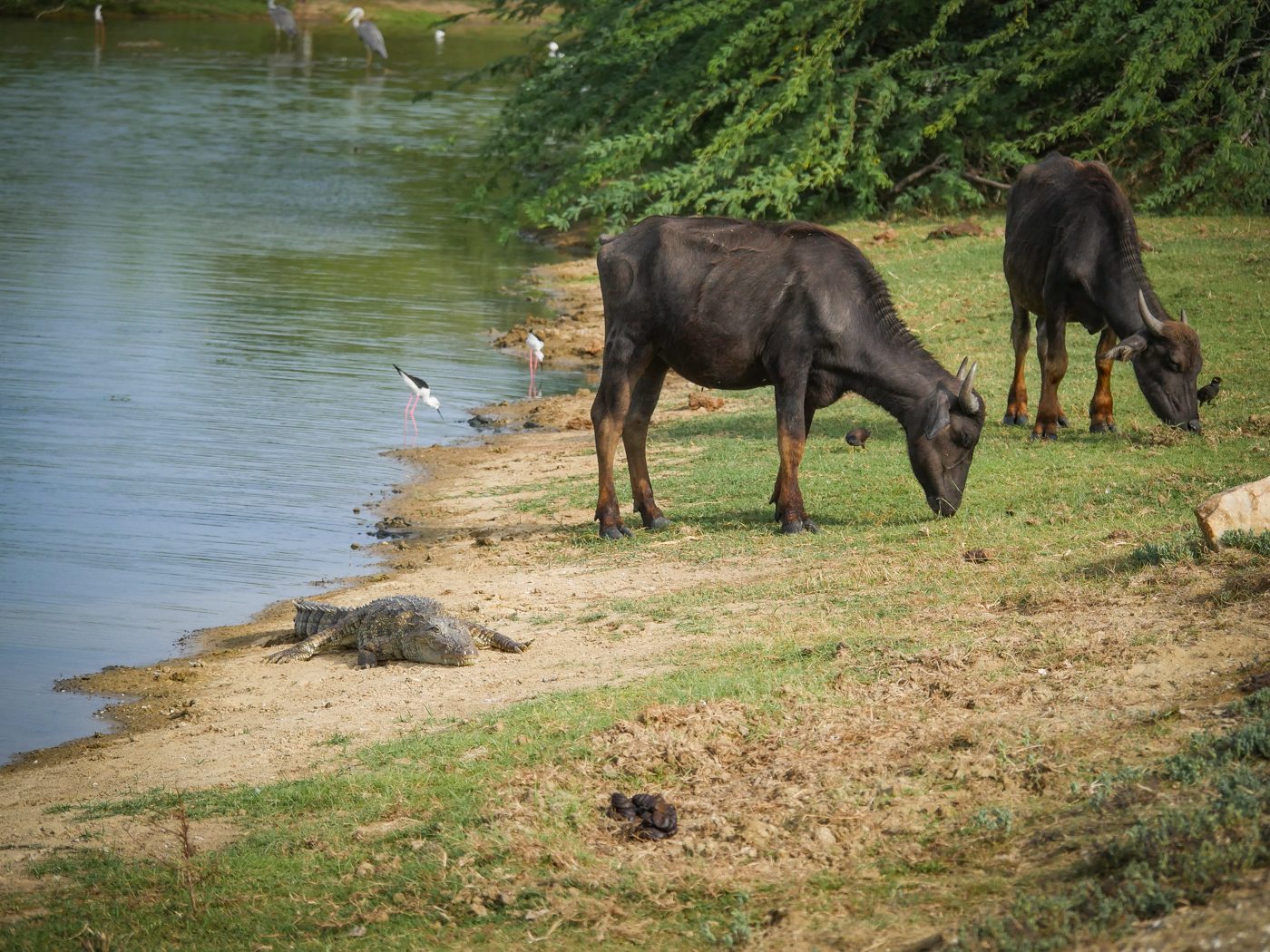
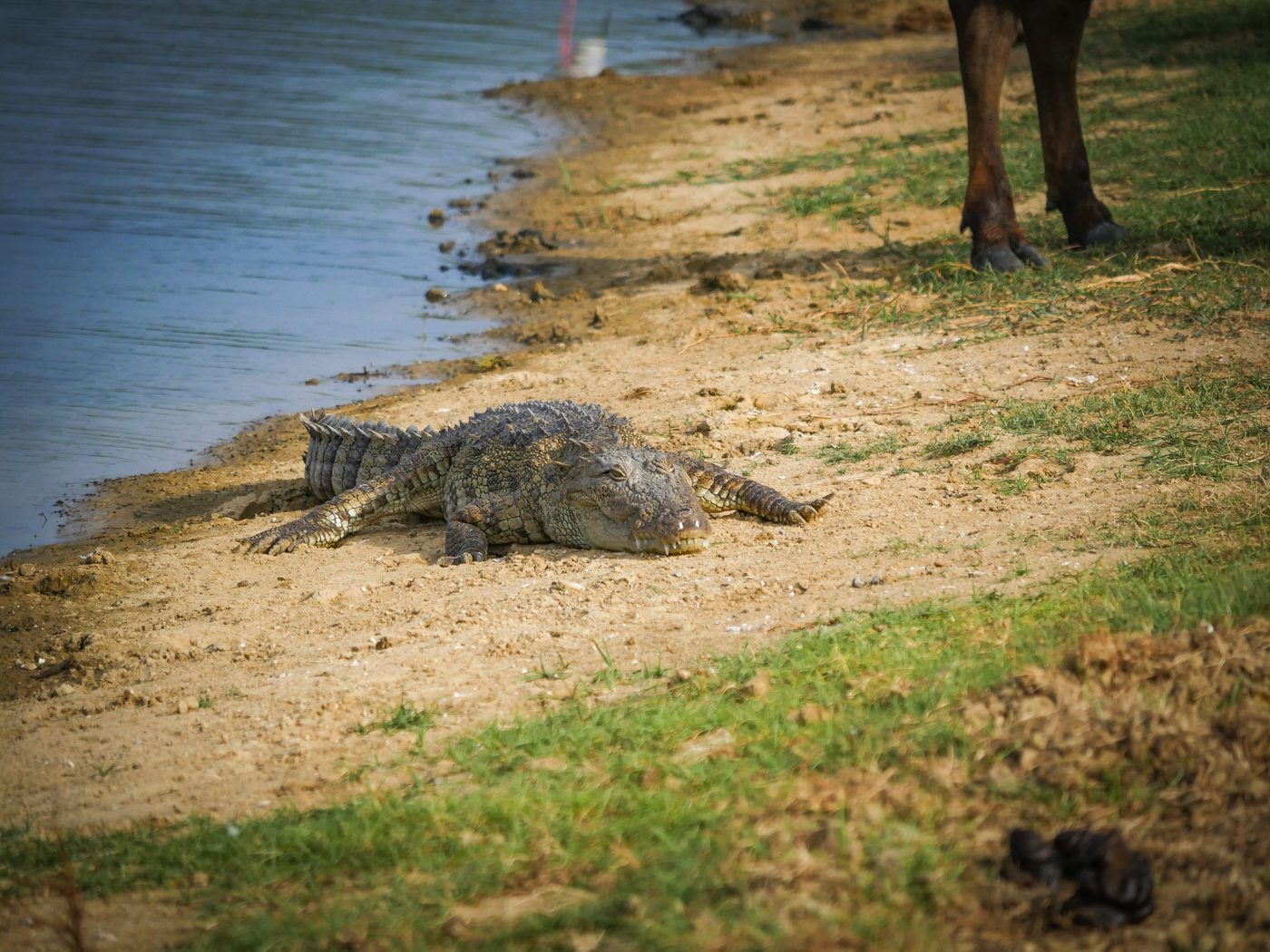
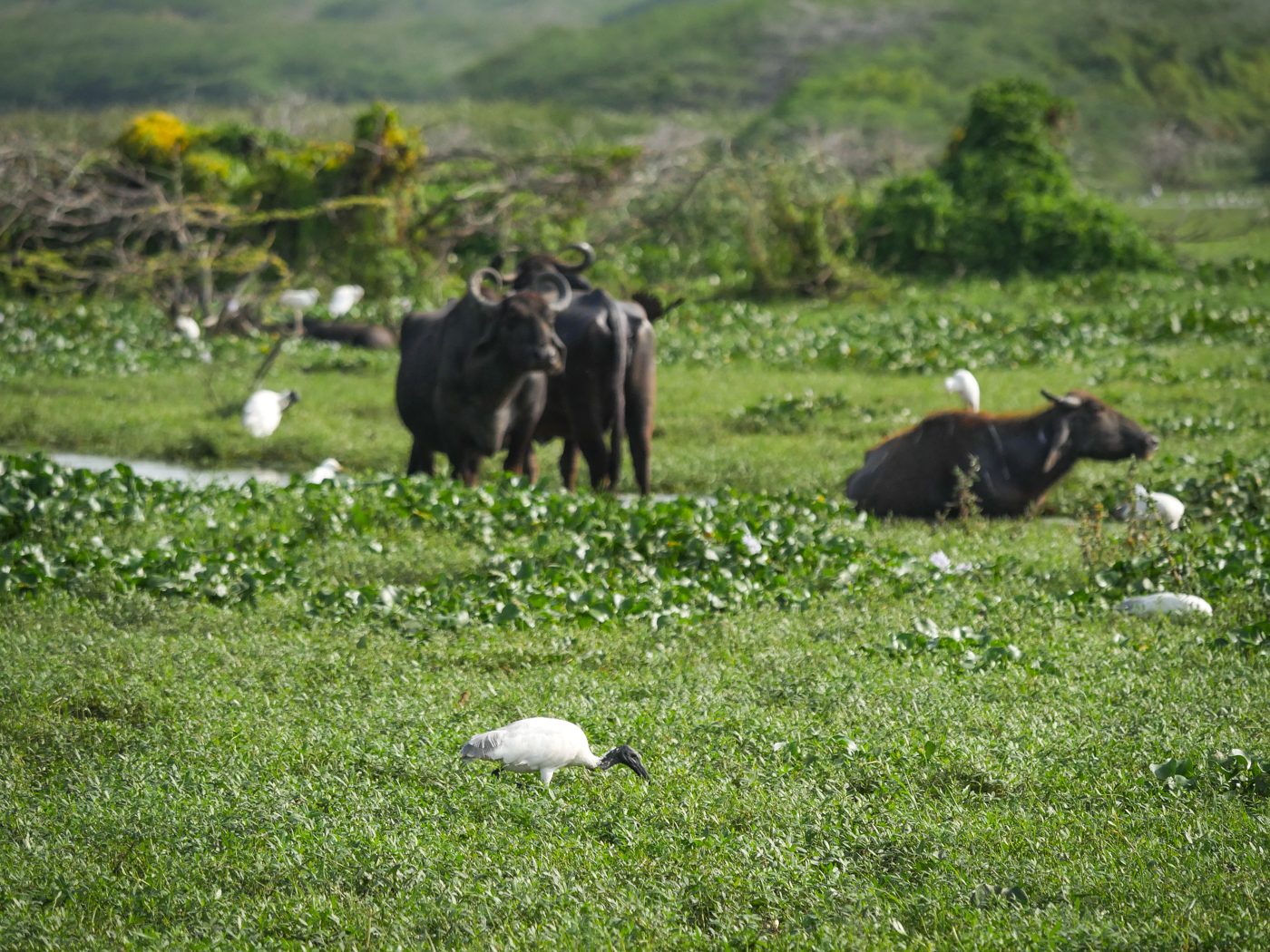
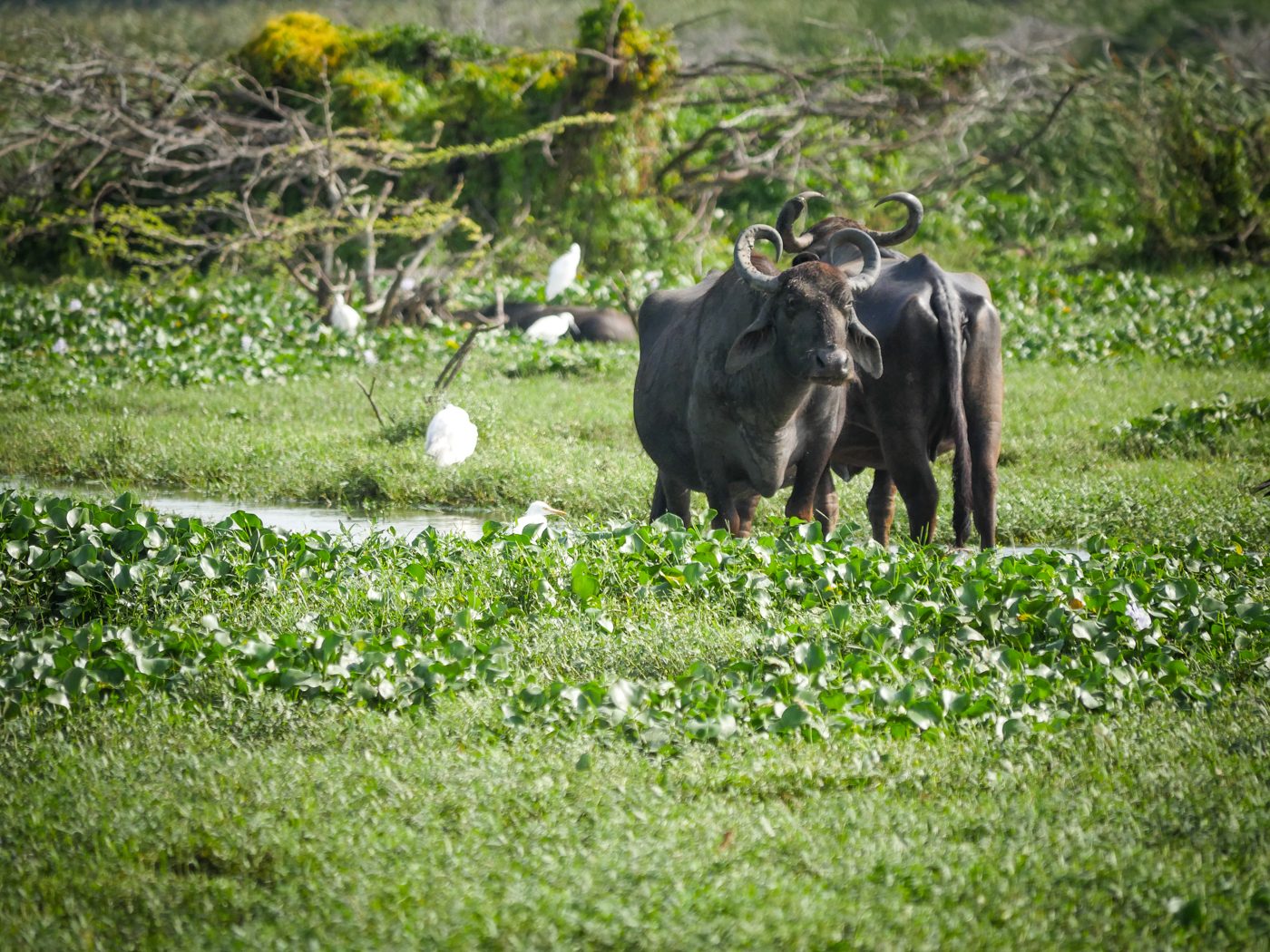
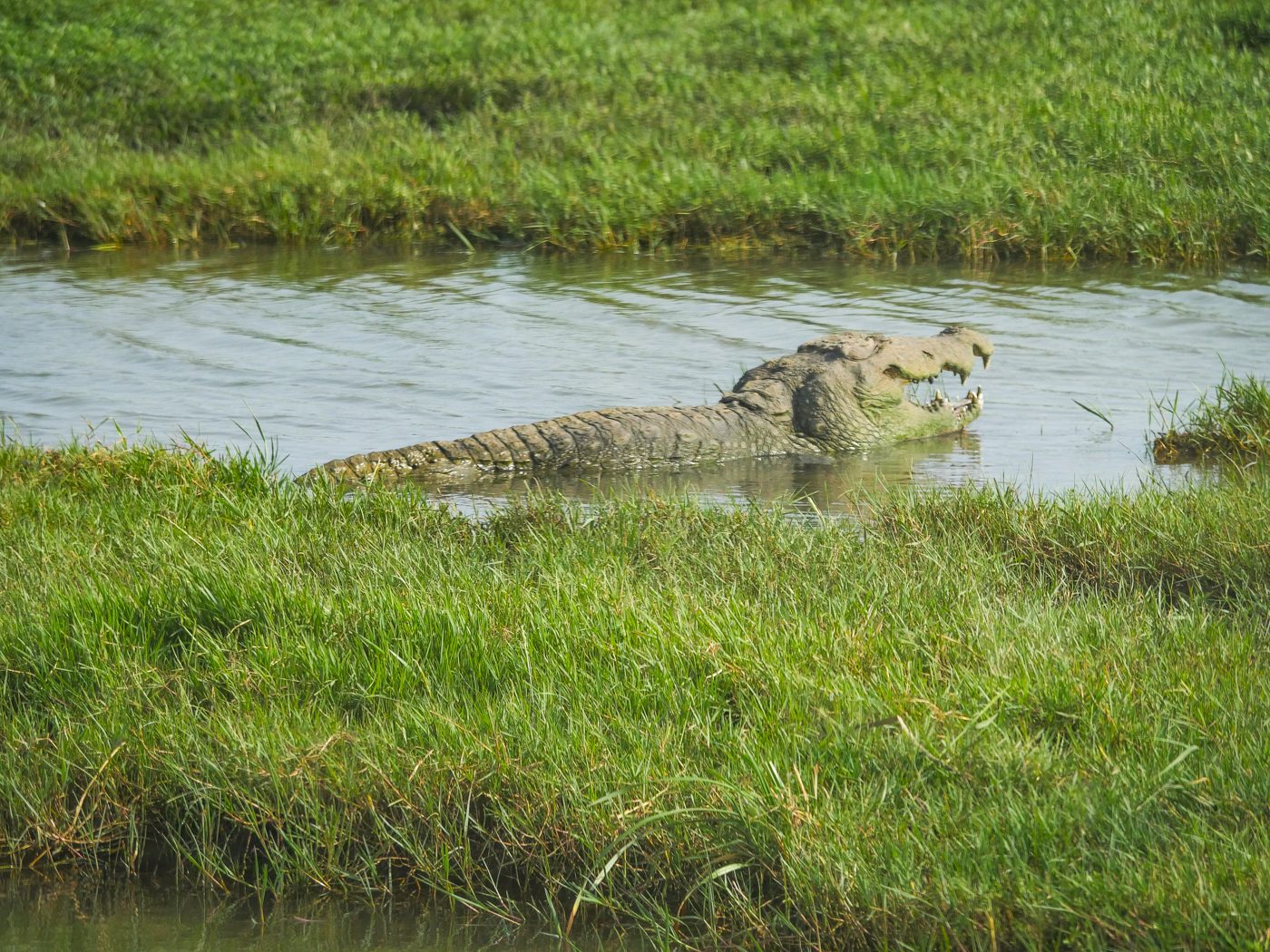
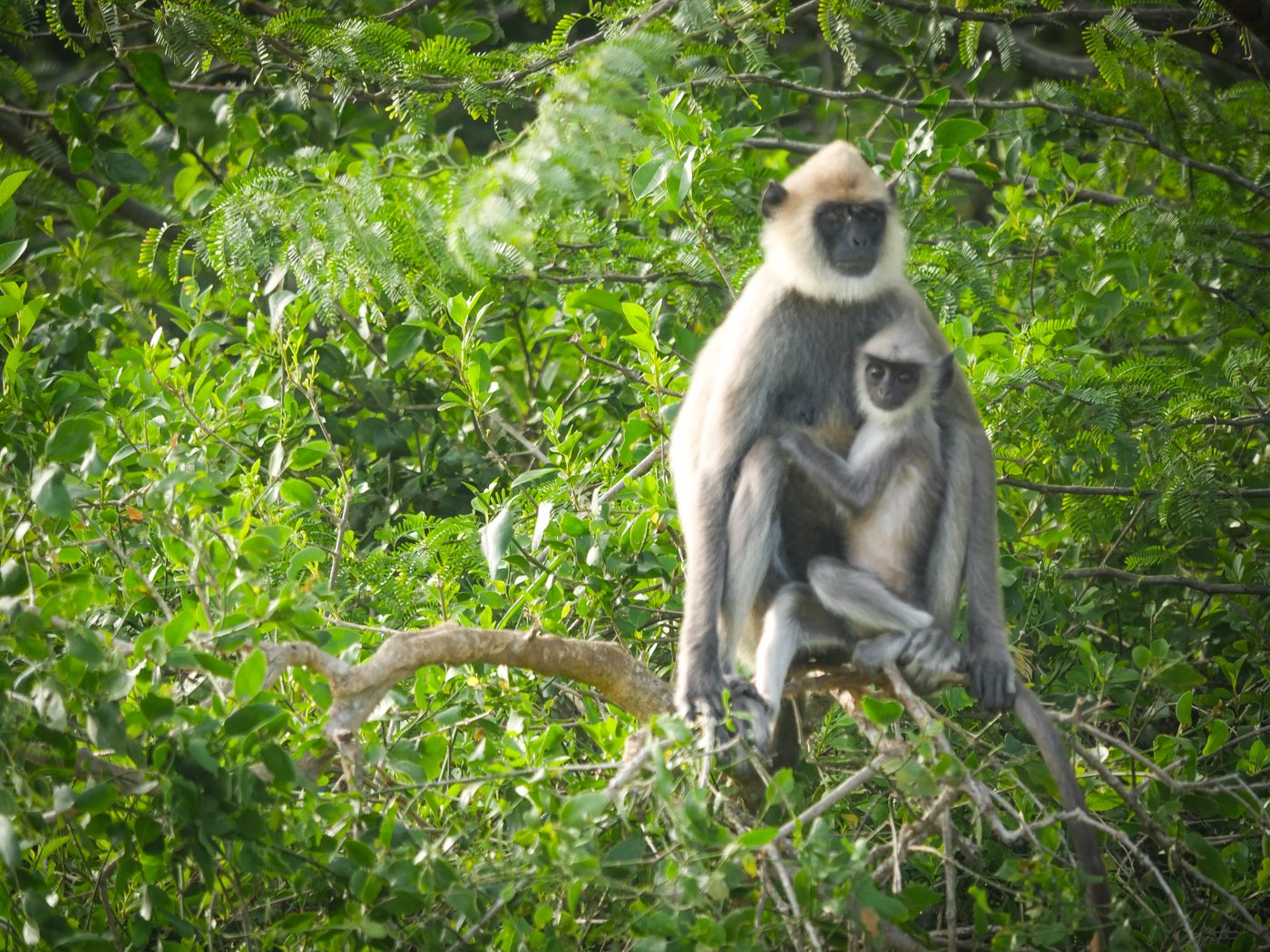
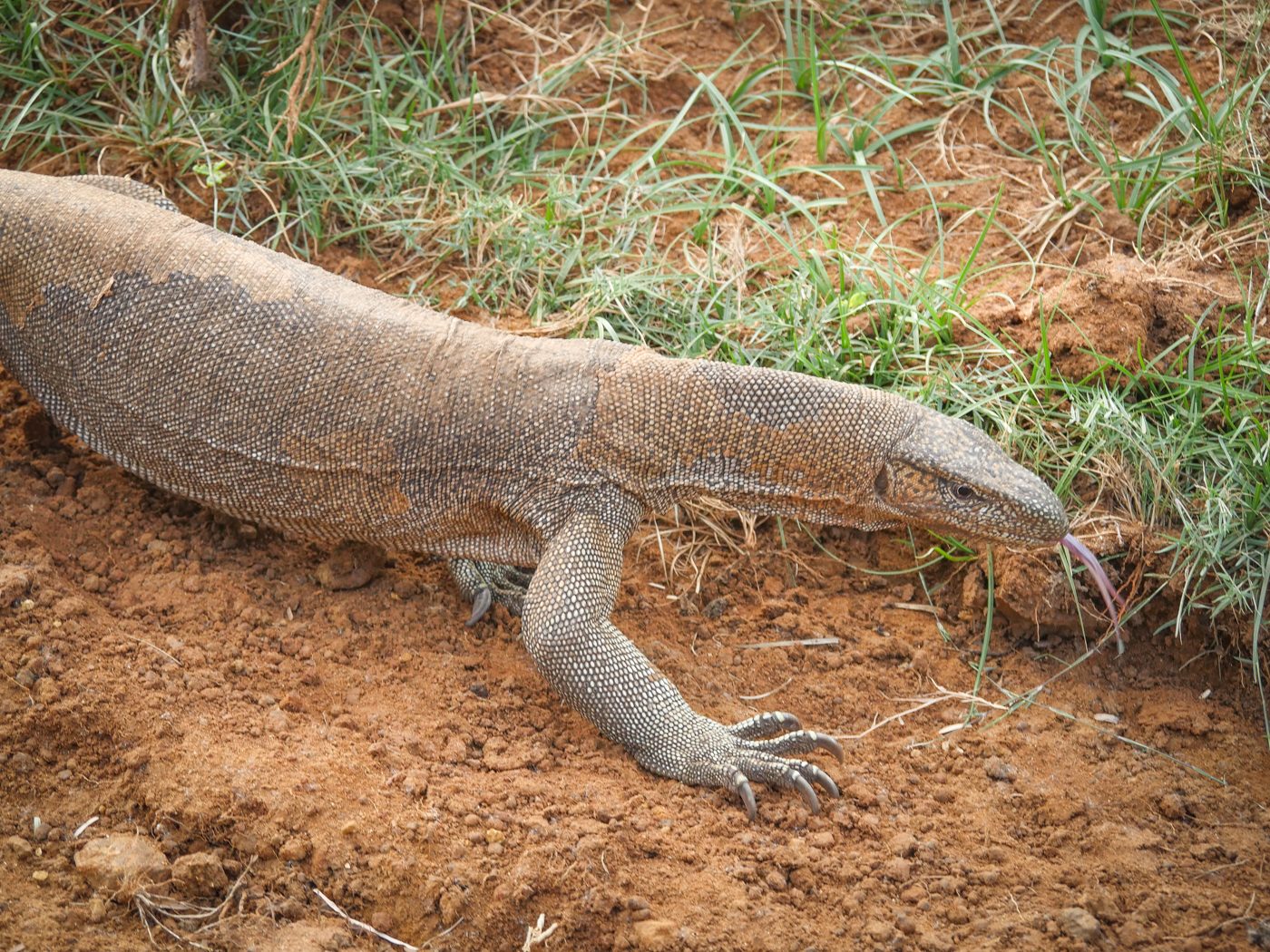
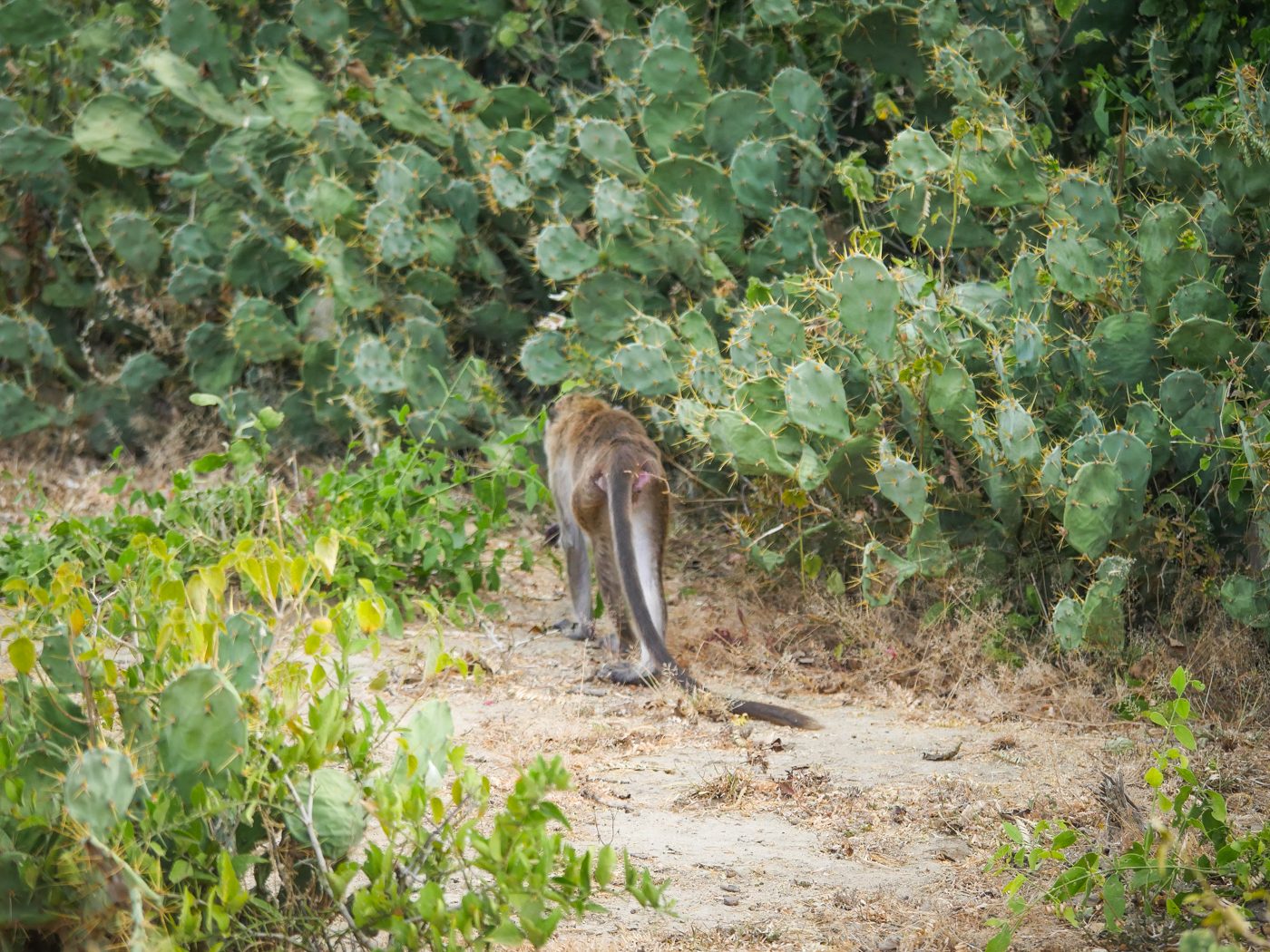
But elephants and crocodiles and monkeys were not the reason why I was come to Bundala National Park. Boasting a diverse ecosystem, the park is also home to over one hundred and ninety-five migratory birds. There are over one thousand greater flamingos to be seen, though I spotted none. The wetlands were teeming with painted storks, characterised by their heavy yellow beak, white plumage and black as well as pink tertial feathers. Parrots and pelicans there were also.
On this sweltering Wednesday afternoon, there was no other jeep in sight save ours (most people perhaps flock to Yala National Park in search of the elusive leopard), so I enjoyed the exclusivity and quietude. Just as we were about to leave the park, both the wildlife ranger and my driver shouted out: “Eagle!”. As a diehard Tolkien fan, the mention of the word “eagles” of course evokes sentimentality and a rush of excitement. There it stood, high and mighty amongst the trees, the white-bellied sea eagle, its body of white contrasting with its slate-grey wings. Far into the vast horizon it looked, buoyed by the vantage point, perhaps searching with its eyes its next meal.
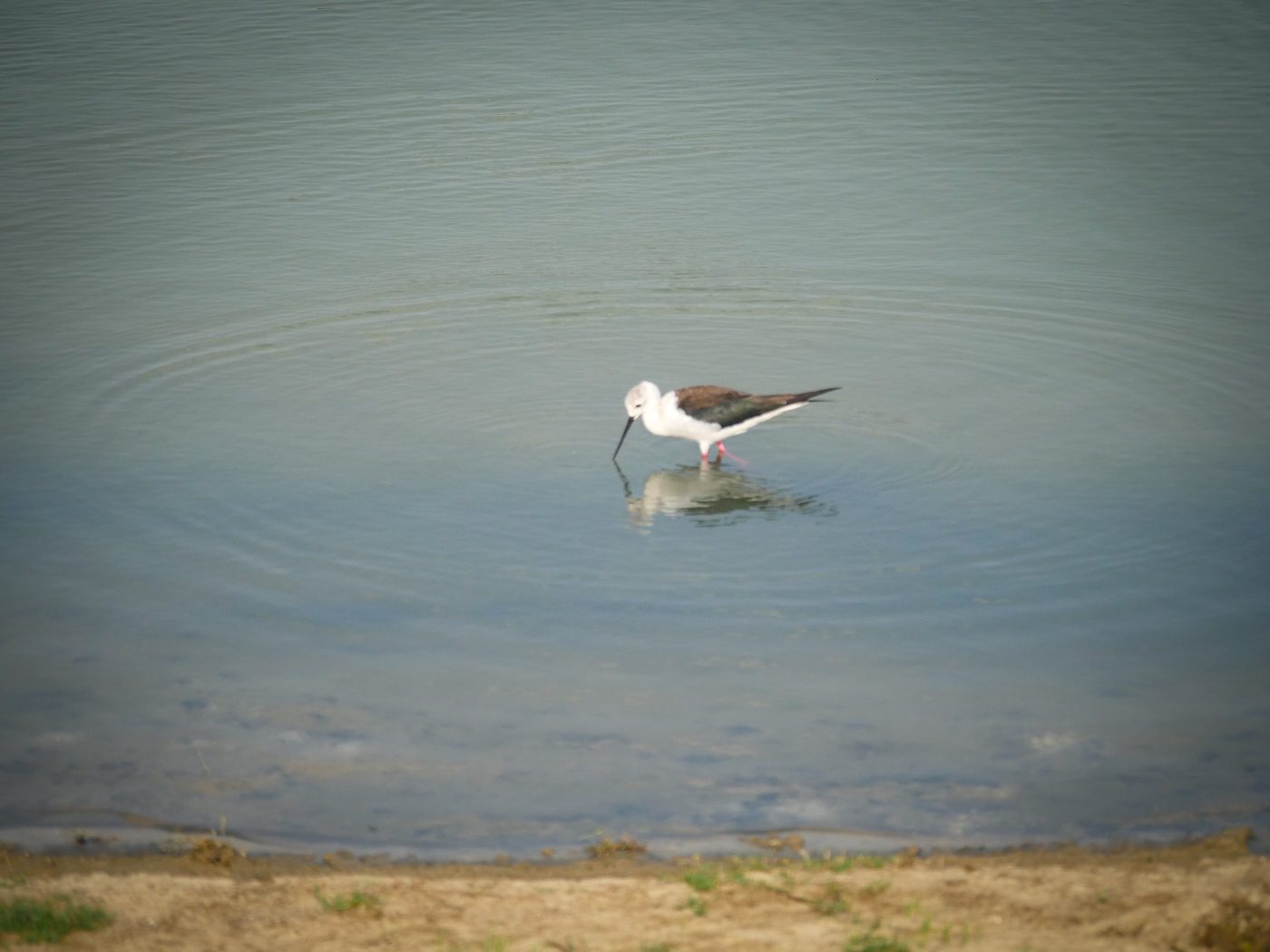
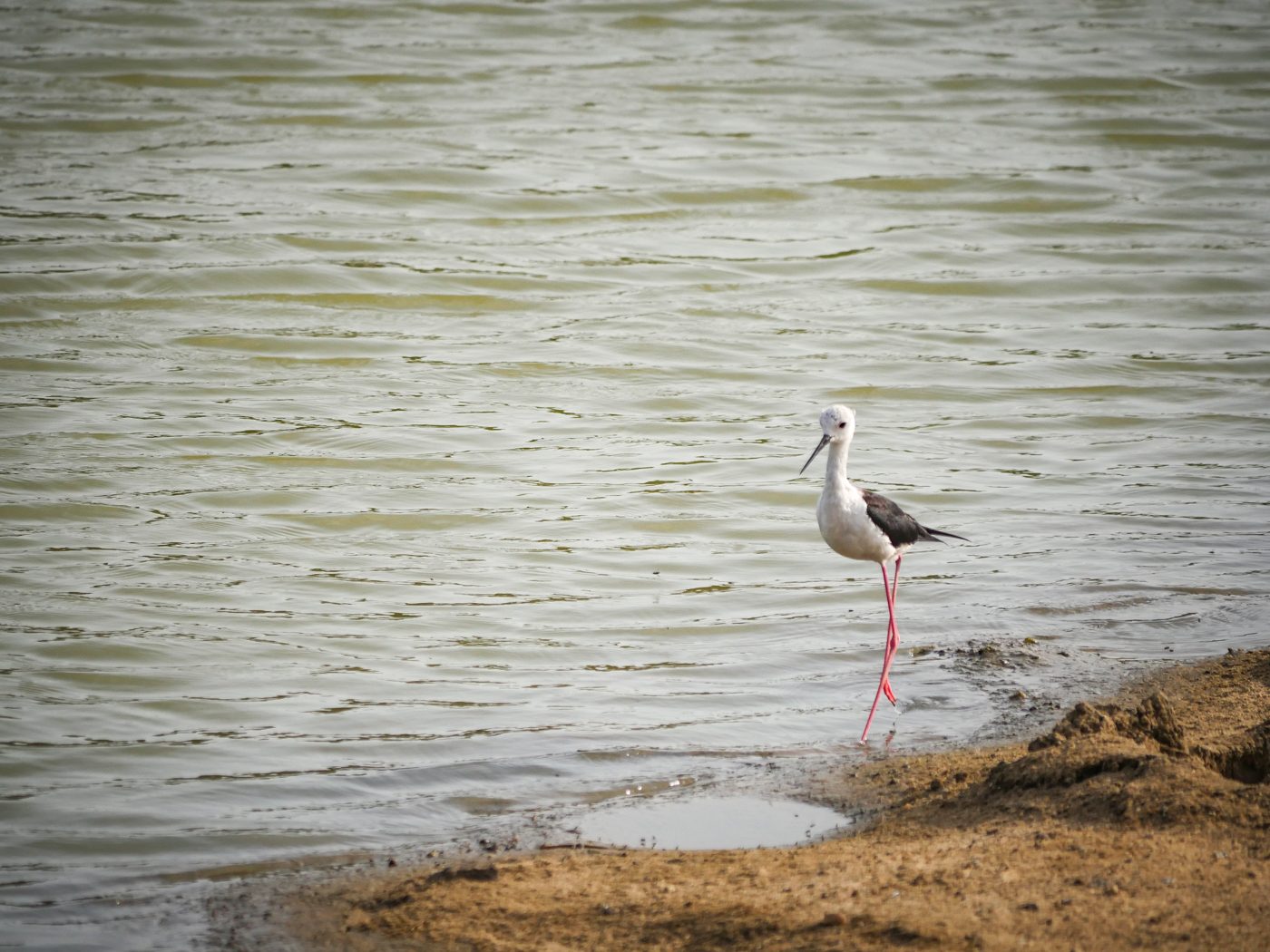
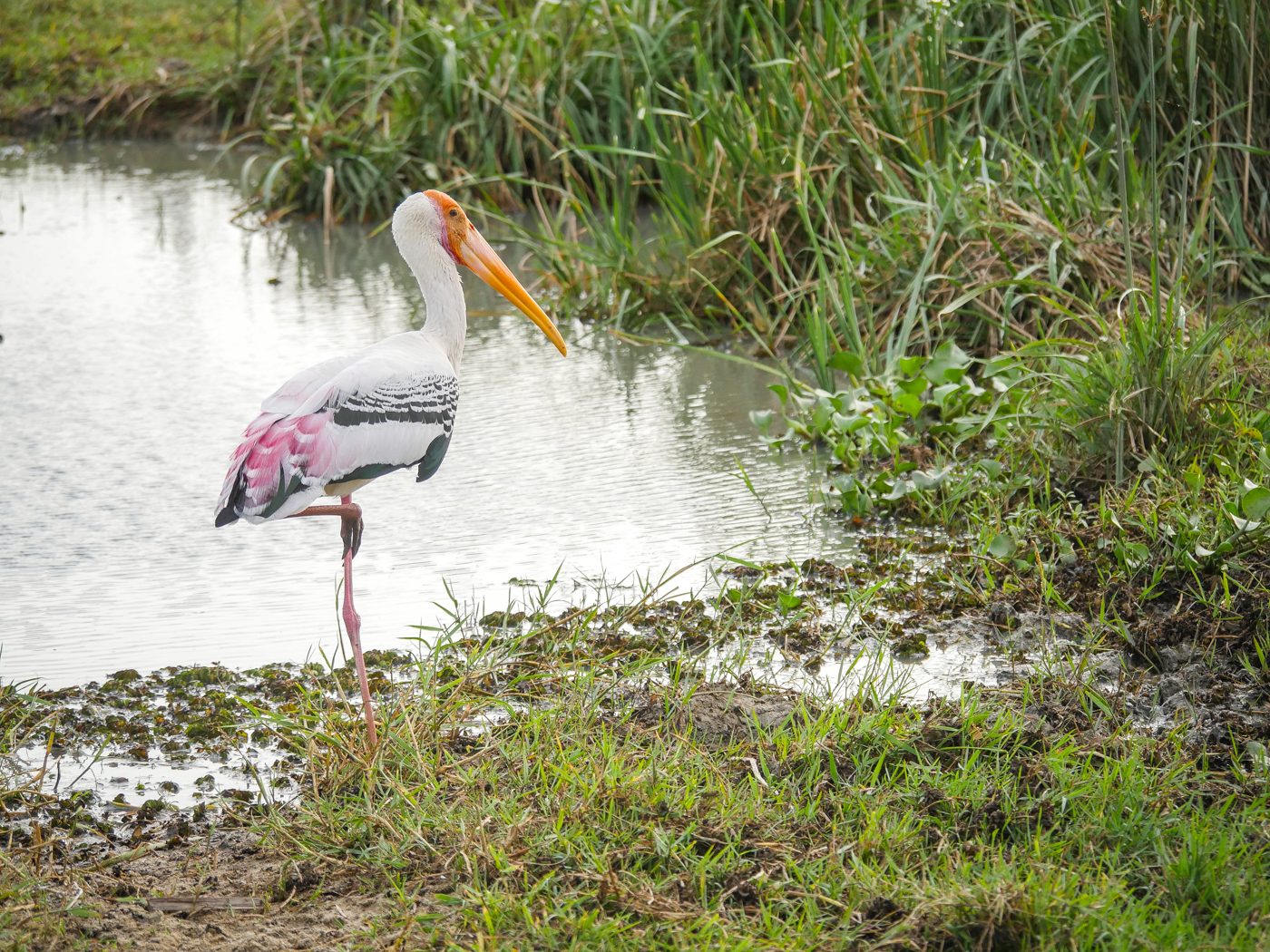
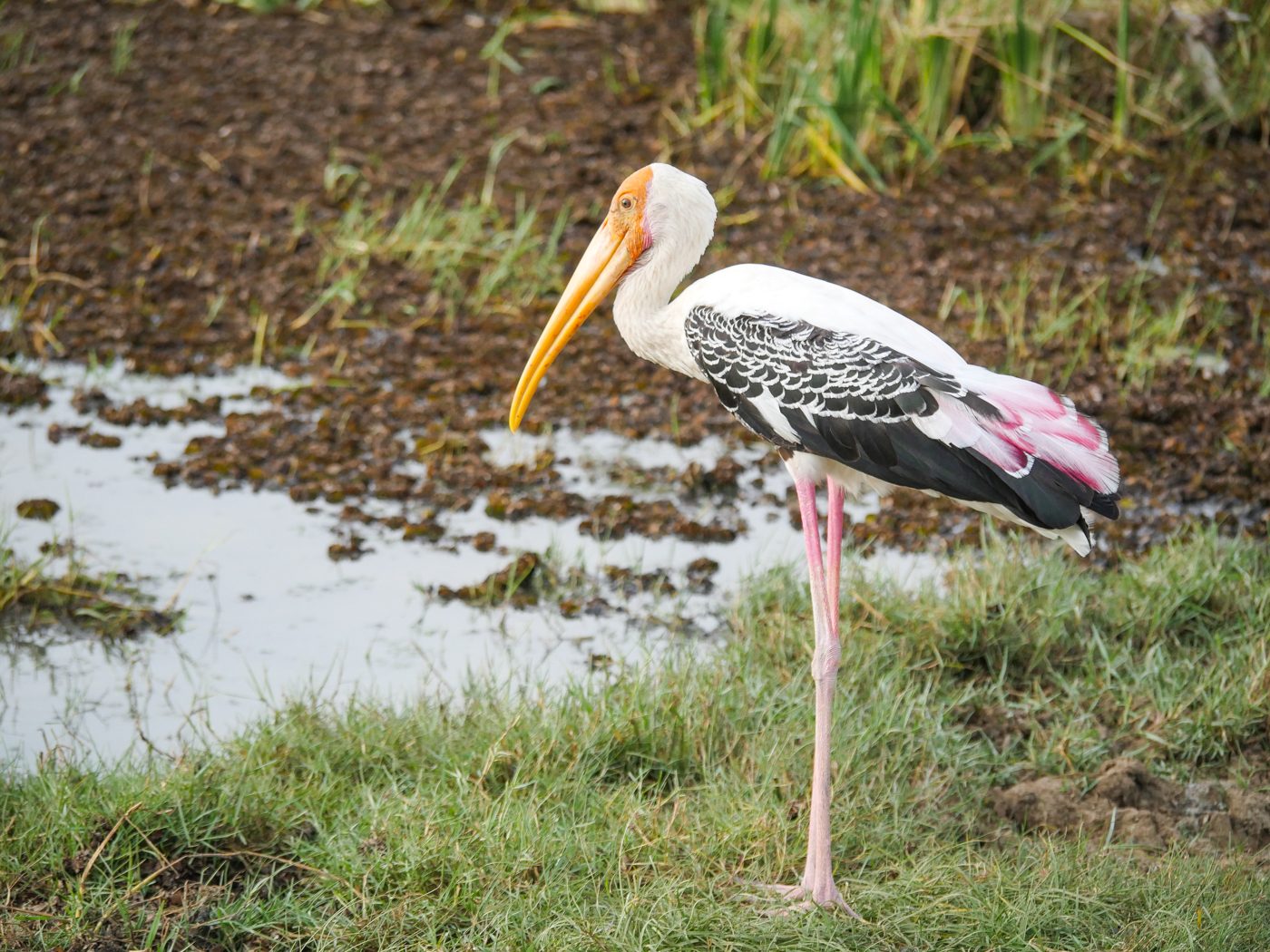
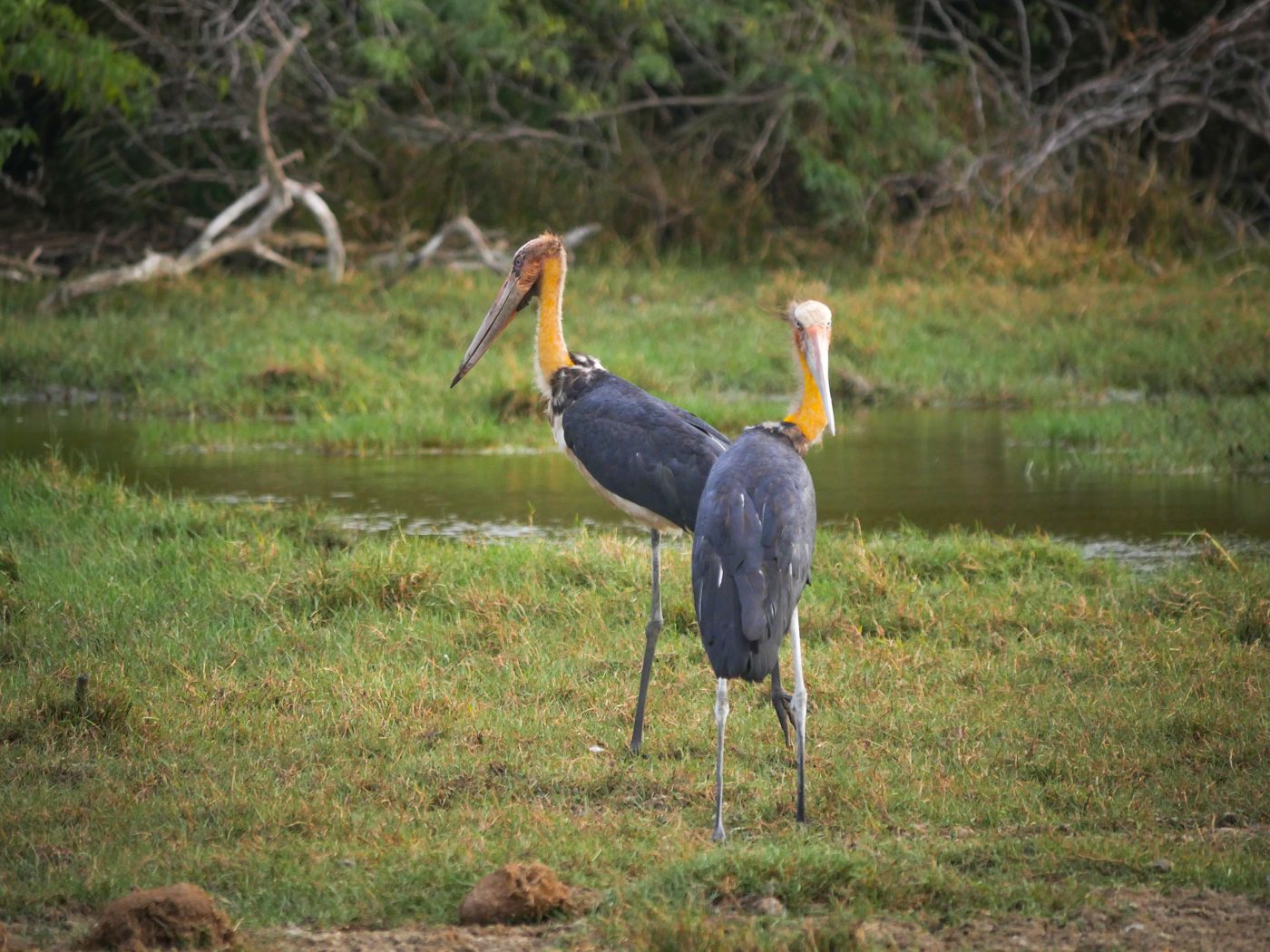
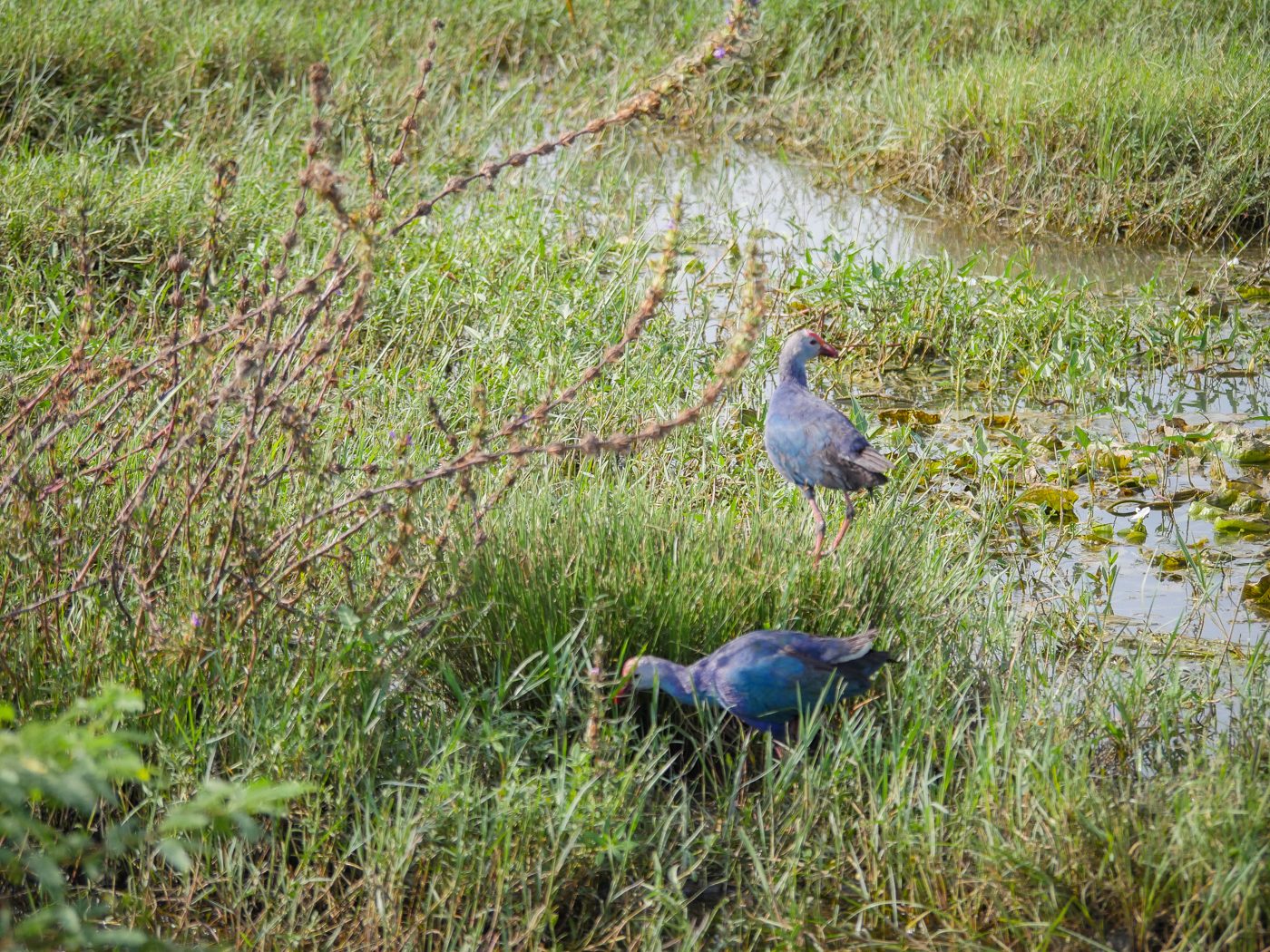
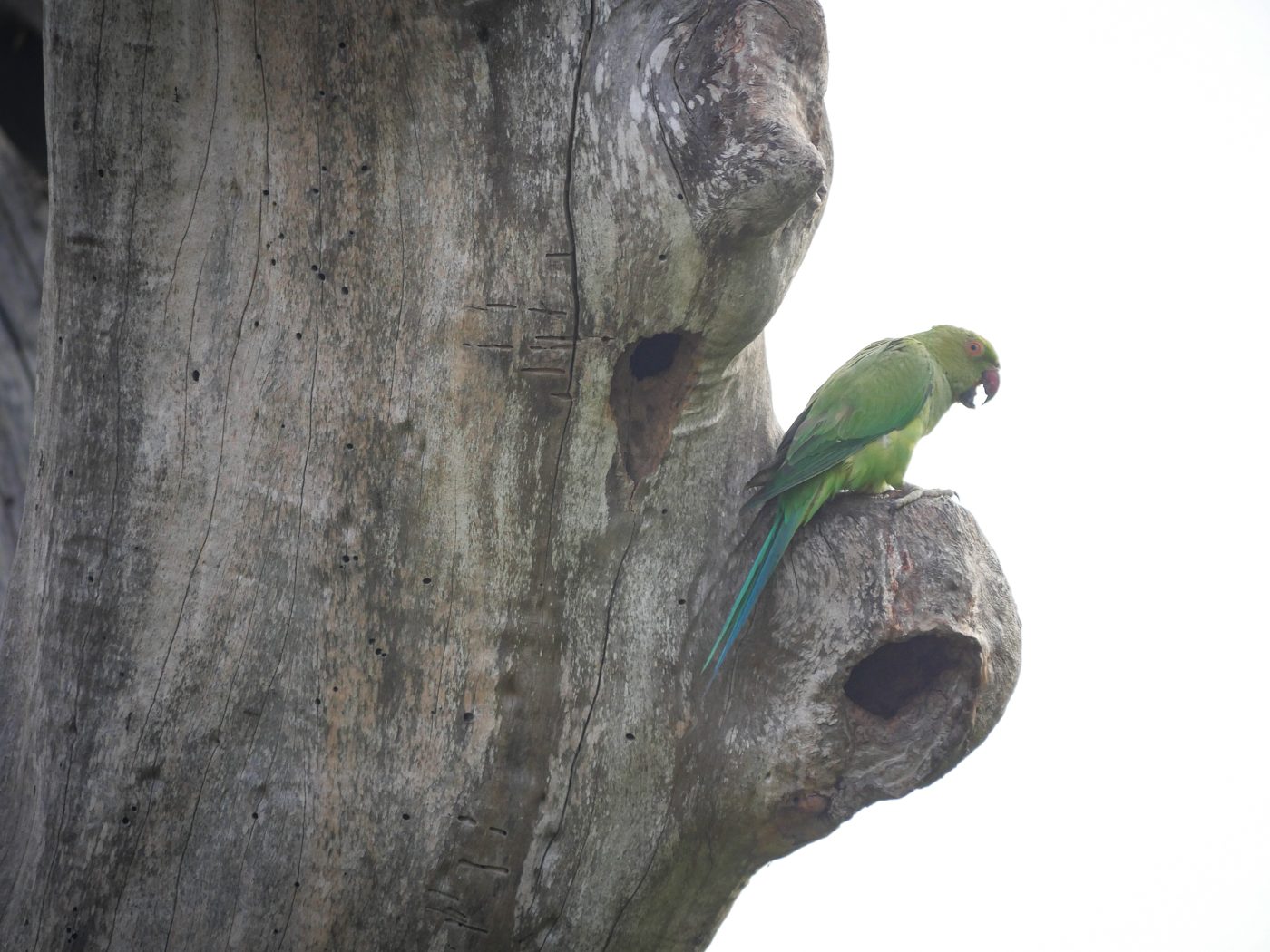
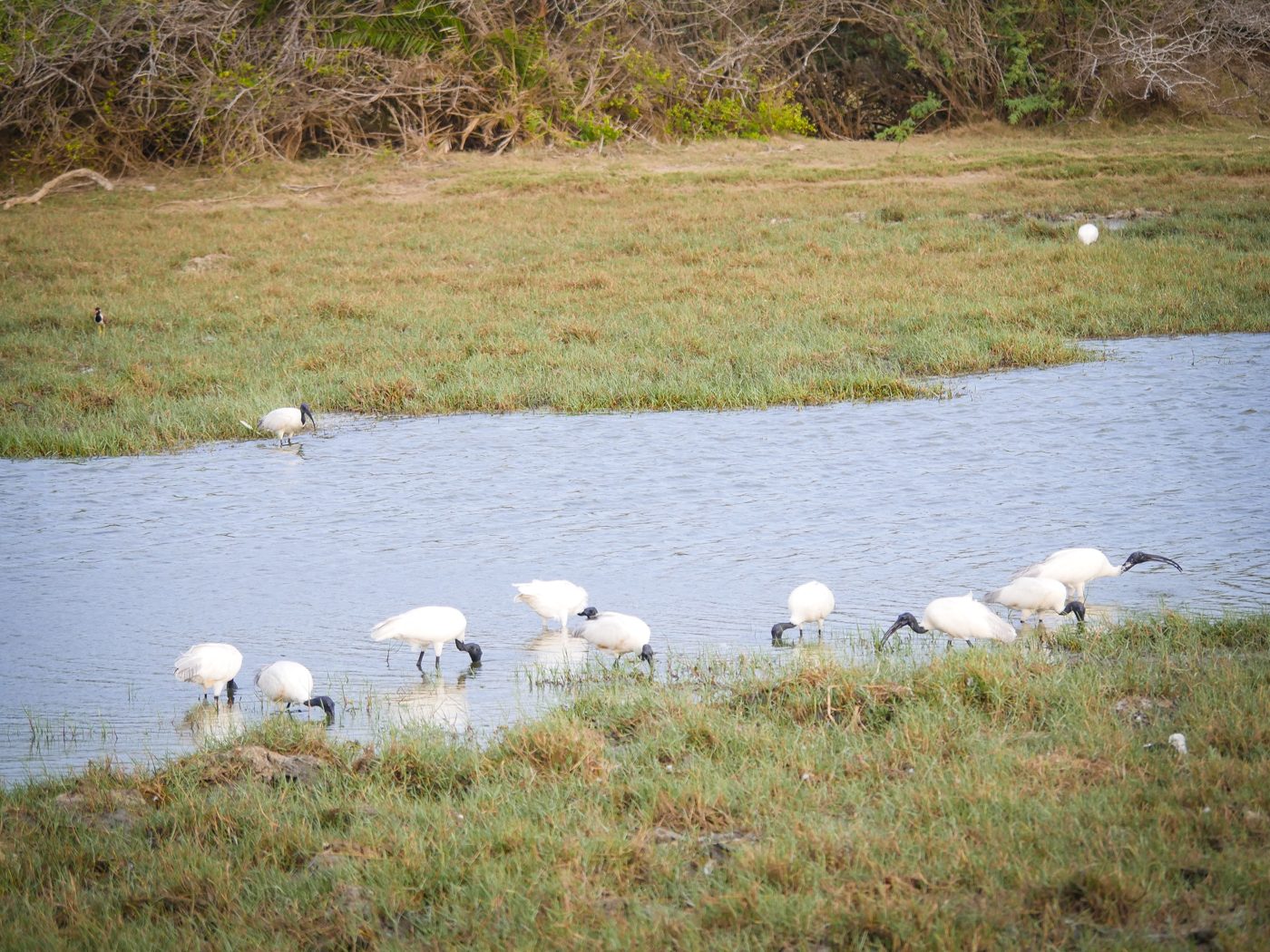
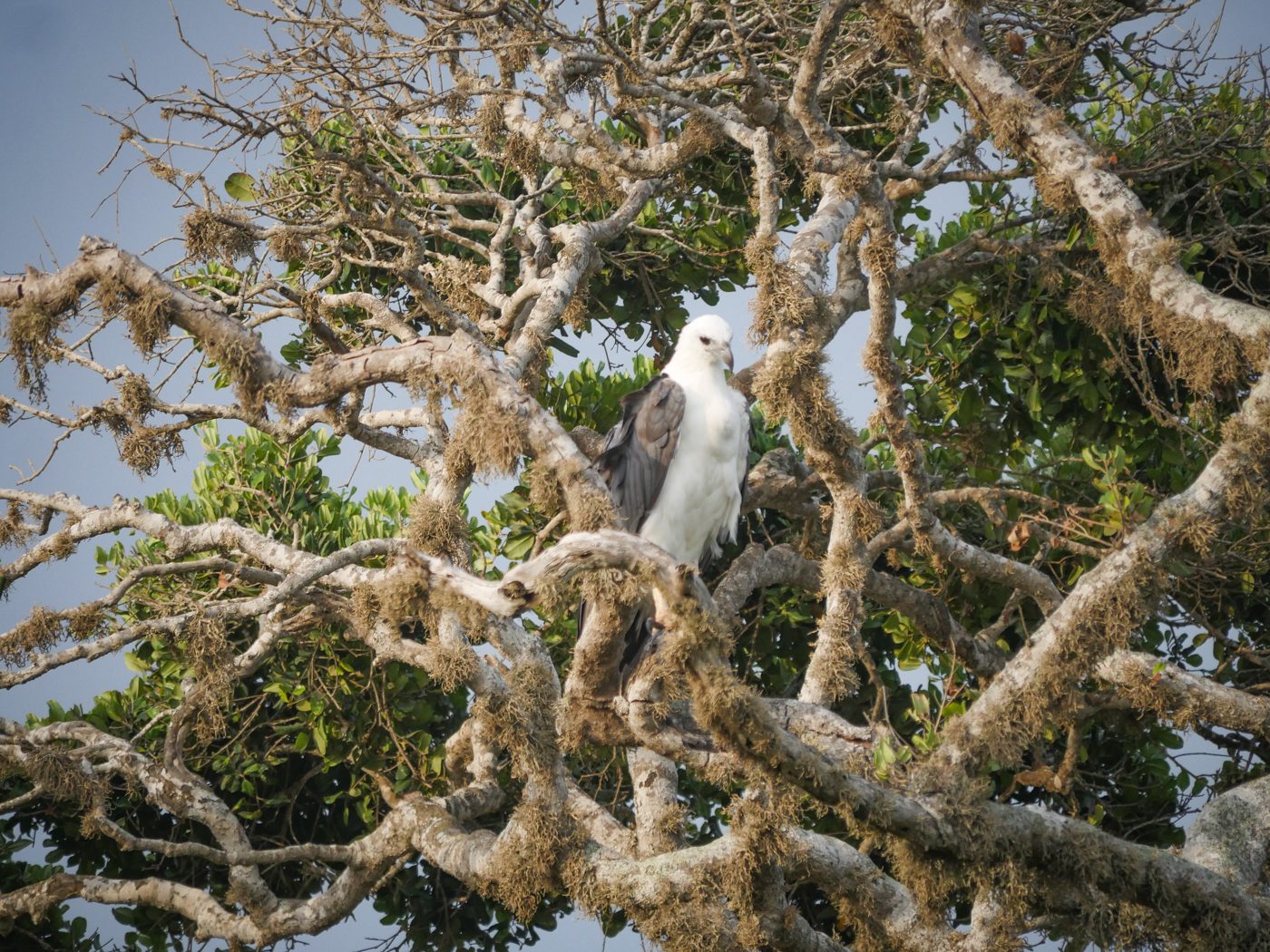
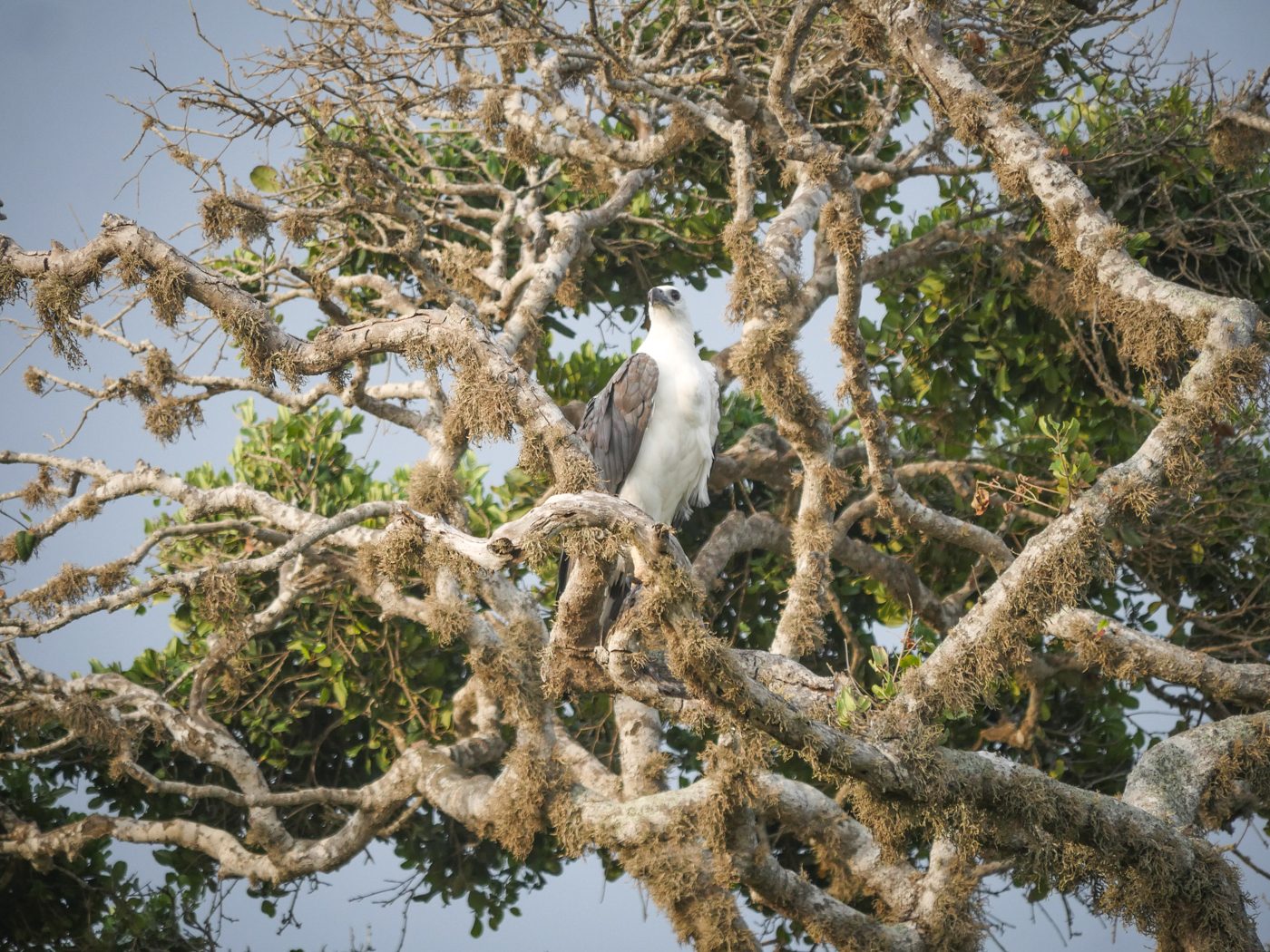
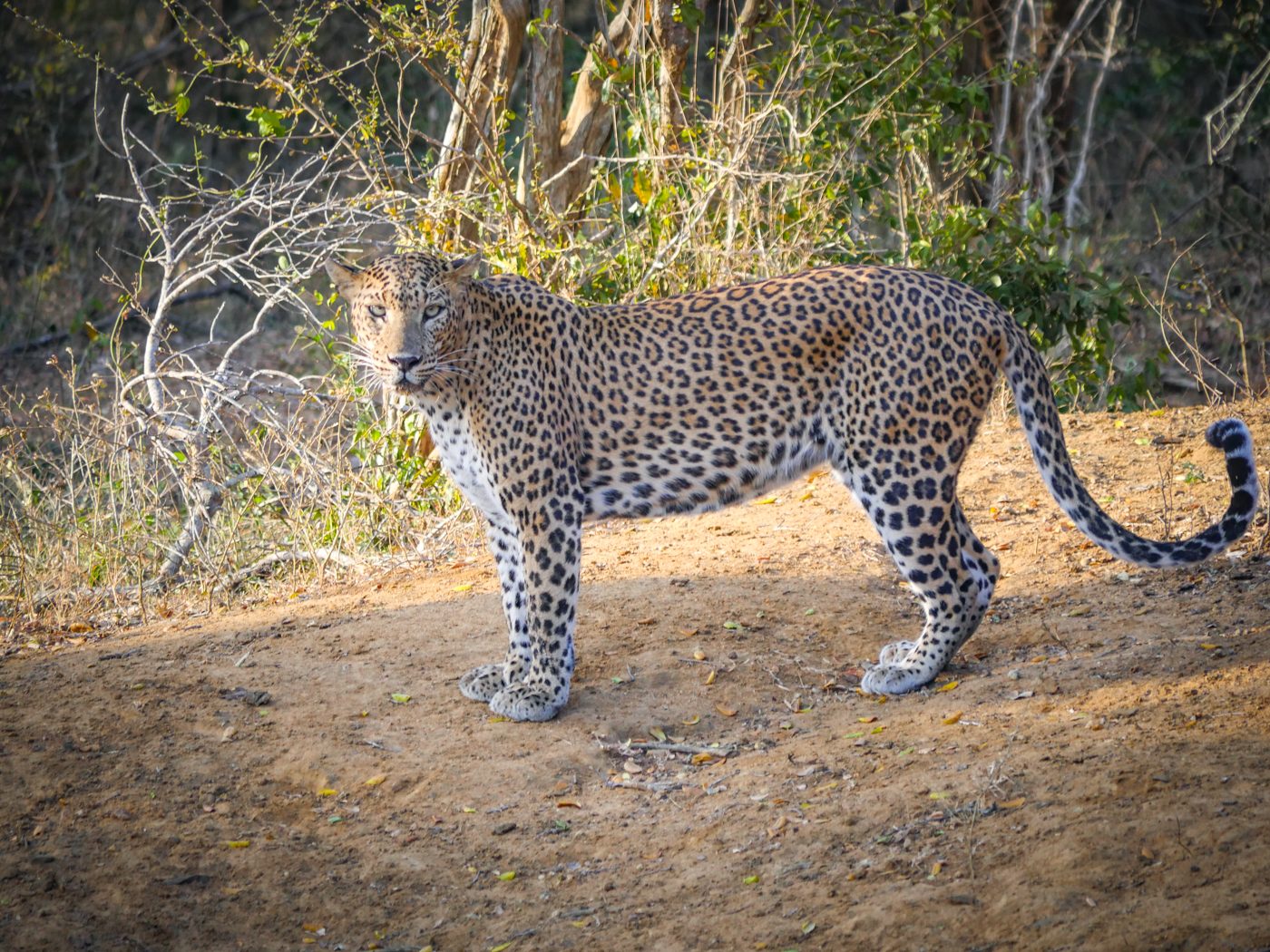
Nine in the morning, the weather in Sri Lanka was blistering, unforgiving even. Here I was, two hours into a game drive, traversing Yala National Park’s terrain winding and rough: Many times while navigating tight roads, my driver would drive the entire jeep lopsided, so that I had to grip on to the railing with all my might lest I should fall out of the doorless carriage. My forearm burnt with a sun-kissed pink, and I was already weary from the bumpy ride (going over the slightest hump at a normal speed would jerk us out of our seats), my mind blunted by inaction. Much of the land was parched, desolation of the sun, though the thicket was equal parts thriving and withered: tussocks grew next to brown and lush shrubbery that hugged tall trees. This meant that there was little incentive for the wildlife to go all the way out for sustenance.
Even by the fifth hour when the sun bent all its thought hither, my safari experience was completely uneventful. The slate-coloured water buffalos were a dime a dozen, and they were gifted with curved horns beautiful but menacing. But they are after all not the most photogenic species nature has to offer. For most part of the day, all they do is sit their stocky frames in water or graze or stand in formation staring at something yonder (guarding against predators), so interesting they are not. Every now and then, a wild boar or a rabbit would scurry in and out of view. Sambars and spotted deer there were also, venturing out for a sip, galloping away at the slightest whir of the engine; in the wild, life or death hinges on a moment of vigilance or mistake.
That was the fate of one deer, how it came to its end will forever remain a mystery. Submerged in one of the murky pools was its carcass, its head already removed. It was a complete clean cut, its executioner leaving no bloody trail. A few paces from it was a crocodile, presumably the owner of the carcass, lording over his spoils. Beside him was a fallen bole with an arm jutting skyward, the shape eerily similar to his when his mouth is agape. Perhaps it is his decoy that lures unsuspecting prey, such as the deer, into a false sense of security.
“The stench of the carcass may arouse the leopard, leading him here,” said Dulshan my tour guide, his optimistic piece of news kindling hope in me. And that was the animal I, like most people, came to Yala National Park to see up close: the panthera pardus kotiya, endemic to Sri Lanka. Leopards number thirty, sixty or a hundred in Yala National Park, depending on whose account you believe. They are solitary creatures, mating only for perfunctory reasons not pleasure, so without the sheer presence of a pride, finding them in the over nine hundred square metres of expanse is like finding a needle in a haystack. So we tarried, watching the surroundings for any trace of a leopard. I imagined what an epic showdown it would be, reptile versus cat, both matched in cunning, ferocity and strength. Such luck we had not, and so we finally moved on.
Just then, my driver’s phone rang, and uttering something he turned the vehicle around, changed gear, and broke away with breakneck speed. Many vehicles before us did the same, whipping up a cloud of sand that blotted from sight the end of the road. When we arrived at the destination, there already was a fleet of jeeps. All the commotion was for a trio of elephants, including an adorable baby one, enjoying respite from the heat with some splash of water. Amidst a sea of upraised hands and vehicles that blocked the view, it was hard to soak in the scene.
